
PROFESSIONAL COIN GRADING SERVICE | PCGS.COM MAY - JUNE 2023 | $14.95 MARKET REPORT PCGS COIN OF THE ISSUE 1826/6 Capped Bust Quarter Eagle, PCGS MS61 THE COINS OF FRANK GASPARRO THE SHIP OF GOLD The Numismatic Art of a Generation Docking at the June Long Beach Expo
WE ARE ALWAYS ACCEPTING QUALITY CONSIGNMENTS!
CONSIGN NOW TO THE REGENCY AUCTION
Whether you have a complete collection, a few duplicates, or a single fabulous rarity, our team of auction experts will craft a plan for you to maximize the value of your coins. Call us today!



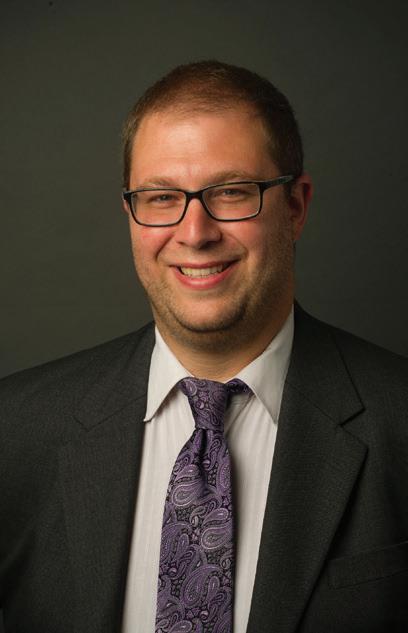




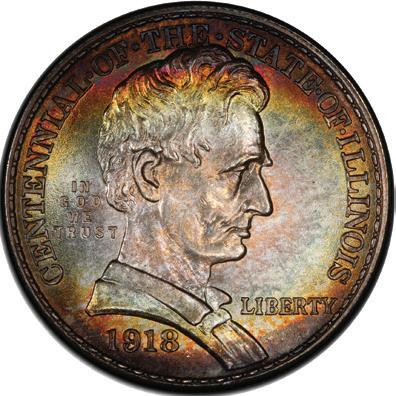
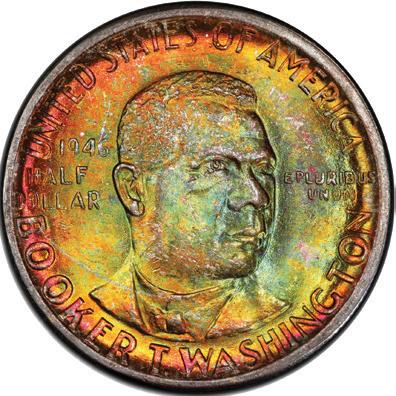


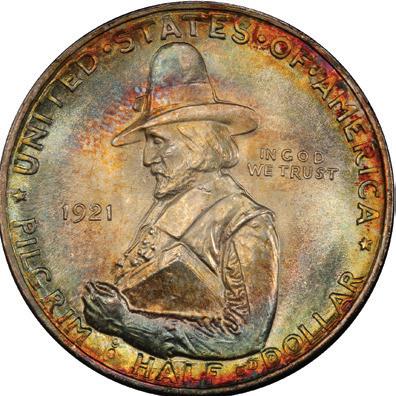


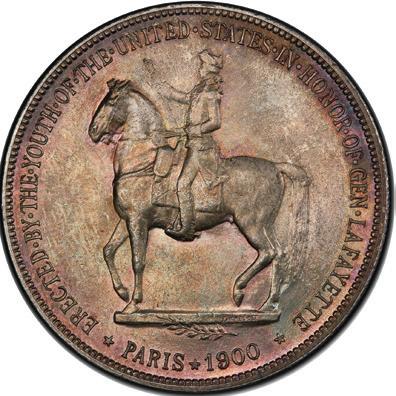
INFO@LEGENDAUCTIONS.COM • 732-935-1168 WWW.LEGENDAUCTIONS.COM GREG COHEN SENIOR NUMISMATIST 732-935-1168 JESSICA BERKMAN
732-935-1168
PRESIDENT
50C 1915-S PANAMA-PACIFIC PCGS MS66+ CAC
50C 1922 GRANT, WITH STAR PCGS MS67 CAC
50C 1918 LINCOLN PCGS MS66+ CAC
50C 1946-D BOOKER T. WASHINGTON PCGS MS68 CAC
50C 1921 PILGRIM PCGS MS67+ CAC
$1 1900 LAFAYETTE PCGS MS67 CAC
A Collectors Universe Company www.PCGS.com
Editor-in-Chief Joshua McMorrow-Hernandez
Advertising Director Rebecca Tran
Content Manager Arianna Tortomasi
Lead Designer James Davis
Cover Artist Darnell Dialls
Numismatic Photographer Phil Arnold
Distribution Coordinator Ronald Burnett
Subscriptions:
Single Issue: $14.95
One-Year Subscription (6 Issues): $79.99
PCGS Market Report is offered as a premium to PCGS Authorized Dealers and PCGS Collectors Club members.
To become a PCGS Authorized Dealer, contact: Dealer@PCGS.com
To become a PCGS Collectors Club member, go to www.PCGS.com/join
Printed in the United States. Copyright 2023 Collectors Universe, Inc. All rights reserved. Reproduction of any kind without written permission of the publisher is prohibited by law. PCGS Market Report is published bi-monthly by Collectors Universe, Inc. at P.O. Box 9458, Newport Beach, CA 92658. Postmaster, send address change to Market Report c/o PCGS, Publication Department, P.O. Box 9458, Newport Beach, CA 92658.
Publication of this magazine is not a solicitation by the publisher, editor, or staff to buy or sell the coins listed herein.
Advertising, articles, and other contents of this magazine sometimes contain inadvertent typographical errors, a fact readers should bear in mind when encountering pricing quoted at a fraction of prevailing market values. The publisher is not responsible for actions taken by any person because of such errors. Advertising prices are subject to change without notice.
HAVE QUESTIONS OR FEEDBACK?
Think our pricing is too low? Too high? Email us at CoinPrices@Collectors.com with the coin number, description, grade, published price, proposed price, reasoning, and supportive evidence (like auction results). We'll be happy to review it!

For advertising and content inquiries please email us at PMR@PCGS.com
SPEAKING OF COINS
With spring turning to summer, our minds turn to cookouts, vacations, and time by the surf and shore. We also begin revisiting some of our collecting goals for the year and consider what we will need to tackle with our sets moving forward, especially if we want to elevate our collections to that next tier before the end of the year – which is already beginning to look closer and closer. Many of us will be attending at least one of the big coin shows still on the calendar, and several of these landmark conventions will be happening in the summer months of June, July, and August. One of the biggest of these is the June Long Beach Expo, which is being held June 22-24, 2023, at the Long Beach Convention Center and features treasure from the famous "Ship of Gold" – the S.S. Central America , which sank in 1857. We include a preview of this fascinating exhibit and the June Long Beach Expo in this issue of PCGS Market Report
Also in this issue is a deep dive into the numismatic art of Frank Gasparro, one of the most prolific United States Mint sculptor-engravers of the 20th century. Among his design credits are the Lincoln Memorial Cent, Kennedy Half Dollar, Eisenhower Dollar, and Susan B. Anthony Dollar. Modern Chinese coin expert Peter Anthony explores the treasures of the Sichuan, and we meet a collector known as Winesteven, whose expansive cabinet consists of more than 65 PCGS Registry Sets! We also include columns by all of your favorite PCGS coin and banknote experts, and we’ll introduce you to a young numismatist who puts his money where his cash register is… We’ll explain.
Finally, you’ll get to find out more about the spectacular PCGS Coin of the Issue, which is a stunning 1826/6 Capped Bust Quarter Eagle graded PCGS MS61. Paradime Coins is offering this magnificent coin, which is one of the very best examples of this rare issue you’ll find anywhere.
We hope you’ll visit the Long Beach Expo in June. Don’t forget, we have a full slate of PCGS Members Only Shows on the docket, and we’ll be appearing at several other big shows happening around the country over the next few months. Our goal is to give you plenty of opportunities to come on out and meet some of the PCGS team, learn from our experts, and submit coins and banknotes in a fun and convenient setting. Maybe we’ll see you there?
Until then, enjoy this jam-packed issue of the PCGS Market Report !
Joshua McMorrow-Hernandez Editor-in-Chief, PCGS Market Report

2 MAY - JUNE 2023 PCGS MARKET REPORT
MARKET REPORT
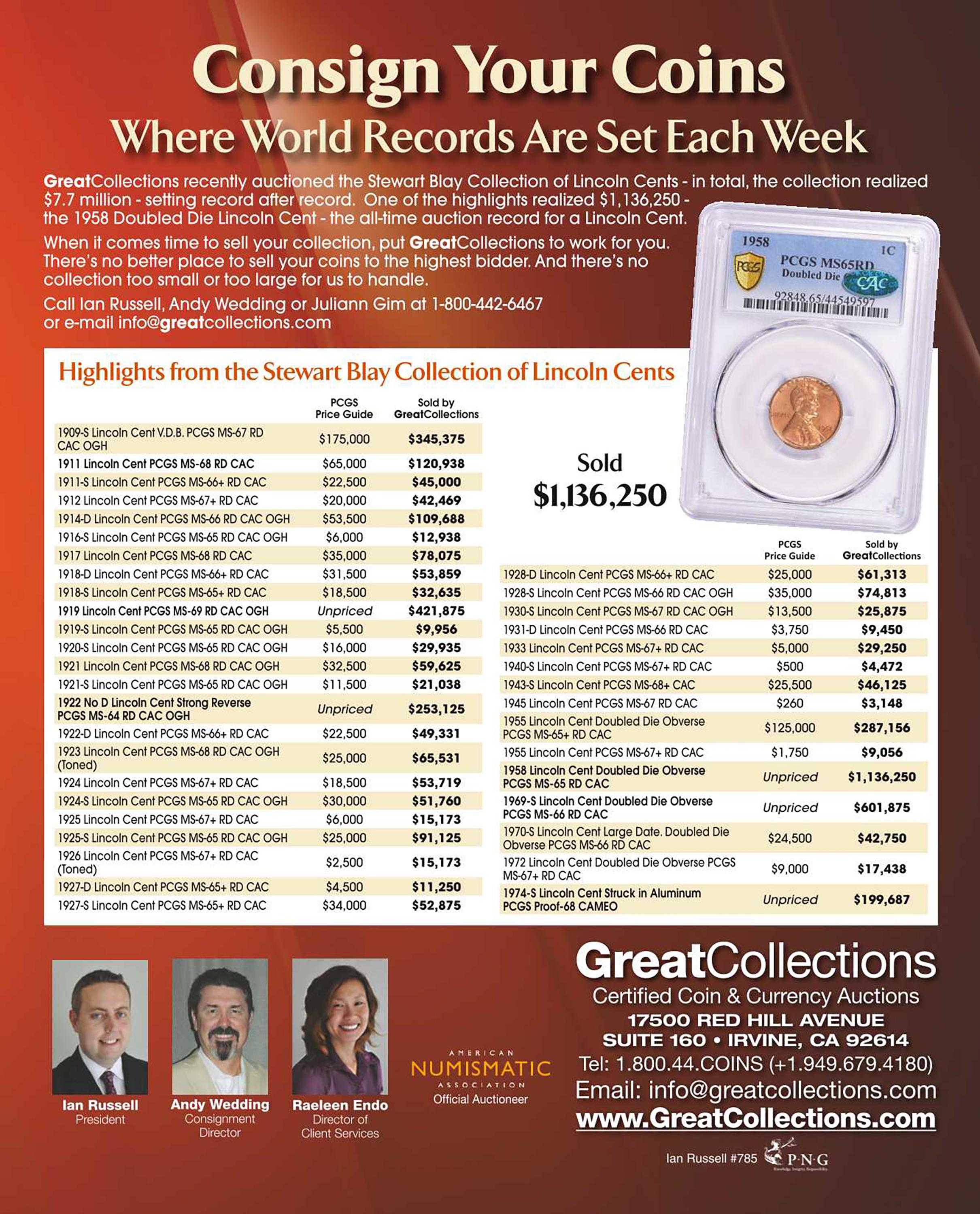
Americ a’s Oldest and Most Accomplishe d R are C oin Auctione er SB G PCGS MR SpringPR_ConsignAug 230501 LEGENDARY C O LLECTI O NS | LEGENDARY RES ULT S | A LEGENDARY AUCTI O N FIRM 1550 Scenic Ave., Ste. 150, Costa Mesa, CA 92626 • 949.253.0916 • Info@StacksBowers.com • StacksBowers.com 470 Park Ave., New York, NY 10022 • 212.582.2580 • NYC@stacksbowers.com 84 State Street, Boston, MA 02109 • 617.843.8343 • Boston@StacksBowers.com 1735 Market St., Philadelphia, PA 19103 • 267.609.1804 • Philly@StacksBowers.com California • Boston • New York • Philadelphia • New Hampshire • Ok lahoma • Virginia Hong Kong • Paris • Vancouver Share in Our Success! Consign to our August Global Showcase Auction World Coins – Consign by June 2 World Currency – Consign by June 16 U.S. Coins & Currency – Consign by June 19 For More Information: 800.458.4646 CA • 800.566.2580 NY Consign@StacksB owers.com E xceptional Prices Realized from the Stack's Bowers Galleries Spring 2023 Expo Auction "1776"
ontinental Dollar. Newman 1-C. CURENCY. Pewter. AU-50 (PCGS). Realized $44,400 New Grade Record. 1879 Indian C ent. MS-67 RD (PCGS). Realized $22,800 New All-Time Record. 1901-S Half Dollar AU-58 (PCGS). Realized $13,200 New Record for a Circulated Example. 1803 Silver Dollar. BB-255. L arge 3. MS-61 (PCGS). Realized $52,800 Over 40% Above Prior Grade Record. 1891 Silver Dollar. Proof-67 (PCGS). Realized $22,800 New Grade Record. 1873 Trade Dollar. Proof-65 Cameo (PCGS). Realized $26,400 New Grade Record. 1861 ꢀree-Dollar Gold Piece. MS-64 (PCGS). Realized $36,000 Nearly 2x Prior Grade Record. 1886 Double E agle. Proof-67 Deep Cameo (PCGS). Realized $468,000 Over 50% Above Prior All-Time Record. 1915-S Panama-Paciꢁc Gold Dollar. MS-67+ (PCGS). Realized $21,600 Over 50% Above Prior All-Time Record. 1915-S Panama-Paciꢁc Quarter E agle. MS-67+ (PCGS). CAC. Realized $26,400 New All-Time Record. 1854 Kellogg & C o. $20. K-1a. MS-65 (PCGS). CAC. Realized $552,000 Over 60% Above Prior All-Time Record. 2012 Casascius 1 Bitcoin. Firstbits 1CSFguKQ. Brass. MS-66 (PCGS). Realized $60,000 Over 2x Premium. 1860 Silver Dollar. Proof-66 (PCGS). CAC. Realized $28,800 New Grade Record. An ANA World’s Fair of Money® Auctioneer Par tner • August 2023
C
ON THE COVER
7 Art of a Generation: The Coins of Frank Gasparro


Those who aren’t familiar with Frank Gasparro certainly know his coins… The Lincoln Memorial Cent? Kennedy Half Dollar? Gasparro designed these and other iconic coins explored in this article by Joshua McMorrow-Hernandez.

17 Looking for Those Lincoln Memorial Cent Small Dates
Joshua McMorrow-Hernandez reviews nearly a dozen Lincoln Memorial Cent Small Dates that are collected as popular major varieties on the PCGS Set Registry.
21 The “Ship of Gold” Docks at the June 2023 Long Beach Expo
Joshua McMorrow-Hernandez details the fascinating coins from the “Ship of Gold,” which was known as S.S. Central America – a massive ship whose treasures will be on exhibit at the June 2023 Long Beach Expo in Long Beach, California.



22 The 2022 PCGS Set Registry Award Pins Are a Hit with Members!

Sanjay Gandhi shares the news on the new PCGS Set Registry pins, which are becoming popular collectibles within themselves.

25 Treasure of the Sichuan
Peter Anthony reveals the many beautiful coins honoring the Chinese province of Sichuan.
31 Young Numismatist Goes from Coins to Cash Registers
Northern Virginia young numismatist Hunter Hicks explains how he has married his passion for old coins with his love for a vintage cash register.


42 Collector Spotlight: Winesteven
Meet Winesteven, a longtime PCGS Set Registry collector with more than 65 sets spanning the gamut of United States coinage.

54 I Did It My Way
Sanjay Gandhi shares how numismatics and some of history’s most iconic figures are beautifully intertwined.
Read more about this resplendent Capped Bust Quarter Eagle offered by Paradime Coins.
33 From the PCGS Grading Room 36 Auction Highlights 38 PCGS Around the World 40 Noteworthy Notes 44 PCGS Grading Standards 50 PCGS Coin of the Issue 52 Market Matters 59 Market Movers & Shakers 62 Coin Market Fundamentals 64 Show Schedule & Advertising Index Pg 50 - Coin of the Issue
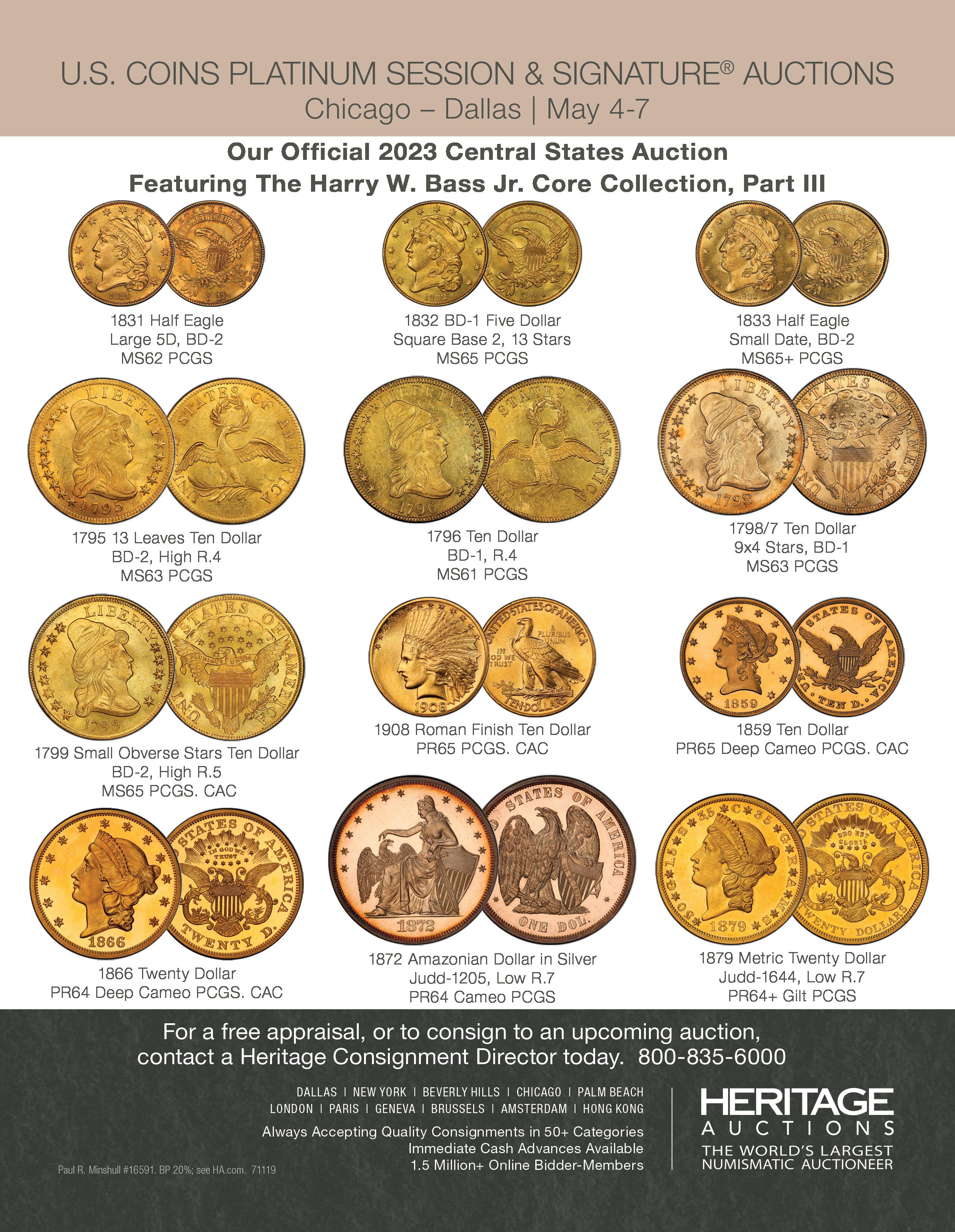
Art of a Generation: The Coins of Frank Gasparro
 By Joshua McMorrow-Hernandez
By Joshua McMorrow-Hernandez
Relatively few people outside of numismatics know the name Frank Gasparro, yet his coins are some of the most recognizable in the world. Counted among the circular canvases of this 20th-century numismatic sculptor-engraver are the Lincoln Cent, Kennedy Half Dollar, Eisenhower Dollar, and Susan B. Anthony Dollar, representing an enduring legacy stemming from his nearly 40 years as an engraver at the United States Mint. And that’s just the tip of an iceberg that includes a slew of medallic art, including the 1980 Summer Olympics medal, a U.S. Mint medal honoring actor John Wayne, and two early issues from the United States Mint’s American Arts Commemorative Series Gold Medallions of the 1980s.

A Creative Life

Frank Gasparro was born in Philadelphia on August 26, 1909, mere weeks after the debut of the Lincoln Cent – a coin
he would eventually have a hand in recreating. Hailing from a line of Italian immigrants, his grandparents having been born in the Old World, Gasparro was the son of a musician father who was dismayed to learn his young son Frank wanted to pursue the visual arts.
His frustrated father tore up many of his artist son’s drawings before finally relenting on the matter and arranging for his son to study under Giuseppe Donato, a sculptor who once worked for famous French artist Auguste Rodin. After graduating from South Philadelphia High School in 1927, Gasparro studied at the renowned Fleisher Art Memorial and attended Pennsylvania Academy of the Fine Arts. Two William Emlen Cresson Memorial Travel Scholarships helped the budding artist travel throughout Europe, where he honed his artistic skills before returning to the United States.
MAY - JUNE 2023 7 PCGS MARKET REPORT
Frank Gasparro is seen here holding a model for the Eisenhower Dollar, a coin for which he engraved both its obverse and reverse. Image used by permission of the American Numismatic Association Dwight N. Manley Library.
ART OF A GENERATION: THE COINS OF FRANK GASPARRO
In December 1942, Gasparro was hired by the United States Mint and began working there as a junior engraver under chief engraver John R. Sinnock, whose name is forever linked with his famous 1940s creations known as the Roosevelt Dime and Franklin Half Dollar. Following Sinnock’s passing in 1947, Gilroy Roberts became the chief engraver of the United States Mint and was assigning an increasing number of projects to Gasparro, who by the 1950s had designed a growing body of medals and other art for the mint.
The Lincoln Memorial Cent
In early November 1958, the Lincoln Centennial Commission requested designs to commemorate the 150th anniversary of Abraham Lincoln’s birth, an occasion to be recognized in 1959. More than 20 models were created by the mint engraving staff for consideration. Gasparro worked weekend days to prepare a model depicting the Lincoln Memorial, a Washington, D.C., landmark built in 1922 and has become one of the most iconic structures in the nation’s capital.
The Lincoln Memorial Cent was in production from 1959 through 2008, carrying Victor David Brenner’s obverse portrait of President Abraham Lincoln and Frank Gasparro’s motif of the Lincoln Memorial in Washington, D.C. Courtesy of PCGS TrueView.

In short order, the commission and a jury of artists decided the appropriate symbol to honor the 150th anniversary of the 16th president’s birth was the Lincoln Memorial. Wrote Gasparro in United States Mint correspondence of the time, “My first inspiration for the Lincoln Memorial reverse was an accumulation of thumbnail sketches and ideas for a Lincoln coin going back [the] 10 years while I have been associated with the Mint[.] I have always been a great admirer of Lincoln having made various sculptures of him in the past.”
He continued, “I remembered seeing several elevation plans for the Lincoln Memorial during its construction at the Philadelphia Public Library, and I referred to these actual frontal elevation plans for correct proportions,” wrote Gasparro. “I feel that the design of the Lincoln Memorial on the reverse of the One Cent is a fitting tribute and token of esteem to a great president as it shows a national shrine. I placed the words ‘E PLURIBUS UNUM’ – United States of America – above the Lincoln Memorial because I believe they are most appropriate for what Lincoln aspired to – the unity of the nation.”
This is an early sketch for the reverse of the Lincoln Memorial Cent, which shows the inscription “LINCOLN MEMORIAL,” stars, and other minor details not present on the design that ultimately debuted in January 1959. Image used by permission of the American Numismatic Association Dwight N. Manley Library.

Gasparro’s early concept for the Lincoln Memorial reverse included an inscription “LINCOLN MEMORIAL” below the main device and 13 stars. These were removed on the account that members of the Commission of Fine Arts, which acted as an advisory panel for new coin designs, suggested the overall design was “too busy.” Consequently, the size of the Lincoln Memorial itself as to be portrayed on the coin was slightly reduced.
One element of the design that was not reworked was the miniature image of a seated Lincoln between the center columns of the Lincoln Memorial, depicting the actual statue of Lincoln at the Lincoln Memorial. “The Lincoln statue is an integral part of the building,” wrote Gasparro to a numismatic
8 MAY - JUNE 2023 PCGS MARKET REPORT
reporter in 1972. “Without the statue visible between the columns, you would have the appearance of another government building. To have removed the Lincoln figure off the plaster would have made me very unhappy. Imagine the Lincoln Memorial without the seated Lincoln!”
22, 1963, by a lone gunman during a motorcade procession in Dallas, Texas. Calls were immediate that Kennedy be honored on a coin, but the question was which one. The Lincoln Cent was deemed too popular a coin to alter, and Kennedy’s wife, Jacqueline Kennedy, ever the gracious person she was, thought it improper to replace the bust of George Washington on the quarter. Treasury officials decided that the most suitable coin would be the half dollar, which then carried a portrait of Benjamin Franklin on the obverse. Placing Kennedy on halves would also mean that all five of the then-circulating coin denominations would carry a portrait of a president.

By the first week of December 1958, Gasparro was working on refined models of the coin. Dies were completed by December 21, 1958. Production of the Lincoln Memorial Cent began on January 2, 1959. The new coins filtered into circulation over the following weeks, with the new penny formally released on February 12, 1959 – the day marking the 150th anniversary of Lincoln’s birth. When the new coin was released, many caught a seeming “error” on the coin in the form of a small “o” in the word “oF” before “AMERICA.” Rumors even swirled that the coin was going to be recalled due to the small “o.” Superintendent of the Philadelphia Mint Rae V. Biester wrote a comment that the press widely repeated for its audience, “the designer [Gasparro] purposely put the ‘o’ in lower case because it’s a preposition. Also, it’s supposed to be artistic – it breaks the monotony.” She added, “Look at a [Franklin] 50-cent piece. It has a small ‘o,’ too.”

The Kennedy Half Dollar
Five years later, Gasparro and Roberts collaborated for the solemn task of briskly revamping the half dollar to honor President John F. Kennedy, who was assassinated on November
Gilroy Roberts and Frank Gasparro designed the obverse and reverse, respectively, of the John F. Kennedy Presidential Medal, which provided the engraving duo the nucleus of the design they would collaborate on for the Kennedy Half Dollar. This is a public domain image courtesy of Wikimedia Commons.
However, the Franklin Half Dollar had been in production since 1948 and was nearly a decade shy of the mandatory 25 years required by United States law for a coin design to be changed without congressional approval. The new Kennedy Half Dollar was approved by Congress within mere weeks of the president’s assassination. Thus, the need for a swift redesign process compelled Roberts and Gasparro to repurpose designs from a Kennedy presidential medal they had prepared for the U.S. Mint in 1961.
Roberts borrowed the bust of Kennedy he had designed for the obverse of the medal, whereas Gasparro adapted the presidential seal he had incorporated into the larger reverse design of that piece. In 1964 correspondence, Gasparro recalled what it was like creating the reverse design. “While waiting for the final decision from Congress as to the denomination approved for coinage, I made three rough patterns incorporating the quarter, half dollar, and the dollar lettering.”
The engraver also noted apprehensions in designing the Presidential Seal, which he wanted to ensure was acutely accurate. “Errors on coins are keenly caught by coin enthusiasts, and I had to make a very careful check of the

MAY - JUNE 2023 9 PCGS MARKET REPORT
ART OF A GENERATION: THE COINS OF FRANK GASPARRO
The gigantic Abraham Lincoln statue found in the actual Lincoln Memorial in Washington, D.C., is rendered in miniature form on the reverse of the Lincoln Memorial Cent. Courtesy of PCGS TrueView.
The Kennedy Half Dollar went into production in time for a release only a few months after President John F. Kennedy was assassinated on November 22, 1963, in Dallas, Texas. The Kennedy Half Dollar is still in production. Courtesy of PCGS TrueView.

herald symbols on the Presidential Seal. The American eagle in this seal must hold 13 arrows in the (viewer’s) right claw; 13 leaves with 13 olives in the branch in the (viewer’s) left claw. The eagle’s head is turned to the (viewer’s) left facing the olive branch. Thirteen small stars are arranged behind the eagle’s head. The shield in the center covers the eagle’s breast and has seven vertical stripes. Finally, 50 stars encircle the center motif as in the official Presidential Seal.”
delivery of the new coin to banks began on March 5. The Eisenhower Dollar
Some early 1964 Kennedy Half Dollar proofs exhibit heavier hairlines, a detail that was softened per request by Kennedy’s widow Jacqueline Kennedy and is not found on circulation strikes. Courtesy of PCGS TrueView.
The pairing of Roberts’ Kennedy bust and Gasparro’s presidential seal on the new half dollar gained the swift approval of Jacqueline Kennedy, who requested only minor softening of some of the hair detail on the coin. The changes were made in short order and the Kennedy Half Dollar went into official production following two ceremonies at the Philadelphia and Denver Mints on February 11, 1964. The

The obverse of the Eisenhower Dollar was in part modeled from a sketch by Frank Gasparro, who saw President Dwight D. Eisenhower in a 1945 World War II victory parade. He spent much of 1969 and 1970 producing models for the coin, which debuted in 1971. Image used by permission of the American Numismatic Association Dwight N. Manley Library.
The death of another president called to task Gasparro’s sculpting skills once more. Dwight D. Eisenhower, the fivestar World War II Army general who later served two terms as United States president from 1953 through 1961, died at

10 MAY - JUNE 2023 PCGS MARKET REPORT ART OF A GENERATION:
THE COINS OF FRANK GASPARRO
the age of 78 on March 28, 1969. By that time, Gasparro was four years into his role as chief engraver, a rank he assumed on February 23, 1965, after Roberts resigned from the position to embark on a successful career as a private-sector sculptorengraver for the Franklin Mint in Wawa, Pennsylvania.
The dollar coin, a denomination that hadn’t been produced for circulation since 1935 and was nearly resurrected in 1965 by the United States Mint, was to be brought out of retirement in time for the 1970s. While Gasparro was tapped in 1969 to begin models for a proposed Eisenhower Dollar, he already began sketches of “Ike” nearly a quarter century earlier. “Little did I realize, standing on the curb side of 5th Avenue in New York, June 20, 1945, with four million citizens around looking on to see our five-star General Eisenhower coming back from France in a victory parade, that I was going to make a coin in honor of him,” wrote Gasparro in the 1970s. “After I saw him at that time, I did two things: I made a drawing for a medal with his portrait side view and I also made a portrait in the round. This was all done from memory.” He continued that, after being called on in 1969 by Director of the Mint Mary Brooks to develop designs for the new Eisenhower Dollar, “I took out the drawings I had made of Eisenhower, I took out
the portrait I had made in the round, and I was ready to do this coin.”
The coin, conceived amid the exuberance just after the United States had sent men to the Moon and safely returned them to Earth, was to also pay homage to the out-of-thisworld feat that the nation had just accomplished. The Eisenhower portrait on the obverse would be paired with the Apollo 11 insignia, symbolic of the NASA mission that launched astronauts Neil Armstrong, Michael Collins, and Edwin “Buzz” Aldrin into history upon their lunar journey in July 1969. The Apollo 11 insignia was collaboratively designed by the Apollo 11 crew members as well as other high-profile officials on the NASA team, but it was Apollo 11 astronaut Michael Collins who drove much of the design for the mission logo. Gasparro employed his engraving prowess to adapt the insignia design for use on the dollar coin, softening the look of the eagle to make it look less fierce. He also prepared a heraldic eagle design as an alternative reverse for the new coin.
Throughout 1970, Congress kicked legislation for the dollar coin back and forth, with some disagreement as to whether the coin should be struck in silver or copper-nickel clad. This protracted legislative affair on Capitol Hill only gave Gasparro

MAY - JUNE 2023 11 PCGS MARKET REPORT
ART OF A GENERATION: THE COINS OF FRANK GASPARRO
The Apollo 11 insignia provided the artistic basis for the reverse of the Eisenhower Dollar, seen here in one of Gasparro’s sketches. Image used by permission of the American Numismatic Association Dwight N. Manley Library.
more time to perfect the design for the coin that was finally signed into law by President Richard M. Nixon on December 31, 1970. With the determination made in Congress that the new dollar coin would be struck in copper-nickel clad for circulation purposes and 40% silver for collectors, the U.S. Mint went right to work in preparing the Eisenhower Dollar for production.
Following the production of prototypes beginning in January 1971, the United States Mint geared up for earnest production of the clad strikes for circulation and silver specimens for collectors.

The 40% silver proof strikes, which were sold individually, entered production at the San Francisco Mint in July 1971, with clad circulation emissions becoming available to banks in November 1971. The Ike dollars were liked by collectors but did not gain much traction as circulating coinage.
The Susan B. Anthony Dollar
By the mid-1970s, the U.S. Mint was searching for ways to broaden use of the Eisenhower Dollar as a circulating coin. The incentive was all about the government’s bottom dollar. A circulating dollar coin was projected to last an average of 30 years in circulation, which is much longer than the 18 to 24 months lived by the typical dollar bill – and the cost savings derived by replacing the ephemeral paper dollar with a longerlasting metal dollar coin could add up into the many millions of dollars over just a few years.


Studies showed the public might be more willing to use the dollar coin if it were smaller and lighter than the copper-nickel
clad Ike dollar, which measures 38.1 millimeters in diameter and weighs 22.68 grams. Proposals called for a small-size dollar slightly larger than the quarter dollar and weighing in at 8.1 grams – barely more than one-third as heavy as the Eisenhower Dollar. Gasparro took up the project to create a new dollar coin that he and many mint officials hoped everybody would love.
12 MAY - JUNE 2023 PCGS MARKET REPORT ART OF A
GENERATION: THE COINS OF FRANK GASPARRO
Frank Gasparro prepared sketches of a young Miss Liberty with flowing hair. Image used by permission of the American Numismatic Association Dwight N. Manley Library.
The Eisenhower Dollar was in production from 1971 through 1978. Courtesy of PCGS TrueView.
Gasparro originally prepared models for the new coin with the motif of a young Miss Liberty intended for the obverse and a soaring eagle slated for the reverse. However, prevailing sociopolitical winds of the day steered the U.S. Mint toward basing the new dollar coin on an obverse that featured an historic female. A slew of candidates were pitched, including Helen Keller, Eleanor Roosevelt, Harriet Tubman, and the Virgin Mary. But suffrage leader Susan B. Anthony led in public polling on the matter.
The chief engraver conceded his Lady Liberty obverse to the proposed Susan B. Anthony topic and invested himself in creating just the right design of the late women’s rights leader. There were few surviving images of Susan B. Anthony to refer to, and Anthony’s great-niece was influential in helping Gasparro create an image that she felt was fitting of her great aunt. Gasparro eventually chose to depict Anthony at the age of about 50, at the height of her crusade for equal rights.
Gasparro intended for the reverse of the new dollar coin to carry his soaring eagle reverse, which he originally proposed for an unrealized 1967 commemorative half dollar. However, congressional legislation for the Susan B. Anthony Dollar mandated use of the Apollo 11-themed reverse seen on the Eisenhower Dollar. The ultimate pairing of designs resulted in

what some might consider an incongruous coupling of a 19thcentury women’s rights leader being honored on a coin that also paid homage to the landing of men on the Moon during the waning years of the 20th century.
Still, it was a coin capturing the spirit of its time, when the Equal Rights Amendment was appearing to wind its way toward ratification – before falling short of the necessary votes to become law before its June 1982 deadline. President Jimmy Carter, signing the coin into law on October 10, 1978, said, “I am particularly pleased that the new dollar coin will — for the first time in history — bear the image of a great American woman. The life of Susan B. Anthony exemplifies the ideals for which our country stands. The 'Anthony dollar' will symbolize for all American women the achievement of their unalienable right to vote. It will be a constant reminder of the continuing struggle for the equality of all Americans.”
The new mini dollar debuted on July 2, 1979, to much fanfare. The coin represented important firsts, including being the first widely circulating U.S. coin to feature an actual woman and not just a representative female figure (such as Miss Liberty). Gasparro
in a Numismatic News article of the time that the Susan B. Anthony Dollar “is the biggest thing I’ve ever done. It’s bigger than the Eisenhower

MAY - JUNE 2023 13 PCGS MARKET REPORT
commented
ART OF A GENERATION: THE COINS OF FRANK GASPARRO
The Miss Liberty device, paired with Frank Gasparro’s reverse motif of a soaring eagle, made it as far as three-dimensional models but was superseded by an obverse depicting suffrage leader Susan B. Anthony and the Apollo 11-themed reverse previously seen on the Eisenhower Dollar. Images are courtesy of the National Numismatic Collection, National Museum of American History and sourced from Wikimedia Commons.
This
the left of the obverse, no stars, and a slightly more elongated bust with concave truncation closer to the shoulders rather than the rounded, convex termination that appears more forward-facing to the viewer. Image used by permission of the American Numismatic Association Dwight N. Manley Library.
Dollar, or anything else I’ve done, because it’s become part of a social movement. This new dollar’s more than a coin – it’s an issue.” However, there was little support for the coin from the public, which largely confused the new dollar coin with the quarter.
The “Susie B.” was in production until only 1981, coincidentally the year Gasparro retired from his longheld post at the United States Mint. The mini dollar was eliminated amid its mass rejection from the public and during a period of federal budget cuts under the first year of President Ronald Reagan’s tenure in the White House. Yet, the Susan B. Anthony saw new life in mass-transit systems and on the United States Post Office vending machine circuit during the later years of the 1980s and into the 1990s. Dwindling supplies of the retired dollar coin necessitated a one-year encore for the Susan B. Anthony Dollar in 1999, which Gasparro, then 90 years old, had the opportunity to see.
A Legacy Minted
The Susan B. Anthony Dollar was in production from 1979 through 1981 and revived for one final year in 1999. While the maligned coin was panned by the public, it has enjoyed gaining popularity among coin collectors in recent years. Courtesy of PCGS TrueView.

Gasparro passed away on September 29, 2001, in Havertown, Pennsylvania, at the age of 92. Obituaries around the country mourned the loss of the man whose Lincoln Memorial Cent had been struck to the tune of more than 100 billion pieces. Many publications both inside and outside the numismatic arena also remembered him for his work on the Kennedy Half Dollar, Eisenhower Dollar, and Susan B. Anthony Dollar, the

14 MAY - JUNE 2023 PCGS MARKET REPORT
ART OF A GENERATION:
THE COINS OF FRANK GASPARRO
early Frank Gasparro sketch for the Susan B. Anthony Dollar shows some divergences from the coin that came to be. This concept art shows the suffrage leader’s name inscribed on
latter a coin Gasparro referred to as his “top achievement.” He was also remembered for his work on the obverse and reverse of the 1980 Grant Wood one-ounce gold medal and the reverse of the 1980 Marian Anderson half-ounce gold medal released during the first year of the U.S. Mint’s American Arts Commemorative Series Gold Medallion program.
Gasparro’s numismatic art defined a colorful period spanning from the days of the Eisenhower era to the dawning of the Reagan Revolution. It was the art of a generation, the coin of an America evolving during a time of historic change and growth. The last of Gasparro’s coins in production today is the Kennedy Half Dollar, a coin that sees limited circulation these days but nevertheless remains as popular now as it was nearly six decades ago.
Collectors wishing to honor Gasparro may choose to collect the coins he helped create, all of which remain among

the most popular of modern U.S. coinage. There are ample opportunities with the PCGS Set Registry to build beautiful (and competitive!) sets of Lincoln Cents, Kennedy Half Dollars, Eisenhower Dollars, and Susan B. Anthony Dollars. The avenues for collecting the iconic coins of Frank Gasparro are many, which speaks to the tremendous impact this celebrated sculptor-engraver had on the
Joshua

MAY - JUNE 2023 15 PCGS MARKET REPORT
numismatic scene of the late 20th century and beyond.
McMorrow-Hernandez has won multiple awards from the NLG and ANA for his work as a numismatic journalist and editor. He has been a coin collector since 1992 and enjoys all areas of United States coinage and U.S. minting history.
ART OF A GENERATION: THE COINS OF FRANK GASPARRO
Among Frank Gasparro’s last designs as a United States Mint engraver were used on the 1980 Marian Anderson half-ounce gold and 1980 Grant Wood one-ounce gold American Arts Medallic Commemorative Series Gold Medallions. Gasparro is seen here posing with models of the two gold medals, which helped mark the end of his illustrious career of nearly four decades with the United States Mint. Image used by permission of the American Numismatic Association Dwight N. Manley Library.
Shop New Coins & Collectibles From APMEX
APMEX is excited to offer the latest releases from popular series like American Eagles and Canadian Maples, in addition to numismatic coins from around the world. From rare numismatics to graded and certified bullion, APMEX’s wide selection will appeal to collectors and investors alike. Our inventory is frequently updated and has something for everyone, so check out our newly listed coins and collectibles today!
Be sure to check out our newly listed rare coins and collectibles: APMEX.me/newarrivals or call (800) 375-9006


Scan with your
to visit online
phone
Looking for Those Lincoln Memorial Cent Small Dates
By Joshua McMorrow-Hernandez
difficult when chasing after the many varieties this series presents collectors. Among the plethora of Lincoln Memorial Cent curiosities are the small dates, which for this series are generally classifiable as scarce.


The Lincoln Memorial Small Date Cents are counted among the major varieties included among the PCGS Registry Sets that encompass the Lincoln Memorial series and include the following:
1960 Small Date
1960 Small Date Proof
1960 Large/Small Date Proof
1960 Small/Large Date Proof
1960-D Small Date
1960-D/D Small/Large Date

1970-S Small Date
1970-S Small Date Proof
1982 Bronze Small Date
1982 Zinc Small Date
1982-D Zinc Small Date
With at least 11 different major varieties involving small dates, the Lincoln Memorial Cent series keeps enthusiasts busy tracking down just the right coins to polish their PCGS Registry Sets.
The 1960 Small Dates
Lincoln Memorial Cent Small Dates, such as this one from 1960, are among several major varieties popularly collected by series enthusiasts. Courtesy of PCGS TrueView.
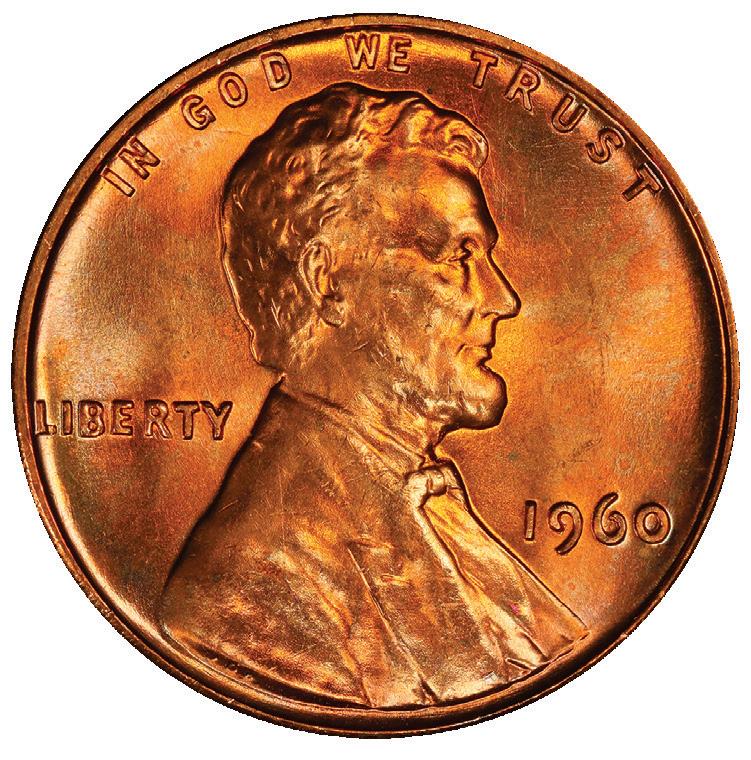
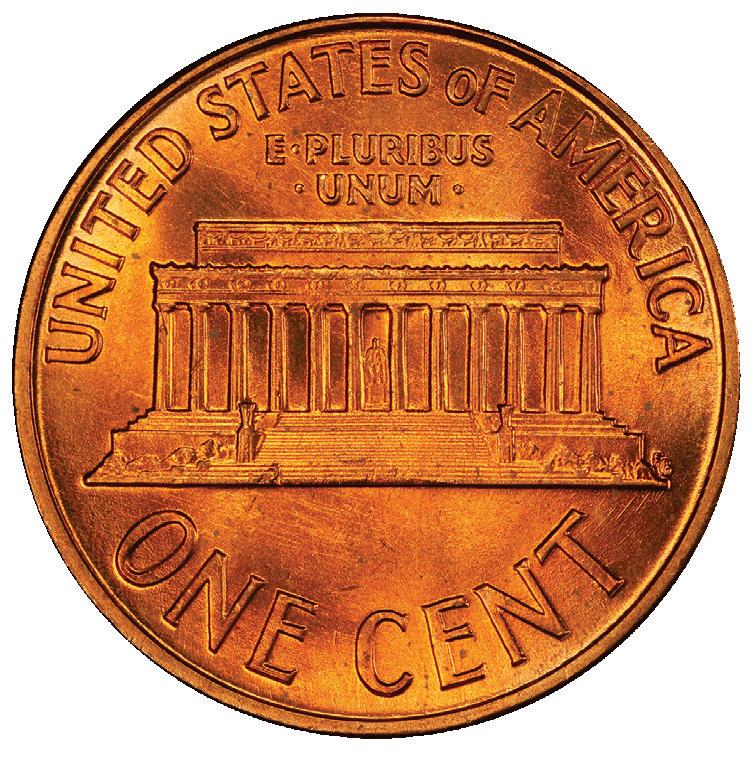
There are so many reasons people love the Lincoln Memorial Cent, a subtype that ran from 1959 through 2008 and married the vintage 1909 Abraham Lincoln obverse by Victor David Brenner and Lincoln Memorial reverse motif of Frank Gasparro. The Lincoln Memorial Cent is an approachable series, which is appealing to the droves of collectors who still pluck these pennies from circulation today…
But this is no simple series to collect!
Ask any PCGS Registry Set member building a competitive run of Lincoln Memorial Cents – these coins can be tough and expensive to find in the top grades. They can be especially
Interestingly, more than half of this list of coins involves pieces struck in 1960, a time when the transitioning of date formats stirred even the non-numismatic public to keep a closer eye on their pennies. At the time, bags of 1960 Small Date Lincoln Cents (Philadelphia and Denver) were trading at around $10,000 for a bag of 5,000 coins, or $2 per coin.
MAY - JUNE 2023 17 PCGS MARKET REPORT
A comparison of the 1960 small date and large date arrangements. Courtesy of PCGS TrueView.
The 1960 Small Date and Large Dates are easily differentiated by the unaided eye, with the “0” of the last digit in the date for the small date appearing smaller than that of the large date, with the interior of the small “0” looking more like an oval. Meanwhile, the top of the “9” digit is nearly inline with the top of the first digit, “1.”
Some very interesting error varieties from this date also reveal the overlapping of the small date over the large date (business strike and proof) and the large date over the small (proof only).
The 1970 Small Dates
The 1970 Small Date Lincoln Cent is a widely popular variety, and it’s often collected alongside its large date counterpart. There are two elements the collector should keep an eye on when looking for the 1970-S Small Date: the positioning of the date numerals and the visual strength of the inscription “LIBERTY.”


The “LIBERTY” inscription is another key diagnostic. On the small date, it is weak, whereas the inscription is strong on the large date.

This small date variety is seen among both the business strikes and proofs.
The 1982 Small Dates
There are three regular-issue small dates among the 1982 Lincoln Cents, including the 1982 Bronze Small Date as well as 1982 and 1982-D Zinc Small Date. The key in telling the bronze and zinc cents apart? Weigh them. The 1982 bronze cents weigh about 3.11 grams apiece, whereas the zinc cents register at the much lighter weight of 2.5 grams.
A comparison of the 1970 Small Date versus 1970 Large Date Lincoln Cents. Courtesy of PCGS TrueView.
The easiest diagnostic is by looking at where the top of the “7” appears among the tops of the other three digits; one needs to draw an imaginary line across the tops of the “1,” “9,” and “0” and another across the bottoms of the “1” and “0.” If the top of the “7” is below that upper line, it’s a large date; if the top of the “7” touches that line across the top and does not extend below the bottom line, it’s a small date.
A comparison of the 1982 Small Date versus 1982 Large Date Lincoln Cents. Courtesy of PCGS TrueView.

The 1982 small date can be distinguished from the large date by looking at the size and positioning of the date numerals as well as the shape of the “2” at the end of the date. On the large date, the tops of the middle numerals exceed the tops of the “1,”and “2,” with the “2” showing a straight descender. On the small date, the tops of the date numerals are all set along an imaginary line, with the descender in the “2” showing a slight arch bowing up and to the left.
Joshua McMorrow-Hernandez has won multiple awards from the NLG and ANA for his work as a numismatic journalist and editor. He has been a coin collector since 1992 and enjoys all areas of United States coinage and U.S. minting history.

18 MAY - JUNE 2023 PCGS MARKET REPORT LOOKING FOR THOSE LINCOLN MEMORIAL CENT SMALL DATES
A closeup of the 1960 Large Date / Small Date on the left and the 1960 Small / Large Date on the right. Courtesy of PCGS TrueView.
BUYING, SELLING, TRADING, CONSIGNING & REPAIRING SINCE 1980


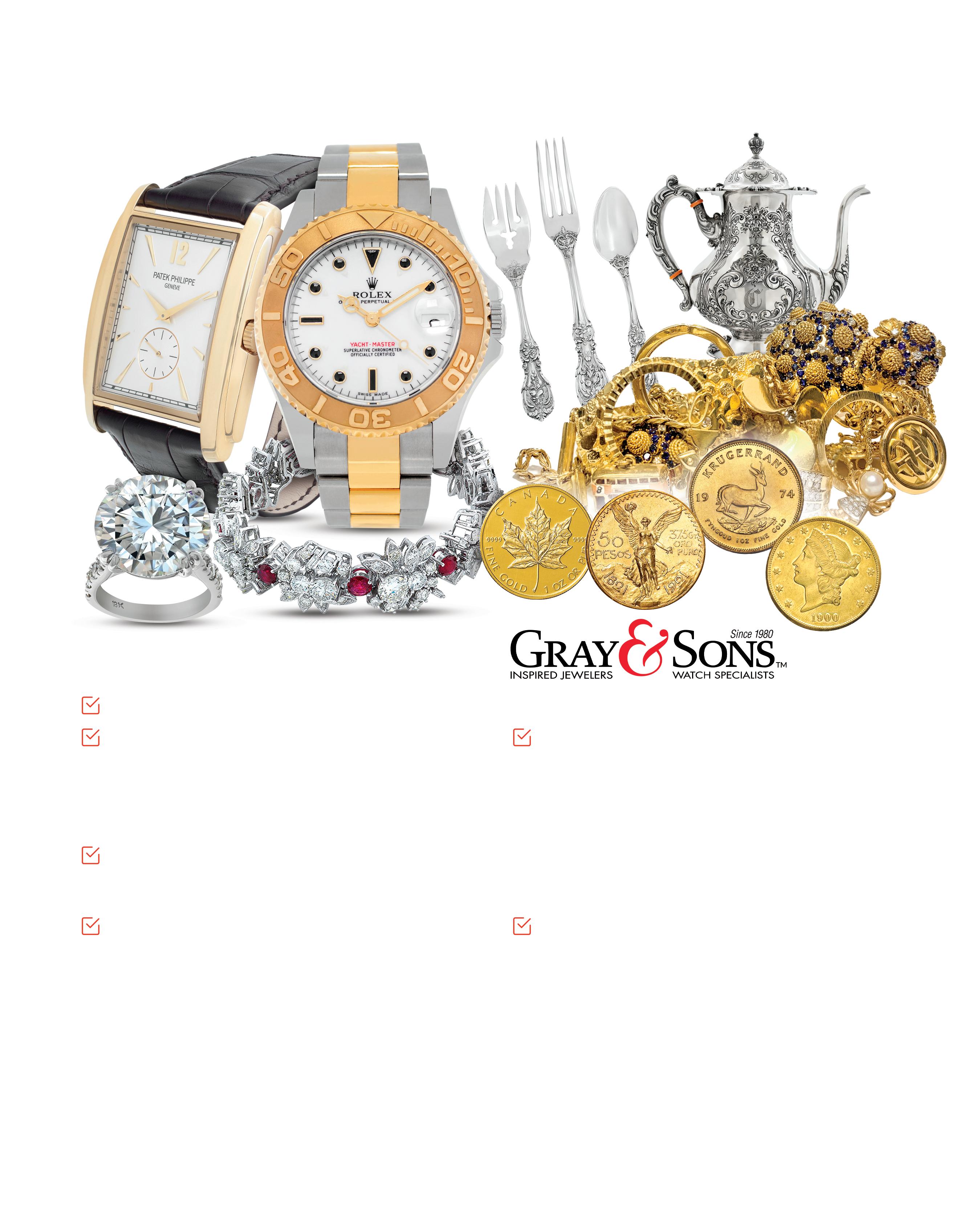


The "Ship of Gold" Docks at the June 2023 Long Beach Expo
By Joshua McMorrow-Hernandez
S.S. Central America on September 11, 1988. Over the past 35 years, numerous recoveries of gold and other items from the shipwreck have been brought to the surface, conserved, and sold at auction and in other marketplace settings. Some of the most impressive of these Gold Rush-era pieces include huge ingots of gold worth millions of dollars apiece and thousands of 1850s-vintage United States gold coins.
Treasures from the S.S. Central America will be on exhibit at the Long Beach Expo, June 22-24, 2023. Courtesy of PCGS.

One of the most fascinating attractions dropping anchor at the Long Beach Expo in Long Beach, California, this year is the collection of treasures from the S.S. Central America or “Ship of Gold.” This popular exhibit, curated by Adam Crum of Finest Known, showcases millions of dollars in recovered gold coins, gold ingots, and other artifacts from the legendary S.S. Central America . The Ship of Gold will be available for viewing from June 22-24, 2023!
What’s the story behind the S.S. Central America and its gold treasure? The 280-foot-long sidewheel steamer ran routes between Central America and the eastern seaboard of the United States during the mid-1850s. On September 11, 1857, the famous ship transporting a hoard of gold that aimed to alleviate the brewing financial crisis of 1857 was ferrying 477 passengers, 101 crew, and 30,000 pounds of gold when it encountered a Category 2 hurricane off the Carolinas. The 105-mile-per-hour winds from the storm severely damaged the ship’s sails. The next day leaks in the ship led to the sinking of the S.S. Central America , claiming 425 lives. The famous ship transporting a hoard of gold that aimed to alleviate the brewing financial crisis of 1857.
This year marks the 35th anniversary of the discovery of the S.S. Central America . Exactly 131 years passed by when the Columbus-America Discovery Group of Ohio deployed a remotely operated vehicle that discovered the wreckage of the
The Ship of Gold and its legendary treasure have captivated the imaginations of countless individuals at the Long Beach Expo since 2010. After previously passing through in 2018, the Ship of Gold is docking once again at the Long Beach Expo, June 22-24, at the Long Beach Convention Center. Visitors can expect to see a 40-foot replica of the S.S. Central America , millions of dollars worth of gold coins and ingots, and many other incredible artifacts recovered from the Atlantic Ocean shipwreck.
“There are few stories that have captured the hearts and minds of coin collectors, treasure seekers, and Gold Rush historians as has the tragic tale of the Ship of Gold,” said PCGS President Stephanie Sabin. “We are so fortunate that this incredible exhibit is returning to the Long Beach Expo, where show attendees will get to see these rare, recovered treasures right before their very eyes.” Sabin added, “It’s sobering to think of the tragic circumstances that brought these treasures to the floor of the Atlantic, yet amazing when you realize the long odds explorers beat to find and recover these pieces. Only imagine if these treasures could talk, the stories they would tell.”

Joshua McMorrow-Hernandez has won multiple awards from the NLG and ANA for his work as a numismatic journalist and editor. He has been a coin collector since 1992 and enjoys all areas of United States coinage and U.S. minting history.

MAY - JUNE 2023 21 PCGS MARKET REPORT
The 2022 PCGS Set Registry Award Pins Are a Hit with Members!
 By Sanjay Gandhi
By Sanjay Gandhi
Earlier this year, the PCGS Set Registry mailed over 2,000+ pins to our award-winning members with the help of our PSA (Professional Sports Authenticator) Set Registry teammates. We are grateful for their teamwork. With over 162,000 sets built by our members, we continue to offer the best Set Registry experience worldwide. In 2023, we look forward to building upon our success and sending out more awards than last year as our membership continues to grow. Our members have been excited about receiving their pins, which resulted in some pin awards being displayed via social media, prompting conversations about member pin awards in our collectors' forum, and some of our members have been wearing their pins to shows. We 100% appreciate and encourage this!
One of our members posted the following about their award, “I have a few different sets. I am thrilled to have received the pin. Looking at the sets, I have one in first place and two
in second place. Pin [on the way] probably for one of those three. Have a great day. Thank you PCGS! Rocco.” Another PCGS member posted, “I received my pin in today's mail. I’ll be attending Winter FUN Wednesday, Jan 4th - Sunday, Jan 8th. I’ll be wearing this pin on my shirt, [commented] Steve.” We appreciate Steve’s praise about his award, and his comments may resonate differently with some collectors that collect plaques.
Traditionally, we have issued award plaques during each PCGS Set Registry Award season for a majority of our members. PCGS will no longer issue plaques going forward, and this decision allows PCGS to award more pins to more members in the future. From our surveys, we have concluded that a majority of our members were unable to bring their plaques to coin shows to display them.
22 MAY - JUNE 2023 PCGS MARKET REPORT
PCGS SET REGISTRY
The PCGS Set Registry pin lineup from 2022. Courtesy of PCGS.
An example of one of our members tagging us on Twitter.

The transition PCGS has made from distributing traditional plaques to pins has allowed more collectors the opportunity to display their achievement(s) more easily in person. PSA, which is a subsidiary of PCGS and in the Collectors family of companies, has also adopted the same change in terms of issuing pin awards.
The PCGS Set Registry continues serving as a powerful inventory management tool built for coin collectors of all
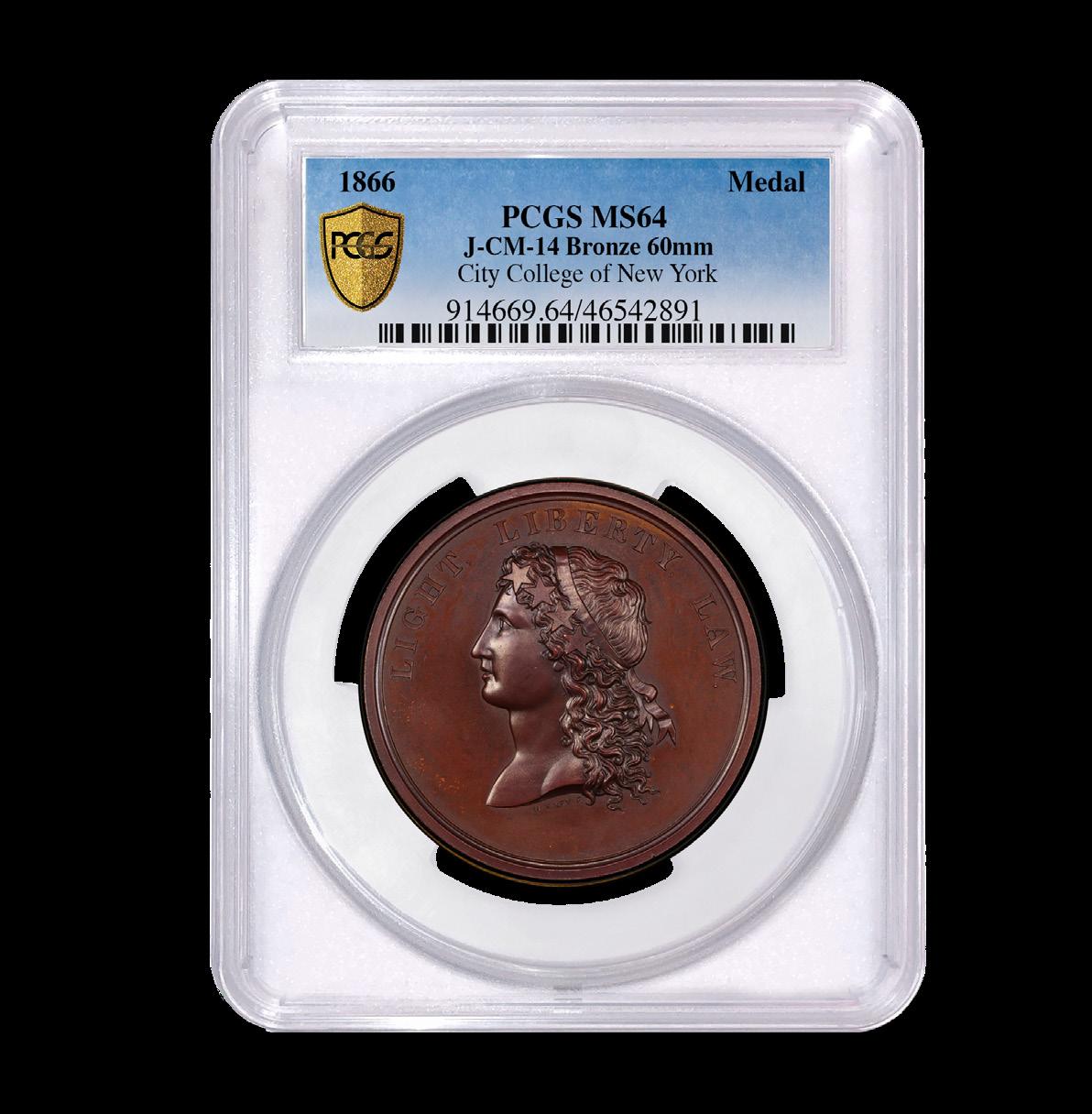
levels. Within the PCGS Set Registry, members may track their inventory with images, costs, market prices, and population comparisons – all of which are available in a secure online environment. We offer the best tools online to organize any coin collection, and with the feedback we’ve received from our members, we continue to innovate the PCGS Set Registry into what it has evolved into today: the most powerful inventorymanagement tool built for coin collectors of all levels and a fun, safe place to show off their collections.
We look forward to the PCGS Set Registry Awards this year, which are right around the corner. The deadline is June 30, 2023, for all sets to be considered for an award this season. The reduction in the amount of award plaques has allowed PCGS to recognize more award winners than ever. An overwhelming number of members have provided PCGS with their gratitude in regards to their pin award they have received from us. Please stop by our PCGS Set Registry booth at any show displaying your pin, and we just might have a surprise waiting for you.

Sanjay Gandhi is a senior content manager at PCGS. His knowledge base consists of a wide variety of world coinage, and he has a great appreciation for toned coins that display vibrant colors. In addition to contributing content to PCGS Market Report, he also assists collectors with the PCGS Set Registry.

MAY - JUNE 2023 23 PCGS MARKET REPORT PCGS
SET REGISTRY – THE 2022 PCGS SET REGISTRY AWARD PINS ARE A HIT WITH MEMBERS!
50% OFF Oversized Holders Save $10 when you submit oversized or oddly-shaped coins for grading and encapsulation! April 1, 2023 - June 30, 2023 Q UARTERLY SPECIAL PCGS.COM | THE STANDARD FOR THE RARE COIN INDUSTRY | FOLLOW @ PCGSCOIN | ©2023 PROFESSIONAL COIN GRADING SERVICE | A DIVISION OF COLLECTORS UNIVERSE, INC. Learn More at: PCGS.com/CCSpecial!

Treasure of the Sichuan


 By Peter Anthony
By Peter Anthony
Only splish, splash, splish, splash – the sounds of oars and the creaking of wood – break the Sichuan Province silence this July night of 1647. Cloaked by blackness and a mist that hangs over the water, imperial government ministers and courtiers alike huddle inside the ships’ cabins. Soldiers keep a tense watch over the rowers, as well as the river banks. If some early-rising farmer should spy the convoy, he would be amazed. Boats are strung in a line all up and down the river. While some of the crafts are just little flat-bottomed bamboo sampans, others, like the gaw Qiang (pronounced “Chang”) an oarsman is on, are much bigger and sport silk sails.
From behind him, Qiang can hear the rudder strain as it shifts direction to follow the current. Of course, nobody tells common people like him anything — like their destination, say, or why high officials are onboard, or that they ride low in the water due to the weight of the empire’s gold. The rower only guesses that this route will lead to the mighty Yangtze River. Beyond that, who knows?
Qiang is happy enough to put Chengdu City behind him. No word had come from his parents, or sisters, in weeks. Every day brings hushed talk of more executions. People whisper that the emperor, Zhang Xianzhong, has gone mad. So many died that Chengdu, the capital, hardly has enough people left in it to supply the emperor’s wants. When the boats reach a harbor, Qiang will make a break for it. With a handful of the emperor’s bronze coins in his pocket he will take his chances.
As the boats bob toward a point where their river merges into the wider Minjiang, the skill of the tiller men will be tested — it is all too easy to run onto a rock. Suddenly, Qiang hears drum beats. Moments later arrows whistle through the air. An oarsman in front of him screams as a missile pierces him. Two guards topple overboard. Then the tillerman disappears, too. With no one to steer it, the boat swings around wildly. Qiang drops his oar and leaps over the side. On the far shore, fog and smoke hide him from the archers’ sight. He scrambles up the river bank and never looks back.
MAY - JUNE 2023 25 PCGS MARKET REPORT
A coin issued by the rebel king Zhang Xianzhong sometime between 1644 and 1647. Courtesy of Peter Anthony.
No one today knows the exact when, or how, this convoy met its end that summer night. Over the centuries, memories faded until even its existence became the stuff of legends. The general events that led up to the battle, though, are documented. Sichuan — once called the Shu Kingdom — was separated from China’s central plains by mountain ranges. In its isolation, a distinct culture and vibrant economy developed. That independence ended in 316 BC when the Qin Dynasty conquered it. Even so, the region continued to prosper. The middle years of the 1600s were an evil time, though. While the Ming Dynasty was a tyrannical regime that many people detested, they lived with it. A terrible famine in 1628 weakened the government’s hold. Combined with corruption and nepotism, civil order gradually collapsed.
From neighboring Shaanxi Province, 100,000 bandits and revolutionaries, led by a rebel named Zhang Xianzhong, attacked and overran Sichuan in 1644.

As a young man, Zhang had been a Ming Dynasty soldier where he earned the nickname, “Hu Huang,” or the “Yellow Tiger.” Like a tiger, one of his first official acts in Sichuan was to kill the Ming prince. He then proclaimed himself king of the Great West (Da Xi). A civilian administration that minted coins was established. Each coin contained four characters that read: “Da – Shun – Tong – Bao,” or literally, “Big –Conquer – Legal, or Virtuous – Money.”
Zhang’s rule, which began as a liberation, soon degenerated into paranoia and slaughter with millions of Sichuan’s native people either dead or having fled. One interesting account of
26 MAY - JUNE 2023 PCGS MARKET REPORT TREASURE OF THE SICHUAN
A 50 taels grain tax silver ingot, or sycee, from 1629 – near the end of the Ming Dynasty. This is similar to ones recovered from the Minjiang River. Courtesy of Peter Anthony.
this period comes from a pair of Portuguese Jesuit missionaries who were captured and became “guests” of the imperial court.
The reign of terror was short-lived; the army of the newly installed Qing Dynasty marched on the Da Xi from the north in 1647. Zhang and his men burnt Chengdu to the ground as he left, but his army was destroyed by the Qing military, and he was killed. The missionaries escaped to later write about their experiences.
Because Zhang Xianzhong’s rule was so brief, coins from this time are quite scarce. The Qing administration melted as many as possible. I once showed a Zhang Xianzhong coin to a dealer with decades of experience who commented, “I have never seen one of these.” The commemorative medals that were issued to court and military members and even favorite concubines are rarer still. They are reportedly made of gold and silver melted from temple statues in Chengdu.

After his death, word got out that the Yellow Tiger had tried to move his treasury down the Minjiang River on a hundred (or maybe a thousand) boats. Three centuries later, locals regarded the story as a fairy tale.
The city of Meishan lies along the Minjiang River 73 km (46 miles) south of Sichuan’s Provincial capital, Chengdu. It’s known as the birthplace of Su Shi (“shi” rhymes with “de”), a famous poet of the Song Dynasty. Tourists visit Meishan
to see the Temple of the Three Sus which honors the great writer and two relatives, but it is not a place that often makes national news. In 2005, something happened that would bring international attention.
Near where the Minjiang and Fuhe rivers flow together, a work crew was digging an irrigation ditch. Suddenly, one shovel struck something hard. To the men’s surprise, it wasn’t a rock, but an ancient sycee, or ingot of silver. Their shovels turned up six more. Word of this discovery quickly got around.
Suddenly, people saw the legend of the Yellow Tiger and his treasure in a new light. The banks of the river became a popular place to stroll and swim. More artifacts turned up, some even engraved with Zhang’s name. As it became obvious that “something” was definitely there, the local government designated a stretch of the river as a registered historical site. The area was too large to patrol carefully, though, and did little to deter scuba divers who called it a good place to “practice.”
The Meishan police investigated the trade in “national treasures” and filed charges against dozens of people. Some $44 million of artifacts from 10 different bands of traffickers were recovered. There could no longer be any doubt that the Minjiang River was a site of great importance. The State Administration of Cultural Heritage authorized a full-scale archaeology dig.
MAY - JUNE 2023 27 PCGS MARKET REPORT TREASURE OF THE SICHUAN
A 1981 gold 200 Yuan China Bronze Archeological Finds commemorative coin with a leopard theme. Courtesy of Peter Anthony.
As a first step, dikes were built around 20,000 square meters of the river. The enclosed area was drained during the dry season. With the riverbed searchable, archaeologists scoured it with metal-detecting devices. A total of 42,000 objects were extracted from the mud during the 2017 and 2018 campaigns. The location of each find was carefully noted for future study. “For archaeologists, it's not important what we find, but how much information we can derive from the artifacts we find,” observed Liu Zhiyan, co-leader of the excavation and project chief of underwater archaeology at the Sichuan Provincial Cultural Relics and Archaeology Research Institute.
Mr. Liu confirmed to China Daily that, “[more than 1,000 of the] gold and silver coins we found had words related to Zhang Xianzhong.” Engraved on silver ingots are characters that provide clues to how the Da Xi kingdom was organized, while gold and silver coins show how its military was paid. There are even hints of the structure of the court: some gold pieces bear the titles awarded to Zhang’s concubines. One amazing seal that was found looks as if it could have belonged to the Yellow Tiger himself: on it is a fearsome effigy of a golden cat with its jaws opened wide.”
That gold tiger seal of Zhang Xianzhong resembles the animals that grace the 1981 People’s Republic of China Bronze Archeological Finds commemorative coins. This set is among the most collectible of modern Chinese coins. Onethousand sets were struck in 91.6% gold at the Shanghai
Mint, their designs based on ancient Chinese tomb art. The leopard statuette represented on a 200 yuan gold piece was buried inside a king’s tomb on Mount Zhongshan in Hebei Province about 2,500 years ago. It is one of four found there. Each original figurine weighs between 300 to 500 grams and is inlaid with a gold and silver plum blossom pattern. Its eyes glow with precious stones. The 1981 coin that portrays it is 22 millimeters in diameter and contains 7.764 grams of 91.6% gold. The designer is Sun Qiling, who may be familiar to numismatists as the artist who originally designed the Temple of Heaven on Panda coins.
As for later coins and medals that commemorate the Da Xi himself? It should be no surprise there aren’t any. However, there is another Sichuan treasure that is represented on modern Chinese coinage.

In the spring of 1929, in the hills near Guanghan City, 40 kilometers north of Chengdu, a man needed to repair the sewage line to his house. As the man labored dirt his shovel unexpectedly hit something solid. More digging revealed a large cache of jade and stone artifacts. Very soon these turned up in Chinese antiquities markets where dealers called them the Jadeware of Guanghan City. The artifacts had a unique style and characteristics that suggested they might belong to a culture known only through legend, the Shu. Archaeologists swarmed to the area, but nothing more was recovered at that time. The makers of the jadeware remained a mystery.

28 MAY - JUNE 2023 PCGS MARKET REPORT TREASURE OF THE SICHUAN
A 2002 gold 200 Yuan Sichuan Sanxingdui Relics coin. Courtesy of PCGS.
A breakthrough occurred during the summer of 1986 when two sacrificial pits were discovered. Unearthed from these were a dazzling array of cultural relics unmatched in terms of archaeological quantity, quality, academic value and diversity compared to other Sichuan sites. Scholars date them to between 4,800 and 2,800 years ago. Since 1986, locations have been found that hold the ruins of an ancient city, sacrificial pits, residential quarters, and tombs. This is by far the largest and most important archaeological site in southwestern China.
All the objects in the first pit were badly damaged by fire, apparently deliberately burned. The second pit, although also burned, contained objects in better condition. Uncovered in it were 735 bronzes. Highlights are a 2.62-meter-tall statue of a man, a nearly 4-meter-long bronze divine tree, a bronze human head covered by a gold mask, and a large bronze head with protruding eyes. Nothing like these had ever been discovered before in China.

The Sanxingdui site is extraordinarily important to when piecing together the history of southern China and understanding the roots of Chinese culture. Some of the artifacts recovered are trade items. They demonstrate that the Shu people were in contact with the Han society to their north. But, until this discovery nothing was known of the Shu, or their customs. Now, it is established that they were a prosperous, major culture that existed independently in ancient Sichuan.
China Gold Coin, Inc., issued a two-coin set to celebrate the Sanxingdui discoveries in 2002. It includes a 200 yuan half-ounce .999-fine proof gold coin with an image of a Shu

bronze masked head with protruding eyes on the reverse. On the obverse is the Sanxingdui Museum that opened near the dig site in 1997. A run of 5,000 coins of this 27-millimeterdiameter design were struck at the Shenzhen Guobao Mint.
A companion 2-ounce proof .999-fine silver coin illustrates a bronze head with a gold mask on the reverse. The obverse design is identical to that on the gold coin, except scaled larger. This coin has a mintage of 30,000 and was produced at the Shenyang Mint in Northeast China.
In June of 2022, Xinhua news agency reported that a spectacular bronze altar and a dragon with a pig's nose had been excavated from a seventh and eighth pit at the Sanxingdui site. A highlight from the dig is a bronze box with a tortoise-shaped lid. The box may have originally been wrapped in silk. “The vessel is one of its kind, given its distinctive shape, fine craftsmanship, and ingenious design. Although we do not know what this vessel was used for, we can assume that ancient people treasured it,” said Li Haichao, a professor at Sichuan University. It’s an example of how, just as in numismatics, there are constantly new discoveries that expand our knowledge and give us things, both old and new, to treasure.

MAY - JUNE 2023 29 PCGS MARKET REPORT
TREASURE OF THE SICHUAN
Peter Anthony is a PCGS consultant on modern Chinese coins and is the author of The Gold and Silver Panda Coin Buyer's Guide 3, a two-time Numismatic Literary Guild winner. He is also the publisher of China Pricepedia , a monthly journal and price guide for modern Chinese coinage.
A 2002 silver 20 Yuan Sichuan Sanxingdui Relics coin. Courtesy of PCGS.
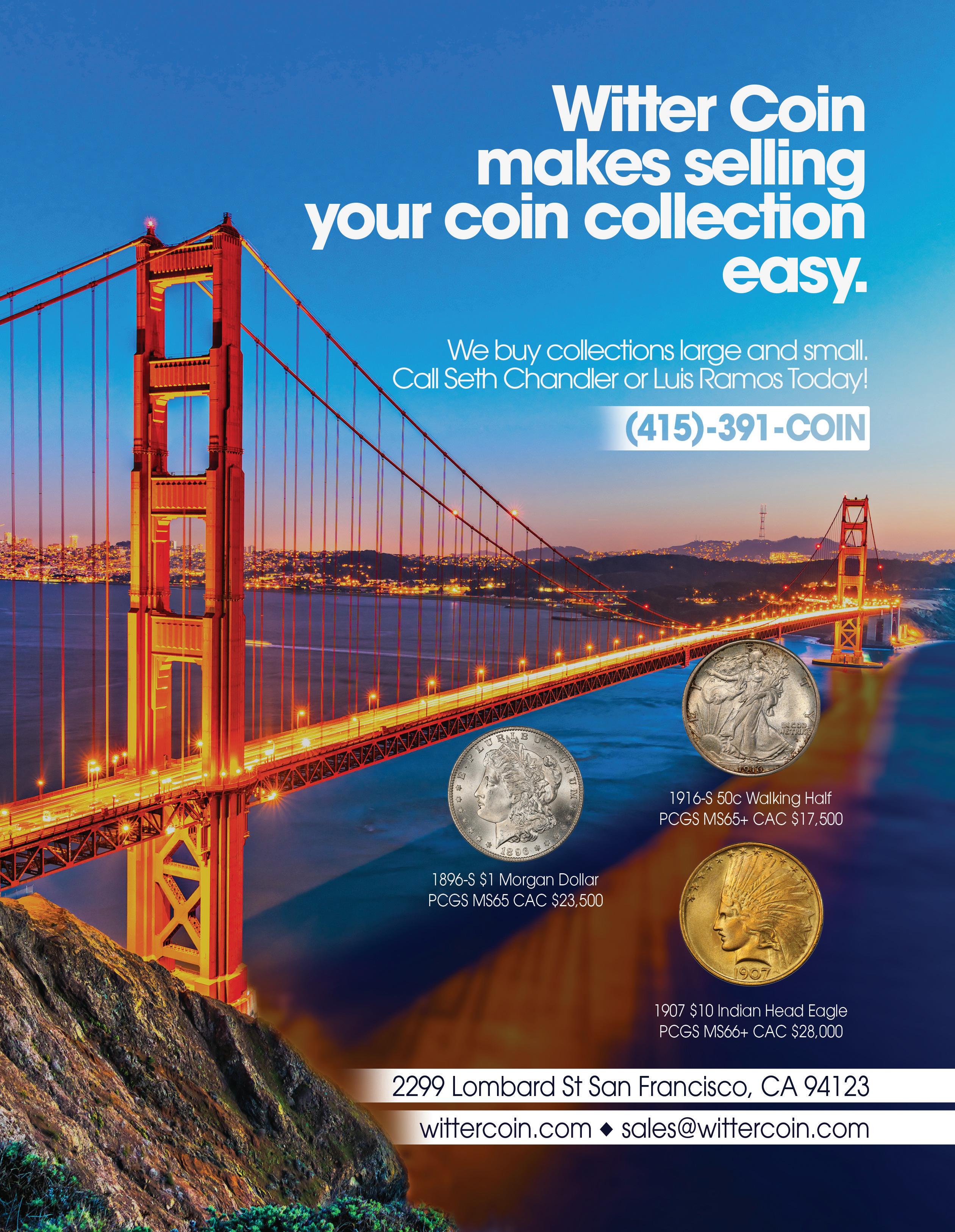
Young Numismatist Goes from Coins to Cash Registers
 By Hunter Hicks
By Hunter Hicks
I’m Hunter Hicks, a 19 year old from Northern Virginia. I started collecting coins about 10 years ago, when a shiny 1943 Lincoln Steel Cent at an antique shop caught my eye. Beyond thinking that the coin was pretty, I left with a fascination about how the world interacts with money. Since I first started collecting, I have been just as intrigued by coins as I am with the ways they arestored and transacted. In addition to collecting U.S. type and Lincoln Wheat Cents, I used to browse the various U.S. Mint packages on eBay before I could afford the actual coins.
As I became more involved in the hobby, I joined the local Alexandria and Fairfax Coin Clubs. Later on, I started attending the American Numismatic Association Summer Seminars and then added Witter Coin University to my summer plans. When I turned 16, I began working at Wayne Herndon Rare Coins. Working for a coin dealer gave me a different perspective on the relative rarity of various coins.
Many times, the coins are not as rare as the means with which they were stored. Beyond old coin folders and albums, the history of the hobby of course includes PCGS memorabilia. While I am still desperately hunting for a PCGS double-row “rattler” box, I am proud to own every other regularly issued box design and color.
Collectors often talk about all the stories a coin has gone
through, and I want to bring that idea to life. While I am working on a 140-coin Lincoln Cent Basic Set, Circulation Strikes (1909-1958) PCGS Registry Set, I recently expanded my collection to include some of the mechanisms with which coins were transacted. In addition to a series of mechanical coin-op machines and change counters, my passion project is to fill my 1916 National Cash Register Company with periodcorrect coins, including VF/XF Barber silver coinage, Black Eagle banknotes, and eventually some pre-1933 gold coins.
Recreating the appearance of an active, vintage cash register is a great way to gain an interactive historic perspective of how coins were once used. I also like that this is an open-ended project with no overt completion guidelines. I can always increase the quality of the coins in the register or perhaps buy a few dozen uncirculated 1916 Lincoln Cents, all with the same surface appearance, to replicate a bankroll that may have recently been cracked open. I recently began my freshman year of college in Northern California. From attending local coin shows to buying coins for my cash register, to joining local Peninsula and Cupertino Coin Club meetings – and occasionally interning at Witter Coin in San Francisco – I am enjoying the constant reward the hobby provides as I get settled in. To feel at home, one truly needs a community, and I am so fortunate that the coin community is everywhere.

MAY - JUNE 2023 31 PCGS MARKET REPORT
YN CORNER
Hunter Hicks is a 19-year-old collector who is working on a Lincoln Cent PCGS Registry Set and hopes to fill his circa-1916 cash register with period-correct coinage. Courtesy of Hunter Hicks.


The Genuine Article
By Kyle Knapp
Among the first questions most often received upon proudly informing an unfortunate dinner partner that one is a numismatic authenticator is, understandably, “So, how do you know which coins are real?” While it is tempting to dodge such inquiries with some form of vaguely condescending quip about how many cumulative years have been spent peering through a jeweler’s loupe, a truthful response requires a bit more unpacking.
Start with the basics, imagining that court-of-law level certainty is required. A coin securely shipped directly to you from the United States Mint or transferred directly from the mint to the national collection in the Smithsonian is very likely authentic. However, from there certainty deteriorates. As many of the coins authenticated and graded by PCGS are hundreds of years old and “chain of custody” verification is not realistic, our best bet is comparison to known or presumed genuine pieces, like those in our directly-from-mint scenarios. When a PCGS expert examines an issue they have never encountered before, a common first step is a comparison

study utilizing our large database of high-resolution images of pieces previously determined to be genuine. To take a simple and famous example, all five known 1913 Liberty Nickels have been extensively documented, photographed, and studied – their likely emission sequence determined; any purported additional pieces would have to make sense within this context.




MAY - JUNE 2023 33 PCGS MARKET REPORT
Genuine 1913-S Barber Quarter. Courtesy of PCGS TrueView.
FROM THE PCGS GRADING ROOM
Is this 1799 Draped Bust Dollar genuine? Courtesy of PCGS TrueView.
As experience and familiarity with an issue accumulate over time, repeated encounters with industry-accepted specimens in museums, auctions, market transactions, digital archives, and the like lead to the construction of a “standard” in the mental data set of a professional authenticator. This makes individual comparison studies necessary only for unusual or suspect pieces and greatly expedites the process. This knowledge often takes the form of issue-specific expectations. The 1913-S Barber Quarters, for example, were struck with slightly misaligned dies that yielded an uneven strike, with the left side of the obverse (and right side of the reverse) slightly weaker in rendering than the opposite. This is often observable even in the lowest of circulated grades and is not a feature of 1913 Philadelphia issues, the most common source of counterfeits via the addition of a false mintmark.
Stepping back from date-specific observations, patterns eventually begin to emerge that offer up knowledge applicable more broadly. The crisp strike indicative of production on expensive, industrial equipment not typically employed by clandestine counterfeiting operations, evidence of natural die deterioration in the forms of cracks or erosion, and contextappropriate surface patination are just a few examples. Note the distension of the letter-tops toward the rim on the reverse of the 1799 Dollar imaged at the beginning of this article; the natural result of heavy die usage, this is an evidentiary vote in the coin’s favor. It is in fact genuine.
Genuine 1909-S Indian Cent. Courtesy of PCGS TrueView. Similarly, 1909-S Indian Cents are struck on planchets with a streaky, uneven coloration far more often than their Philadelphia counterparts. While such expected characteristics are not foolproof means of authentication, they are an important contributing factor to the confidence level a grader may have on a piece where other data points are incomplete (on a heavily circulated piece, for example). It is also worth bearing in mind that the ratio of counterfeit-to-genuine pieces in existence varies widely.

A common coin with a large mintage and moderate value will be represented by millions of genuine pieces in varying states of preservation along with few (if any) passable counterfeits, while a rarity with a very small official production and a high value will be the opposite. Even when excluding “obvious” or low-quality replicas, there are multitudes more fake 1804 Draped Bust Dollars or 1913 Liberty Nickels in existence than there are genuine examples. Most marketplace-problematic issues fall somewhere in between: initial productions in the 1,000 to 1 million range with perhaps a few thousand fakes. While false mintmarks can be found on both 1908-S and 1909-S Indian Cents, for example, the ratio of counterfeit to genuine pieces is far higher for the (lower-mintage, higher-value) latter.

Genuine 1799 Draped Bust Dollar reverse close-up. Courtesy of PCGS TrueView.
In the never-ending battle against the market incentives for the production and increasing quality of counterfeit and altered coins, continuous updating of one’s knowledge and points of reference in the context of new information is essential. PCGS closely monitors trends in the frequency and emergence of counterfeits by issue, and all PCGS authenticators are regularly briefed with high-resolution images and analytical data of newly encountered fakes. However, such topics generally make poor dinner conversation.

34 MAY - JUNE 2023 PCGS MARKET REPORT
An avid childhood collector, Kyle first came to Collectors Universe in 2005 as a grading intern while in high school. Now a senior member of the grading and authentication team, some of his favorite coins include the Nova Constellatio coppers, Flowing Hair Dollars, and Flying Eagle Cents.
FROM THE PCGS GRADING ROOM
– THE GENUINE ARTICLE
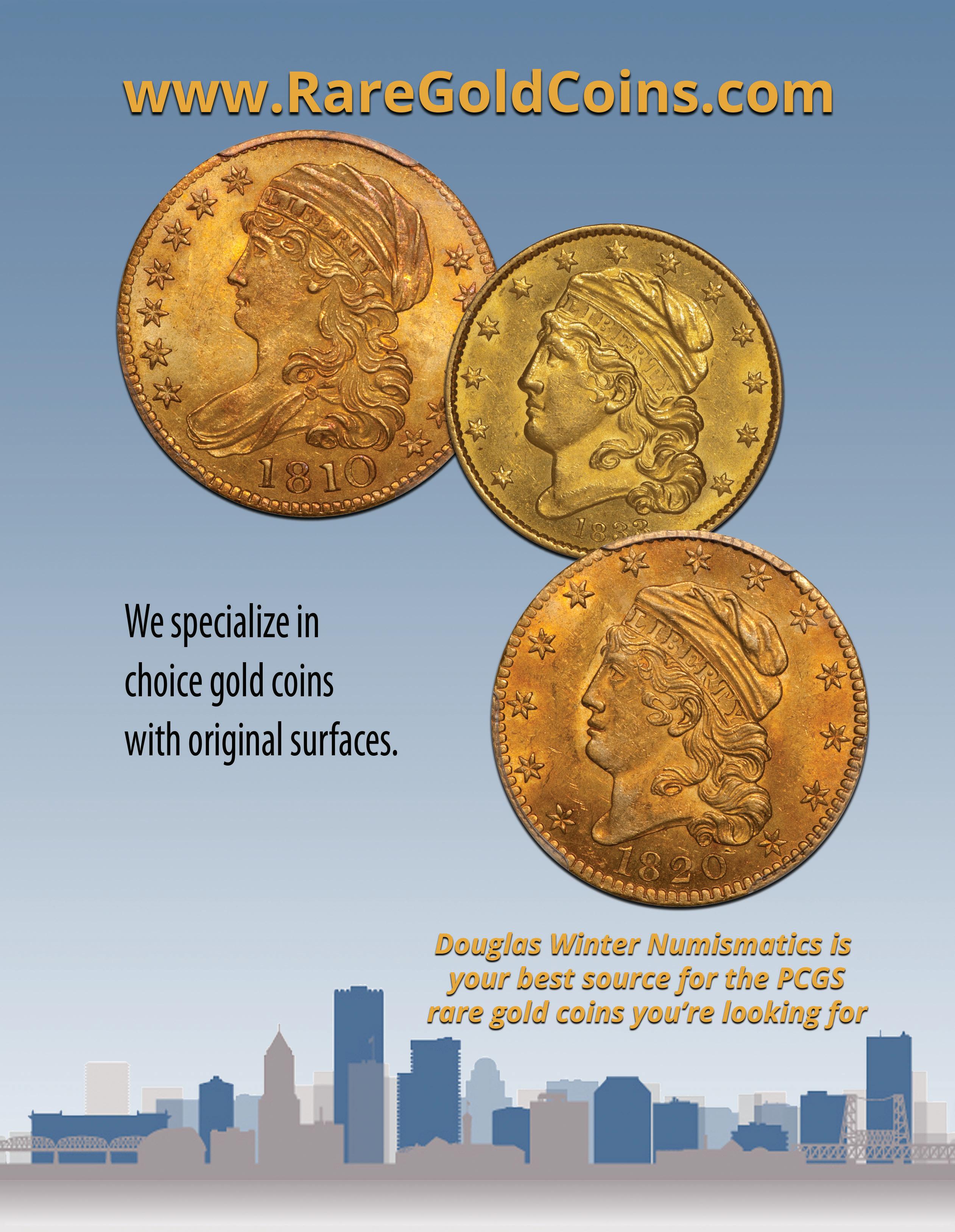
Auction Highlights
 By Jaime Hernandez
By Jaime Hernandez
The year 2023 started off very strong for the coin market. Many coins brought strong prices with some obliterating previous records. Other coins came out from hiding, as they hadn’t been publicly offered for decades. There are too many special pieces to list, but let’s highlight some of the coins (and a banknote) that recently brought robust prices at auction.
1870-S $3, PCGS SP50
The unique 1870-S $3 graded PCGS SP50, had been off the market since 1982, when Harry W. Bass, Jr. purchased the coin for what was then a record $687,500. Documents trace the coin’s provenance back to at least the early 1900s. This coin has it all – rarity, suspense, and excitement, and it is considered to be one of America’s greatest numismatic treasures. The coin was recently offered by Heritage Auctions, where the coin attracted much deserving attention before realizing an impressive $5,520,000 on January 5, 2023.
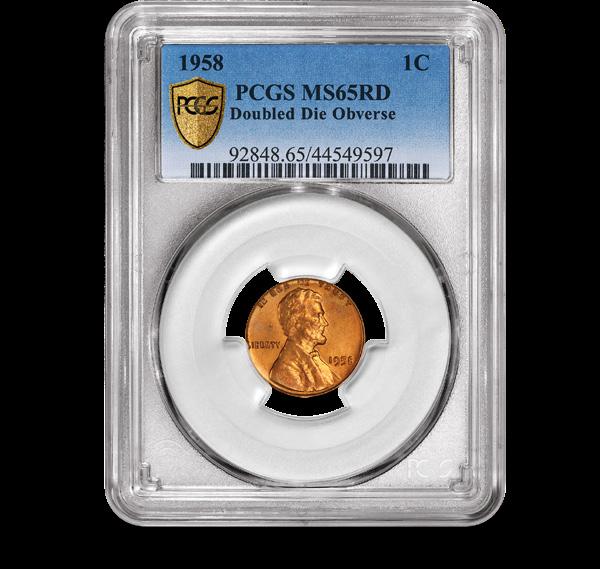


1958 Doubled Die Obverse Lincoln Cent, PCGS MS65RD
GreatCollections recently sold the “Red Copper Collection,” which contained some of the nicest examples in existence of Lincoln Cents and series varieties. Among the impressive lots was the 1958 Doubled Die Lincoln Cent graded PCGS MS65RD, an elusive variety yielding just three known examples. It is a true rarity of U.S. coinage, belonging to one of the most popular and widely collected series no less. This astonishing Lincoln Cent was offered by GreatCollections on January 22, 2023, hammering for an incredible $1,136,250.
1885 Liberty Head Double Eagle, PCGS PR67DCAM
Although it is estimated that about 77 examples of the 1885 Liberty Head Double Eagle were originally struck, there are only about 20 confirmed survivors. What's even more impressive is that the specimen profiled here is graded PCGS PR67DCAM, with none grading higher. Stack’s Bowers Galleries offered this coin in November 2022, when it realized $990,000.
Finally, we’d like to highlight this 1934 Fr. 2211-Lm $1,000 Federal Reserve Note. Although there are still many different $1,000 notes in existence, finding an example of the mule note (one bearing two face designs not intended to be paired) identified as Fr. 2211-Lm in higher grades can be difficult. At PCGS, we have graded only one example in PCGS Choice Unc. 63, with none grading higher. In January 2023, Stack’s Bowers Galleries offered this example, which realized $9,600.
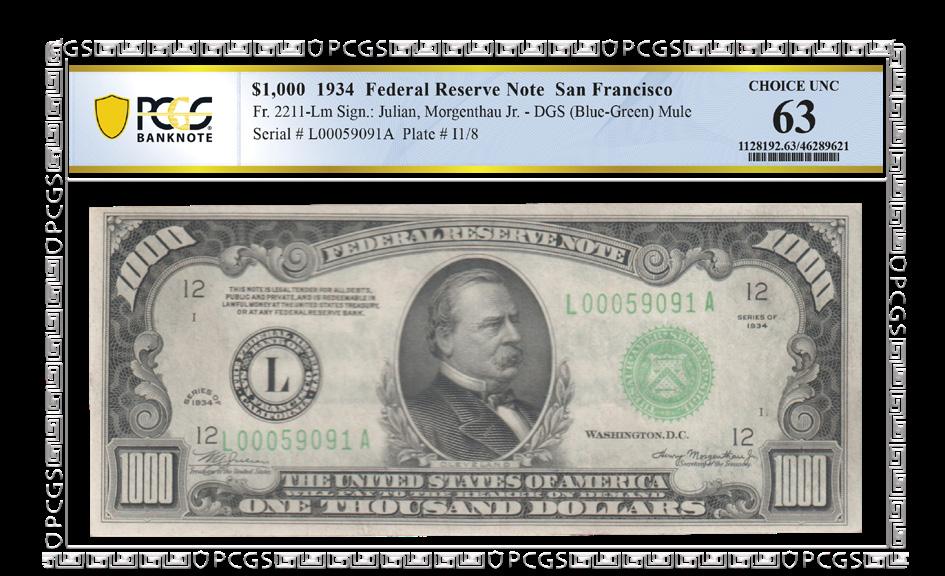
Jaime Hernandez is an editor for the PCGS Price Guide and has been a proud member of the PCGS team since 2005. By the time he reached his early 20s, Jaime was successfully buying and selling coins with some of the most prominent dealers and collectors in the country. Email: jhernandez@collectors.com
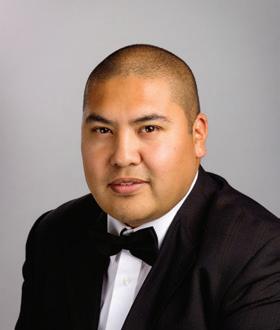
36 MAY - JUNE 2023 PCGS MARKET REPORT
1934 $1,000 Federal Reserve Mule, PCGS Choice Unc. 63 Fr. 2211-Lm
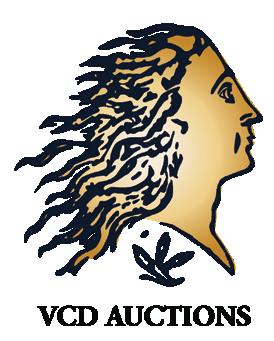
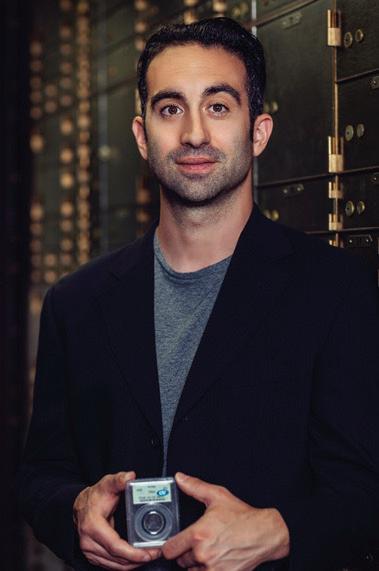
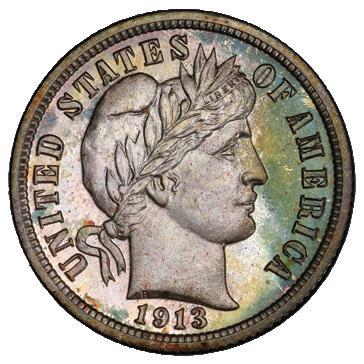
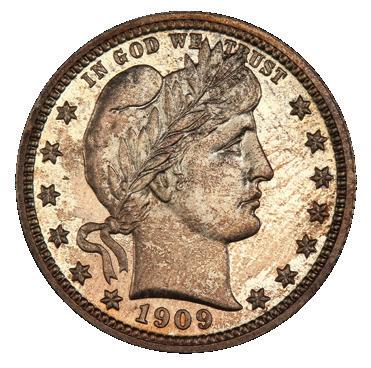

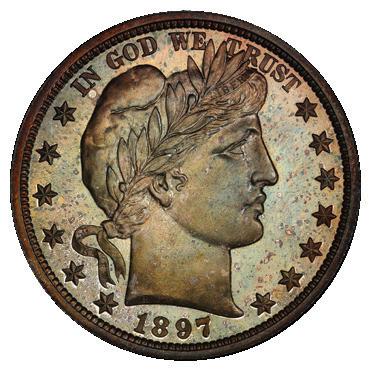







JULY - AUGUST 2022 37 RARE COIN MARKET REPORT REGISTER TO BID NOW Contact us anytime and let’s work together. 3651 Lindell Rd Suite #D259 Las Vegas, NV 89103 | Email: info@vegascoindealer.com Tel: 1-702-949-7515 Find more rarities from VegasCoinDealer.com on Collectors Corner Register To Bid Now Auctions.VegasCoinDealer.com | Call 702-949-7515 for any inquiries • Don't miss a chance to win some incredible coins and rare bars • Access Our Network of Quality Collectors Fast Payout to Consignors • For Free Appraisals Contact Us Now • Free Appraisals | Rare Coins | We Buy Coins – VCD - Vegas Coin Dealer VCD Auction #4 VCD Auction #5 Barbers and Bars May 11, 2023 , 7 PM EST/4 PM PST - Online Only World History Sale: World, Ancients & More June 29, 2023, 7 PM EST/4 PM PST - Online Only Let us get you the prices your coins and bars deserve. Consign today! Highlights from VCD Auction #4 (Ends May 11, 2023) 1913 10C PCGS PR67+ CAC Denali Collection Lot 1 1909 25C PCGS PR67CAM CAC Denali Collection Lot 6 1906 25C PCGS PR67+ CAC Denali Collection Lot 5 1897 50C PCGS PR67CAM CAC Denali Collection Lot 7 1912 50C PCGS PR67+ CAC Denali Collection Lot 8 1894 10C PCGS PR67 CAC Denali Collection Lot 2 4.66 oz Nevada Silver Co (1950’s) Lot 9 5 oz 12gr Comstock Tunnel & Drainage Company Virginia City Nevada 1980 Lot 13 Amalgam Plates San Francisco Advertisement Ingot (1880’s-1890’s) Lot 14 Nevada Silver Company Gold Specimen Piece from The Franklin Hoard Lot 15 8.89 oz Dugan & Helterbrand Company Inc (1980’s) Silver Ingot Lot 12
A Major Philippines Peso Error
By Jay Turner

International submissions from the PCGS office located in Hong Kong offer a wide and diverse range of coins. Recently, an example of a very special peso from the Philippines, during its time as a United States territory, stood out as something both unique and rare.
After the Spanish-American War in 1898, the United States gained the territories ceded by Spain, which included Guam, Puerto Rico, and the Philippines. The United States government took control of the territory, including its economy, and in 1903 began producing coins for the Philippines under the peso denomination. These coins would be produced at the United States Mints of Philadelphia and San Francisco, with additional coins being produced later in a branch mint in Manila and in Denver.

The initial Philippines peso coins issued under the United States contained 26.9563 grams of .900-fine silver and measured 38 millimeters in diameter. In 1907 the weight, fineness, and size would be reduced to 20 grams of .800-fine silver, with the coin measuring 35 millimeters in diameter. Both sizes carry the same design. The larger-size peso was issued 1903 until 1906.

The 1905 Philippines pesos made for circulation were minted at the San Francisco Mint in California. Philadelphia Mint issues were proof only with a mintage of 475. For the 1905-S Peso coins, two major varieties are recognized; they exhibit a date with either a curved or straight serif. The combined mintage of both varieties is 6,116,000 coins – the second-highest output of the large-size pesos.


38 MAY - JUNE 2023 PCGS MARKET REPORT
Close-up images of double struck error. Courtesy of PCGS.
PCGS AROUND THE WORLD
Philippines 1905-S Peso Error Double Struck, PCGS AU Details. Courtesy of PCGS.
An example of a Philippines (under the United States) 1905-S Peso was submitted to PCGS at the Hong Kong office in 2022. This piece stood out as an incredible error, for the coin was double struck with about an 8% difference between the two strikes, leaving two different pressings of the design on the coin. The obverse features unique elements from this double striking, including two volcanos (Mount Mayon), two hammers, and double anvils. The reverse features significant doubling seen on all the lettering, including a doubled mintmark and doubled date. Being from the United States Mint in San Francisco, this error can be considered comparable in significance to a double-struck Morgan dollar. While the coin was unfortunately cleaned, being graded AU Details by PCGS, it is nevertheless a desirable item.
What makes this and other Philippines pesos from this period special is that it survives. The discrepancy in value between a large- and a small-size pesos isn’t insignificant. On December 8, 1941, just a few hours after the attack on Pearl Harbor, the Philippines was attacked by Japan. Between 1942 to 1945, Japan occupied the Philippines. Much of the silver
reserve was dumped into Manila Bay to keep it out of the reach of the occupying forces. The silver that was found by the occupying Japanese would be taken and melted. While today many United States Philippines coins exist, many more were melted or conditionally affected from history. Having a unique and impressive error on a United States Philippines peso today is truly a special treasure for that owner.
Jay began collecting coins at the age of 13, when he inherited his uncle’s coin collection. Turner is proficient in U.S. and world coins, token and medal variety attribution, grading, and counterfeit detection. In 2017, Turner joined PCGS as a grader specializing in world coins. He is stationed at the PCGS U.S. headquarters and grades onsite for the Shanghai, Hong Kong, and Paris offices.


MAY - JUNE 2023 39 PCGS MARKET REPORT
PCGS AROUND THE WORLD : A MAJOR PHILIPPINES PESO ERROR
NOTEWORTHY NOTES
Approaching Perfection – One in a Billion?
 By Philip Thomas
By Philip Thomas
The 1899 Series $1 “Black Eagle” Silver Certificate is United States’ banknotes’ crisp, colorful response to U.S. coinage’s Morgan Dollar. Both are worth a buck (in face value, that is!), both circulated around the turn of the 20th century, and both feature an American bald eagle on one of its sides. Granted, one is significantly lighter and more foldable than the other (hello, banknote!), the two iconic types unquestionably have a lot in common.


Utterly ubiquitous as they are profoundly popular, Black Eagles of some variety and condition seem to dwell within the bourse floor showcases of every banknote-carrying numismatic dealer worth their salt, oftentimes cohabitating with their actually-made-of-silver $1 counterparts (Morgan Dollars!), just inches apart. Yet they also share something else – something I like to call “The High-Grade Phenomenon.” Allow me to explain.
Despite enormous production volume (over three billion Black Eagles were printed, and over 650 million Morgan Dollars were struck in total) and massive quantities still extant and available to collectors today, very few ultra-high-grade examples exist. These include the recently certified PCGS Superb Gem Uncirculated 69PPQ specimen featured here, and such pieces are anomalous aberrations that command jawdropping premiums if and when they are offered for sale.


This particular note, in this particular grade, can be considered more of a Black Swan than a Black Eagle. Much like Morgan Dollars grading MS69, their certifications are unexpected and highly significant events with very far-reaching consequences.
coins on the basis of their circulation wear and surface quality has also been applied to the evaluation of banknotes in recent decades, with sensible accommodations being made to assess paper and ink instead of metal and strikes. The grade of 70 is reserved for pristine perfection, while the grade of 1 is saved for something barely identifiable due to an untold number of years of use and abuse in circulation. The Sheldon Scale has some Richter Scale comparability – that is, at the highest rungs of the ladder, just a single step upward equates to a substantial uptick in rarity and yields a thunderous improvement in worth, causing markets to shake and quake.
To paraphrase the PCGS Banknote Grading Standards, which are available online, a grade of 69 equates to something that comes as close to perfection as possible (without being perfect) in terms of paper and printing quality, margin size, and balance, face-to-back-plate impression registration, handling, and other eye appeal-affecting considerations. This note falls just a hair short of the full 70 points, according to a consensus of highly trained eyes here at PCGS, consistently enforcing among the most rigorous standards in all of numismatics.



This could very easily be the finest Black Eagle in existence. And based on what we know about how many were originally produced and how many can meet or exceed the astonishing quality on display here – could this note be, literally, one in a billion?
Because banknote lots were hung on Southern California coin shop bid boards eye-level with a first-grader, a young Philip gravitated toward collecting notes versus their circular metal numismatic cousins in the mid-1980s. He has maintained his passion for banknotes ever since and joined PCGS in his current role as banknote specialist and research manager since the launch of PCGS Banknote in early 2020.
40 MAY - JUNE 2023 PCGS MARKET REPORT
1899 Series $1 “Black Eagle” Silver Certificate, PCGS Superb Gem Unc 69PPQ. Courtesy of PCGS.

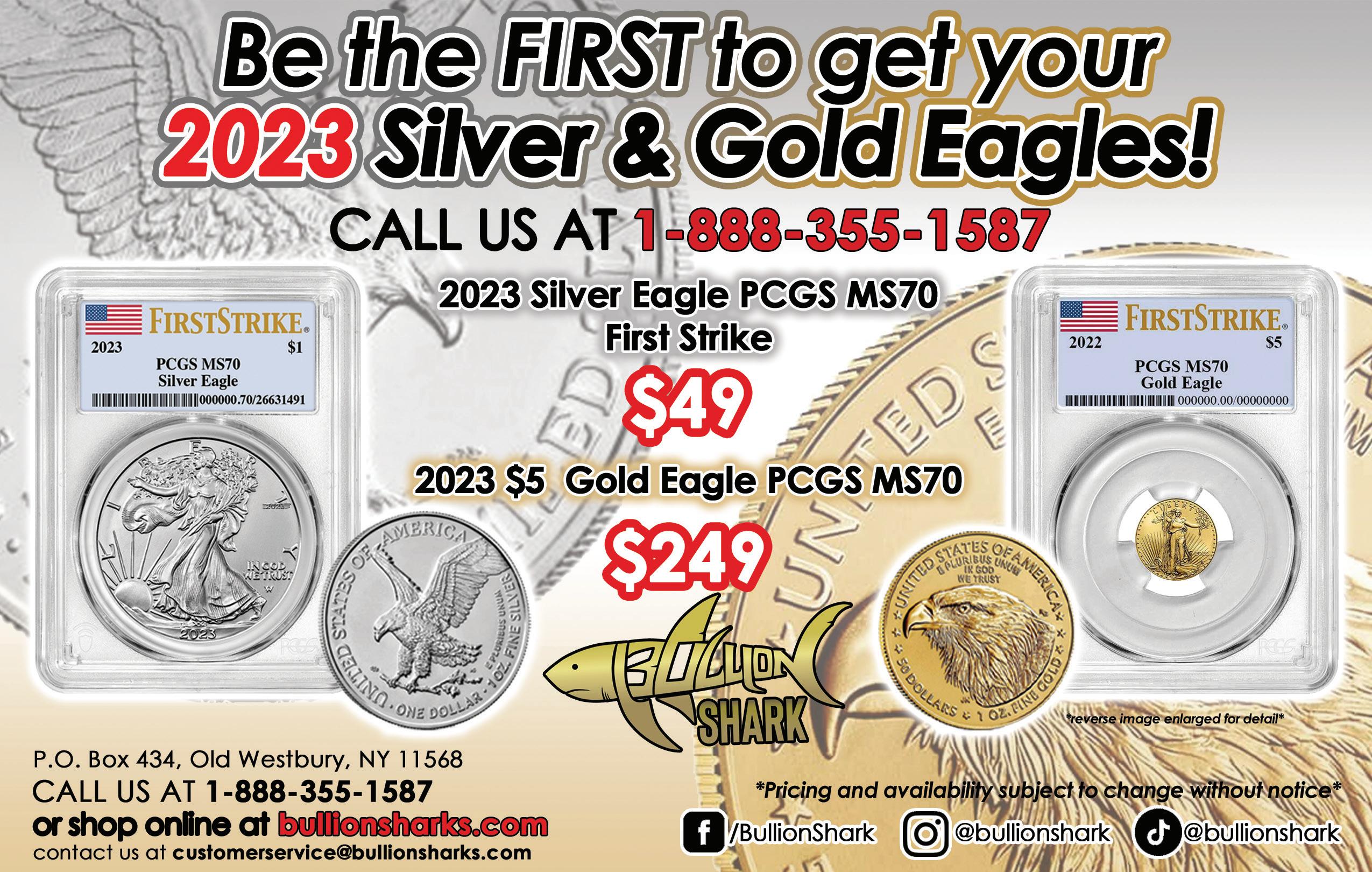
MAY - JUNE 2023 41 PCGS MARKET REPORT
COLLECTOR SPOTLIGHT
Winesteven
Many coin collectors have passions that extend beyond numismatics, and that’s the case with a collector known as Winesteven, a PCGS Set Registry icon who also enjoys fine wine! “Steve,” as we’ll refer to him throughout the rest of this article, began collecting coins at around the age of nine years old. “Apparently, I must have been living in a middleincome household, as I started collecting Roosevelt Dimes, not Lincoln Cents,” he laughs. “My dad owned a coffee shop, and one day he brought home a Twenty Cent piece for me. This was before the silver change after 1964. Apparently, a customer must have thought it was a quarter. I was fascinated!”

By the time Steve graduated from college, he joined his local coin club and began building a type set. “I found this so much more interesting than putting together a series of every date and mintmark.” He also began upgrading the coins in his collection, including his Twenty Cent piece. “My biggest numismatic regret – selling that original Twenty Cent piece when I bought an upgrade. Oh, how I wish I had that very coin back!” Still, his upgrades have boded very well for Steve, who was an early adopter of third-party coin grading. “100% of my coins are graded by PCGS!”
Joining the PCGS Set Registry in 2014, Steve boasts more than 65 PCGS Registry Sets, including a variety of high rankers, such as two Complete Dansco 7070 Modified Type Sets (one non-gold, the other with gold); a Silver Commemorative 50-Piece Type Set, Circulation Strikes; Shield Two Cents Basic Set, Circulation Strikes; and Franklin Half Dollars Basic Set, Proof (1950-1963); among others. Perhaps his favorite pursuit these days is his stunning Indian Cents Basic Set, Circulation Strikes (1859-1909) set. “At the moment, I feel my unique Indian Head Cent set and my
Dansco 7070 sets are my dream sets. Only recently did I acquire a 1909-S VDB Lincoln for my Lincoln Wheat Date set – it replaced my 1909 VDB. I guess that was my dream coin – as kids, we all continually searched [through] pocket change and rolls looking for that coin.”
More than 90% of his many PCGS Registry Sets rank among the top 12 of their respective categories. Yet, the vast majority of the coins within them are pieces that cost only three or four figures – relatively small sums compared to the five-figure-plus prices paid for many coins in top-tier sets. “I only buy coins for a slot that I’m comfortable at, and it’s true that I don’t seek any upgrades or stretch for the purpose of moving up in ranking! Wherever a set appears in rank, I’m OK with that.”
Steve remarks that no matter what coin he’s after, he only buys the ones he really likes – grade, eye appeal, and all. “I take that one step further whenever I see a coin for a potential upgrade – I ask myself, is that upgraded coin nicer than the one I have that will be replaced? Many times, it’s not. True example – in my Silver Commemorative 50-Piece Type Set there are three coins I’ve been waiting for years to upgrade. The problem is the coins I see just don’t have the eye appeal of my lower-grade coins. As such, I leave them as is. Patience is so very important to having eye-appealing sets.”
He's a big believer in building camaraderie with other collectors and learning from others. “A little more than four years ago, I started participating regularly in the Collectors Universe U.S. Coin Forum. Boy, have I learned a lot! I also try to share what I have learned with others.” A collector full of wisdom, Steve has one more tip he feels all collectors should remember. “Collect what you like. There is no right or wrong!”
42 MAY - JUNE 202 3 PCGS MARKET REPORT
Winesteven, pictured right, is a PCGS Set Registry connoisseur, with more than 65 sets on the popular collecting platform. Courtesy of Winesteven.
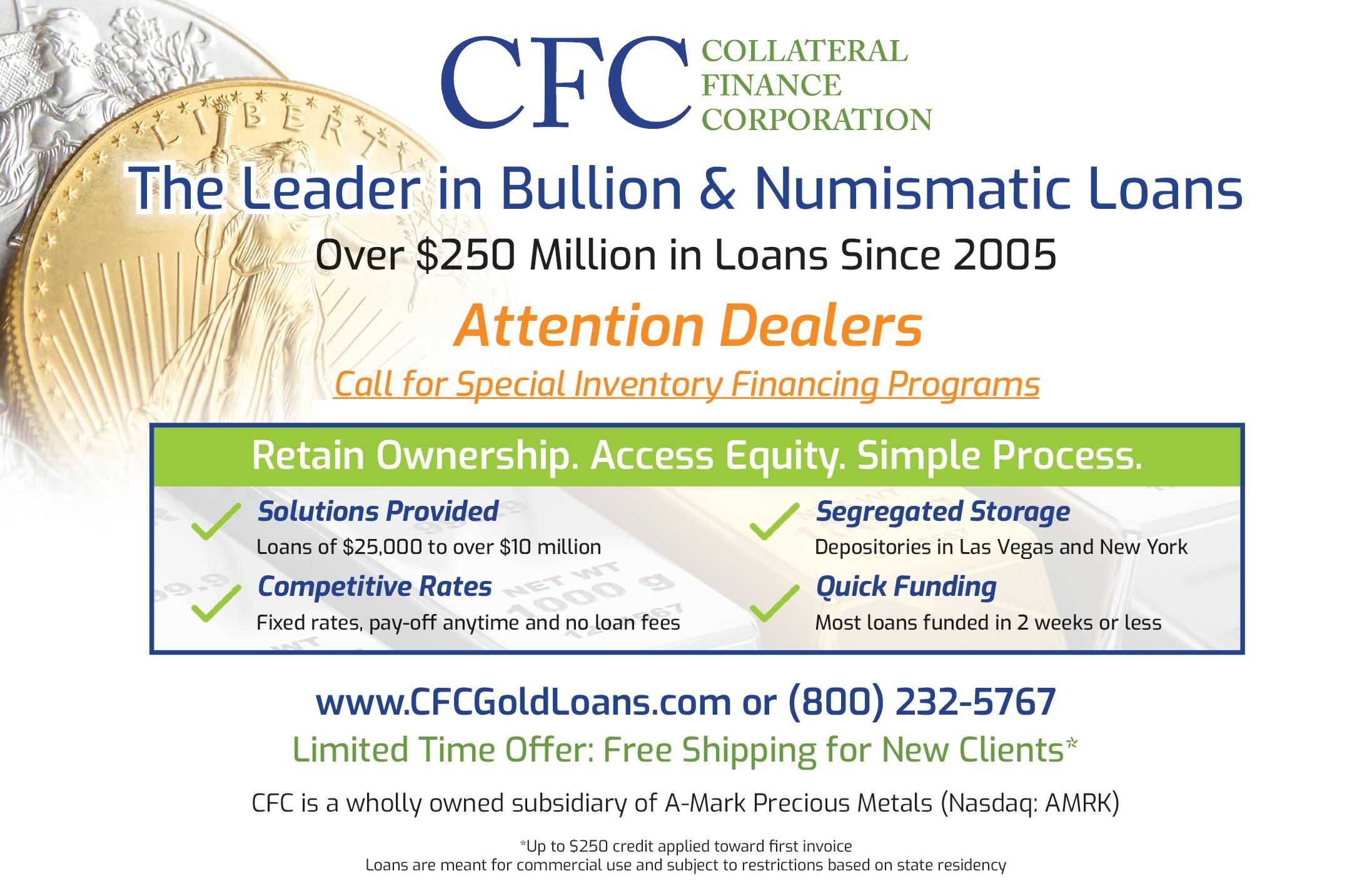
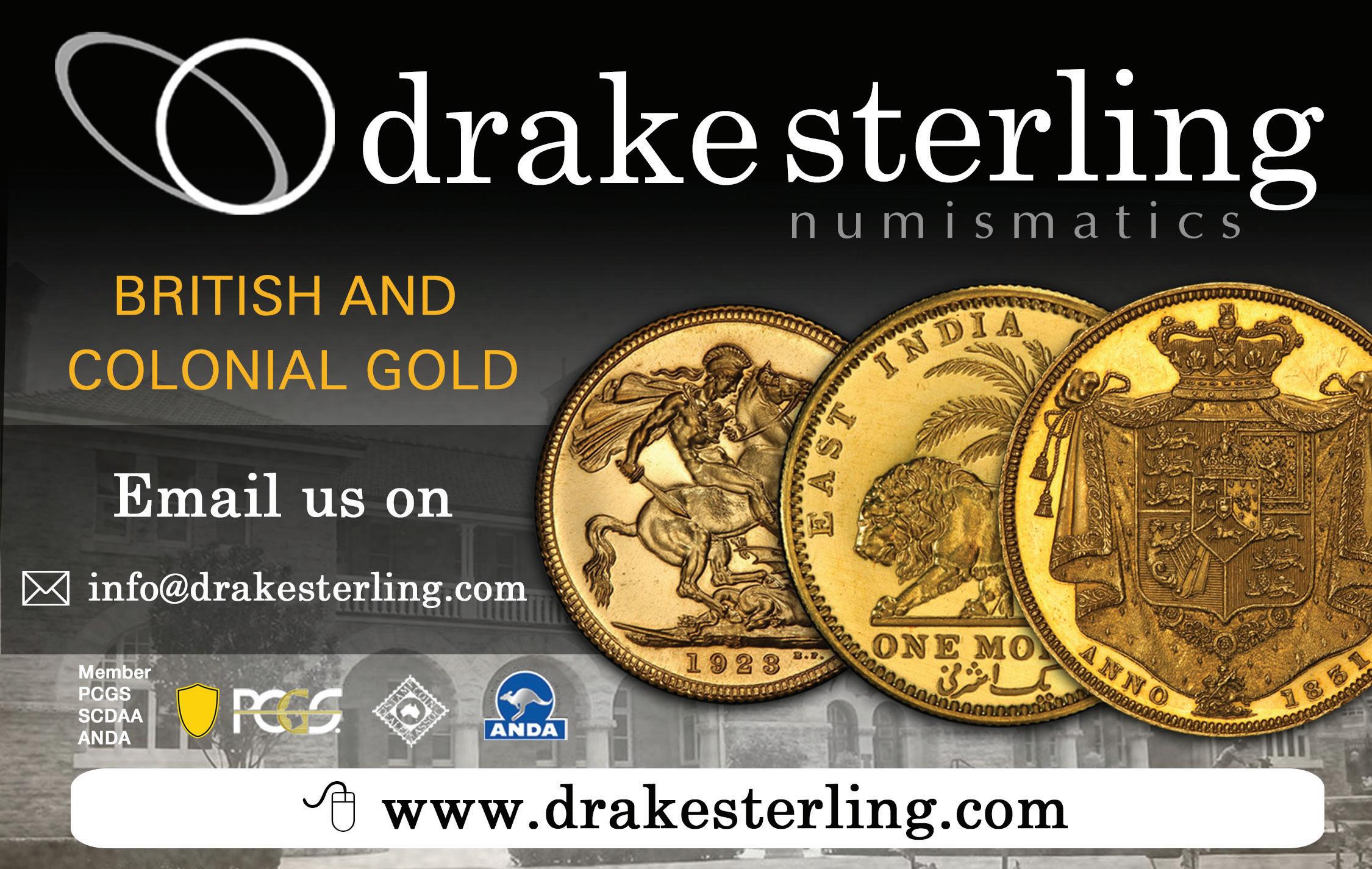
MAY - JUNE 2023 43 PCGS MARKET REPORT
GRADING STANDARDS
A Guide to PCGS Grades & Designations
There are 30 grades used by PCGS to grade coins, 1 being the lowest grade and 70 being the highest grade.
For a description of all the grades and designations used in the PCGS Market Report, refer to the PCGS Grading
Standards listed in this issue. Space does not permit us to show a comprehensive photographic grading guide here, but those interested in a detailed look at virtually all U.S. coins in all grades are referred to PCGS’s Photograde section, found at www.PCGS.com/photograde.
PCGS COIN GRADING STANDARDS

Regular Strikes
For regular strikes, the primary attribute for circulated grades, i.e. Poor (PO01) to About Uncirculated (AU58), is the amount of wear or the amount of the original design detail that is still evident. Other attributes contributing to the grade for circulated regular strikes are surface preservation and eye appeal, either of which can be positive, negative, or neutral and which affect the grade accordingly. For regular strikes in Uncirculated condition (MS60 to MS70), there are four primary attributes that determine grade: marks, strike, luster, and eye appeal.
A PCGS MS70 is a modern coin in "as struck by Mint" condition. Minor mintmade imperfections may be present. No damage or imperfections caused after minting. Not known in vintage coins.

A PCGS MS69 will show only one or two miniscule imperfections. Must be fully struck and have full original luster and eye appeal.
A PCGS MS68 will have some extremely minor imperfections. Must be sharply struck, have full original luster, and good eye appeal.
A PCGS MS67 will have some minor imperfections (marks, abrasions, etc). Must be well struck and have good luster and eye appeal.
A PCGS MS66 will have a few marks and/or abrasions. The strike, luster, and eye appeal must be good.
A PCGS MS65 will have some marks and/or abrasions, but they will be minor. The strike must be above average, and
A PCGS MS64 will have some marks and/or abrasions, and they may be significant. The strike and eye appeal should be average or above and must not be negative. Luster may be somewhat subdued.
A PCGS MS63 will have marks and abrasions that are moderate in number and/or size. Strike may not be full and eye appeal can be slightly negative. Luster may be somewhat dull.
A PCGS MS62 will have no wear on high points. There may be considerable marks and abrasions and some may be severe. Strike may not be full and eye appeal may be negative. Luster may be dull.
A PCGS MS61 will have no wear on the high points. There may be multiple heavy marks and abrasions. Strike may not be full, luster may be dull, and/or eye appeal may be negative.
Strike
The completeness/incompleteness of a coin’s intended detail when originally struck.
Luster
The strength and pattern of light reflected off a coin.
Surface Preservation
The condition of the surface of a coin, notably marks and/or scratches.
Eye Appeal
The element that “grabs” the viewer. The overall look of a coin. Often manifested as “toning.”

will have no wear on the high points. There may be many heavy marks and abrasions. Strike may not be full, luster may be very dull, and/or eye appeal may be quite negative.
A PCGS AU58 will show full detail with minor friction on only the highest points.
A PCGS AU55 will show full detail with friction on less than 1/2 of the surface, mainly on the high points.
A PCGS AU53 will show full detail with friction on 1/2 or more of the surface. There may be a very slight flatness on high points.
A PCGS AU50 will show full detail with friction over most of the surface and slight flatness on high points.
XF45 Detail is complete with most high points slightly flat.
XF40 Detail is complete with some high points flat.
VF35 Detail is 80 to 85% complete.
VF30 Detail is 70 to 80% complete.
44 MAY - JUNE 2023 PCGS MARKET REPORT PROFESSIONAL COIN GRADING SERVICE
VF25 Detail is 60 to 70% complete.
VF20 Detail is 50 to 60% complete.
F15 Detail is full in recessed areas. All lettering is sharp.
F12 Detail is evident in deeply recessed areas. Lettering is mostly sharp.
VG10 Design is worn with some detail evident.
VG08 Design is worn with only slight detail evident.
G06 Detail is flat, but rims are complete. Peripheral lettering is full.
G04 Detail is flat. Rims slightly worn. Peripheral lettering nearly full.
AG03 Rims are worn but most lettering is readable though worn.
FR02 Mostly worn, but some design details are visible.
PO01 Barely identifiable as to date and type.
Proofs
For proof strikings, the primary attributes of grade are hairlines and/ or marks (or lack of), reflectivity (for brilliant proofs), and eye appeal. Note that nearly all proofs are fully struck, thus strike is usually not a factor. Strike only comes into play when a
proof shows a partial strike, resulting in a downward adjustment of grade. Note that for toned brilliant proofs, the reflectivity is as perceived under toning.
A PCGS PR70 shows no imperfections under five-power magnification. Brilliant proofs must be 100% fully reflective.
A PCGS PR69 will show only one or two miniscule imperfections. Brilliant proofs must be 100% fully reflective.
A PCGS PR68 will have some extremely minor imperfections. Eye appeal must be outstanding. Brilliant proofs will be fully reflective.
A PCGS PR67 will have some minor imperfections (hairlines or perhaps an extremely minor mark or two). Eye appeal must be very good. Brilliant proofs must be fully reflective or virtually so.
A PCGS PR66 will have a few hairlines and/or very minor marks. Eye appeal must be very good. Brilliant proofs must be fully reflective or nearly so.
A PCGS PR65 will have minor hairlines and or minor marks. Eye appeal must be positive. Brilliant proofs must show good reflectivity. A PCGS PR64 will have noticeable
hairlines and/or small marks. Eye appeal must not be negative. Brilliant proofs may have subdued reflectivity. A PCGS PR63 will have obvious hairlines and/or marks. Eye appeal may be somewhat negative. Brilliant proofs may be dull.
A PCGS PR62 will have numerous hairlines and/or marks. Eye appeal may be quite negative. Brilliant proofs may be dull.
A PCGS PR61 will have lots of hairlines and/or marks. Eye appeal is negative. Brilliant proofs may not be reflective.
A PCGS PR60 will have no wear on the high points, but will be very hairlined and/or marked. Eye appeal is negative.
Brilliant proofs may not be reflective. Proofs below PR60 for proof strikings grading below PR60, the grading is based on the amount of wear and the standards are the same as for regular strikes.
In addition to grade, certain coins have characteristics that collectors recognize as important and PCGS designates these characteristics using the standards that follow.

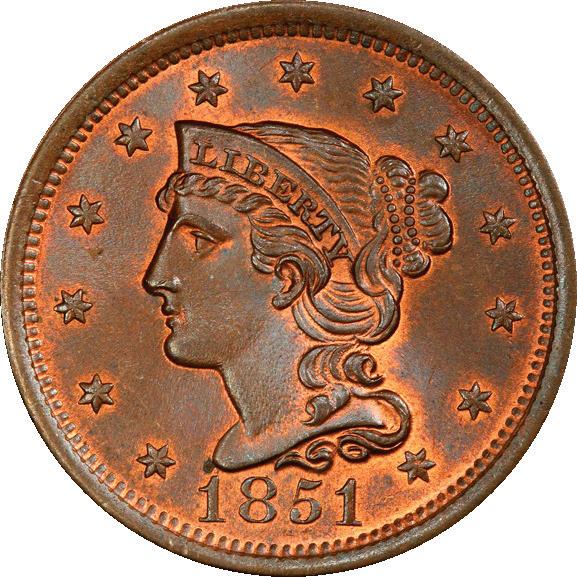
PCGS COIN DESIGNATIONS

MAY - JUNE 2023 45 PCGS MARKET REPORT
Brown (BN) PCGS designates Brown for copper coins that have less than 5% of their original mint-red color.
Red Brown (RB) PCGS designates Red and Brown for copper coins that grade MS60 or better and show between 5% and 95% of their original mint-red color.
Red (RD) PCGS designates Red for copper coins that grade MS60 or better and show 95% or more of their original mint-red color.
Color for Copper Coins (MS60 or better)
PCGS GRADING STANDARDS
Full Steps for Jefferson Nickels
Full Steps (FS) PCGS designates Full Steps for Jefferson Nickels that grade MS60 or better and show a full five or six steps in the portrait of Monticello (Thomas Jefferson’s home) on the reverse. To qualify for this designation, a coin must also have nomajor disturbances, including cuts and marks, to the separation of the steps.
Full Bands for Mercury Dimes
Full Bands (FB) PCGS designates Full Bands for Roosevelt Dimes that grade MS60 or better and show full separation of the upper and lower horizontal bands of the torch on the reverse. To qualify for this designation, a coin must also show no significant cuts or marks across the horizontal bands.
Full Head for Standing Liberty Quarters
Full Bell Lines (FBL) PCGS designates
Full Bell Lines for Franklin Half Dollars that grade MS60 or better and show full separation of the lines on the bottom of the Liberty Bell on the reverse. To qualify for this designation, a coin must also show no major disturbances, including cuts and marks, of the separation of the bell lines.
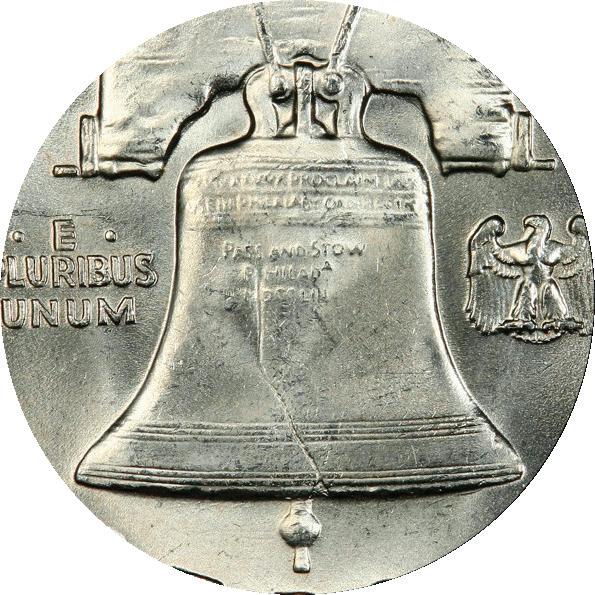
Full Bands (FB) PCGS designates Full Bands for Mercury Dimes that grade MS60 or better and show full separation of the central crossbands on the crossbands on the reverse. To qualify for this designation, a coin must also have no major disturbances, including cuts and marks, of the separation of the crossbands.
Full Head (FH) PCGS designates Full Head for Standing Liberty Quarters that grade AU50 or better and show full detail of Miss Liberty’s hair (on Type Ones) or helmet (on Type Twos); Type Ones (1916-1917) must show a distinct separation between the hair cords and the cap. Type Twos (1917-1930) must show three complete and distinct leaves to the helmet, a complete outline to the bottom of the helmet, and a distinct ear hole. Note that on the ultra-rare 1918/7-S, PCGS will designate Full Head on coins that grade XF40 or better and that meet the Full Head criteria.

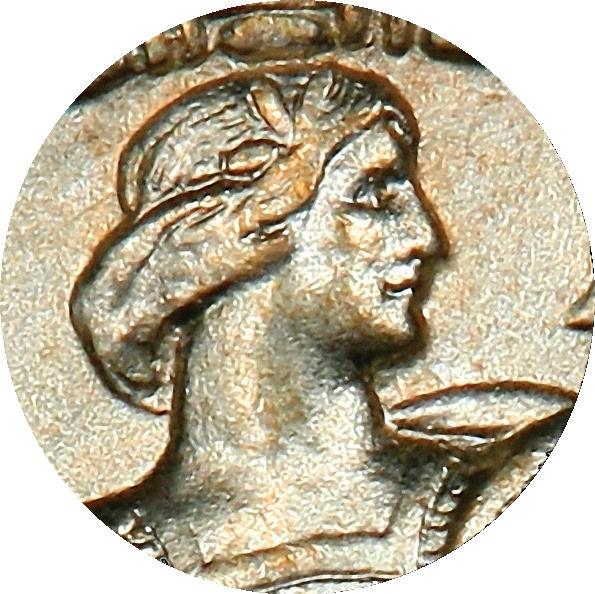
Prooflike (PL) PCGS designates
Prooflike for coins that grade MS60 or better and show clear reflectivity, i.e. mirrored surfaces at a distance of two to four inches. If the cartwheel effect or striations cause an area to lose clarity, the designation will not apply.
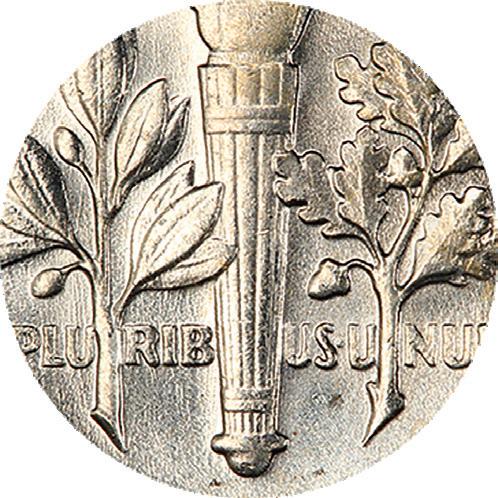
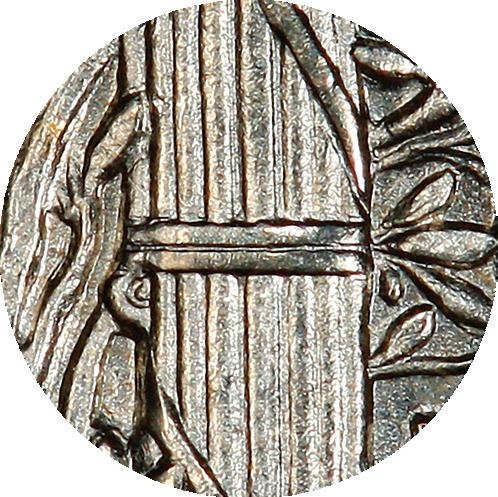
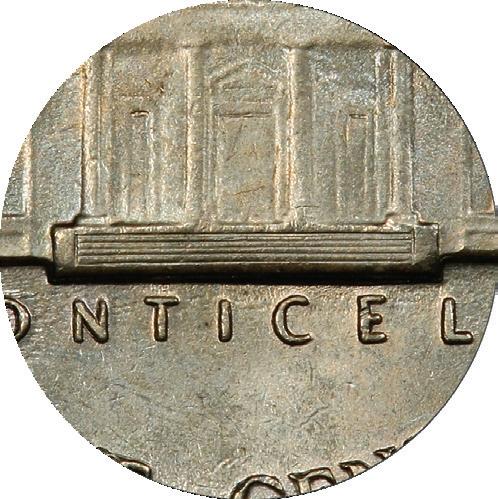
46 MAY - JUNE 2023 PCGS MARKET REPORT
PCGS GRADING STANDARDS
Full Bands for Roosevelt Dimes
Full Bell Lines for Franklin Half Dollars
Prooflike Surfaces
Prooflike Surfaces
Deep Mirror Prooflike (DMPL) PCGS designates Deep Mirror Prooflike for Morgan Dollars that grade MS60 or better and show deep reflectivity, i.e. deeply mirrored surfaces. The differences between PL and DMPL is one of degree.

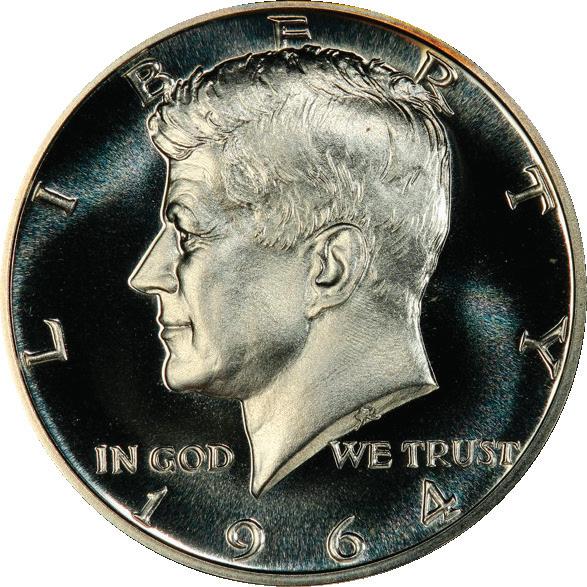

No Grade Coins
PCGS does not grade coins that are counterfeit, have been artificially toned, have had their surfaces altered, have been environmentally damaged, have been abrasively cleaned, have extremely large scratches, or have been repaired. Some allowances are made for ultra-rarities, Colonials, and Territorial gold coins, in which there are some instances when “net grading” is used by PCGS as a service to the numismatic community.
Cameo (CAM) PCGS designates Cameo for brilliant proofs that show light to moderate frosting of the devices. Both sides of a coin must have frosted devices to earn the Cameo designation.
Deep Cameo (DCAM) PCGS designates Deep Cameo for brilliant proofs that display deep, even frosting on the devices of both sides of the coin.
Would you like further information about the PCGS Grading Standards, Designations, and No Grade Standards? View high-resolution images and in-depth videos for each at www.PCGS.com/grades. For PCGS Banknote grading standards visit www.PCGS .com/banknote/grades.
MAY - JUNE 2023 47 PCGS MARKET REPORT
Cameo Proofs
PCGS GRADING STANDARDS
PCGS Holder No Grade coins are returned to the submitter with encapsulation. Code Reason 82 Filed Rims 91 Questionable Color 92 Cleaning 93 Planchet Flaw 94 Altered Surfaces 95 Scratches 97 Environmental Damage 98 Damage No PCGS Holder No Grade coins are returned to the submitter without encapsulation. Code Reason 83 Peeling Lamination 86 Authenticity Unverifiable 90 Counterfeit 96 No Service 99 PVC Residue










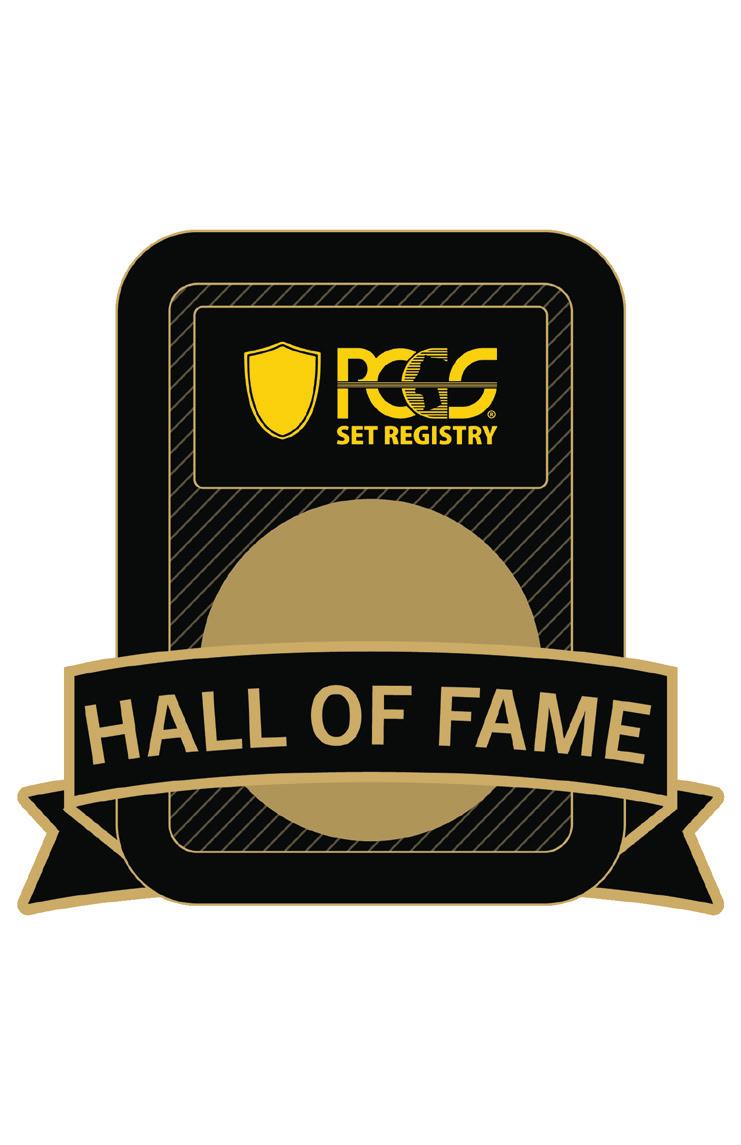
Update Your Sets By To Participate & Compete For An Award! Join us at the September Long Beach Expo To learn more about the PCGS Set Registry Awards, visit: PCGS.COM | THE STANDARD FOR THE RARE COIN INDUSTRY | FOLLOW @ PCGSCOIN | ©2023 PROFESSIONAL COIN GRADING SERVICE | A DIVISION OF COLLECTORS UNIVERSE, INC. PCGS.com/SetRegistry/Awards
THE WORLD’S LARGEST ENCYCLOPEDIA OF U.S. COINS FITS IN YOUR POCKET

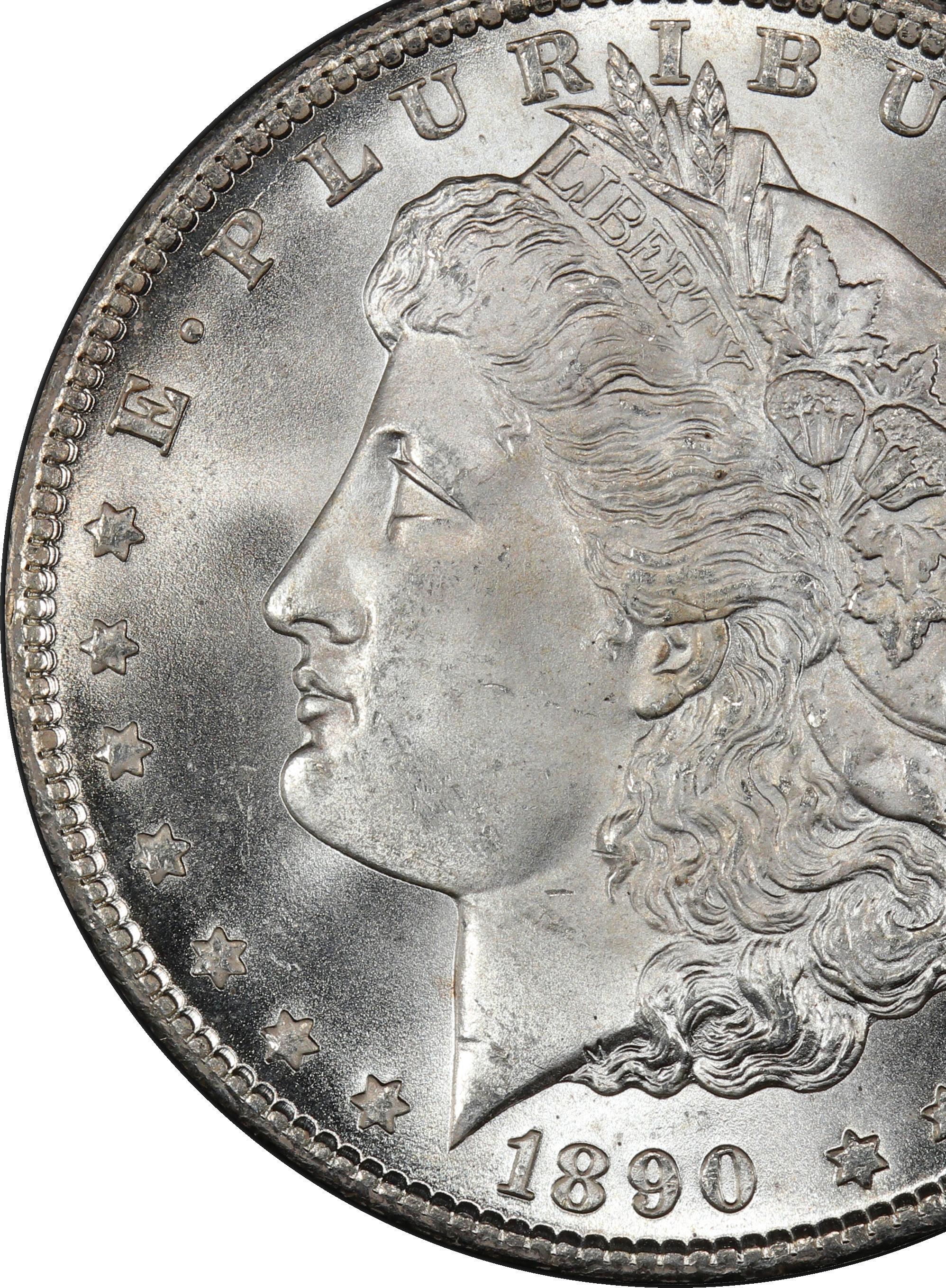
Price Guide values and population statistics



NFC technology and barcode scanning for instant coin look-up
2,580 high-resolution coin photographs for comparisons and grade estimations

PCGS.COM | THE STANDARD FOR THE RARE COIN INDUSTRY | FOLLOW @PCGSCOIN | ©2023 PROFESSIONAL COIN GRADING SERVICE | A DIVISION OF COLLECTORS UNIVERSE, INC.
1826/6 Capped Bust Quarter Eagle, PCGS MS61
By Shannon Rajkitkul
Previously known as 1826/5, the 1826/6 Small Capped Bust, Large Diameter Quarter Eagle is graded PCGS MS61 and being offered by Paradime Coins. Courtesy of Paradime Coins.

The 1826 Quarter Eagle is the single-rarest Small Capped Bust, Large Diameter (Type 2) $2.50 business strike, with the lowest mintage for the series at just 760 pieces. Only 32 are estimated to survive today across all grades, most of which are in the XF to AU grade range.
In the 1790s and into the 1800s, the United States was moving away from a system of coinage based on Spanish and British currency to a decimal monetary system based on the dollar as we know it today. The quarter eagle, along with other gold coins produced by the Philadelphia Mint in the early 19th century, was part of this transition after a long 13-year hiatus that restarted in 1821 with the first of the Small Capped Bust, Large Diameter Quarter Eagles.

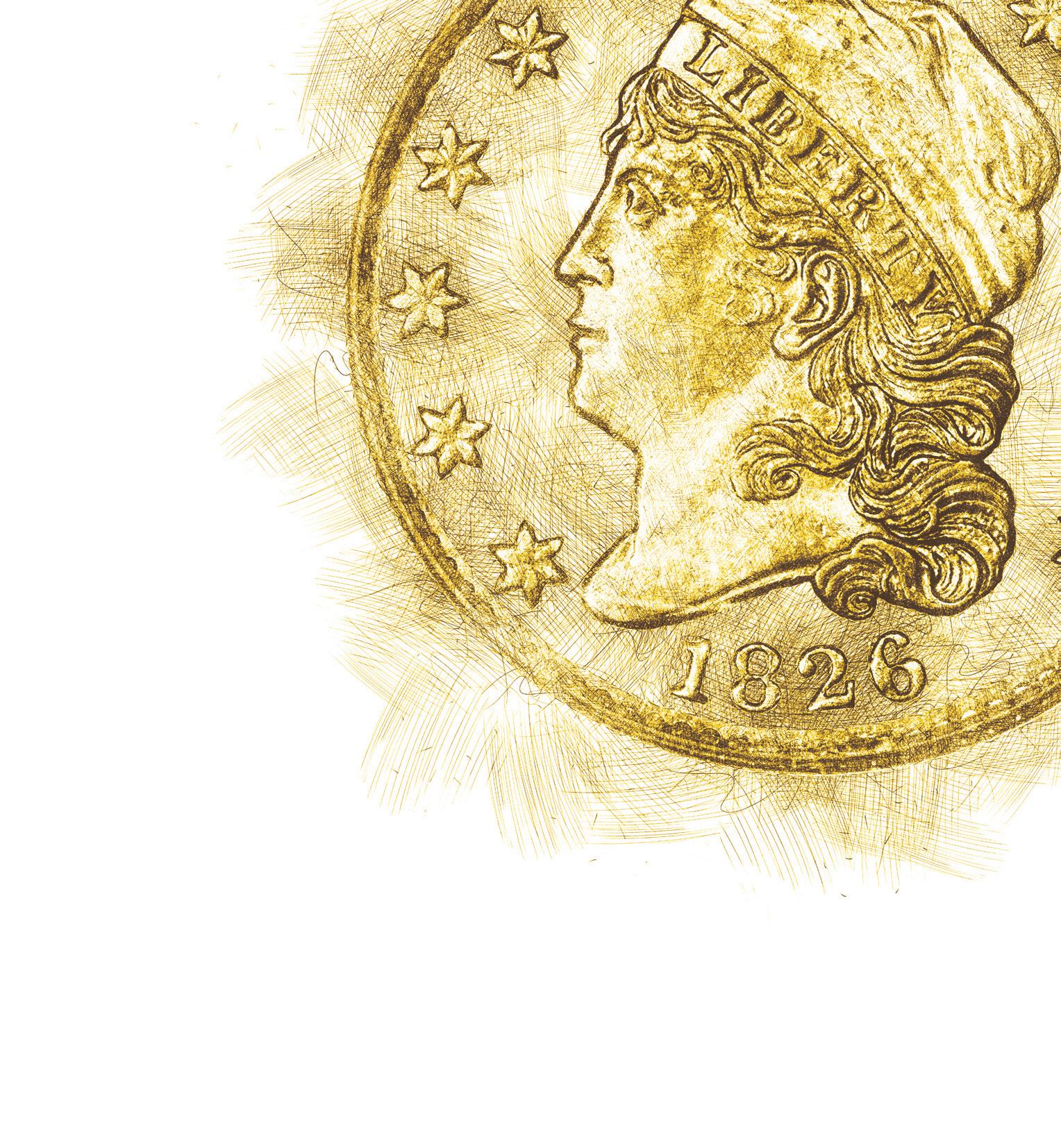
In more recent times, Capped Bust Quarter Eagles have become popular collectibles. Yet, they remain undervalued for
several reasons, including the fact that there are just five dates in the Type 2 Capped Bust series to collect (1821, 1824/1, 1825, 1826/6, and 1827). There is also their overarching scarceness given how many were melted for their gold content, and the fact that all issues in this series yielded mintages of fewer than 4,500.

Beyond the rarity of the type, the 1826/6 Quarter Eagle, previously known as “1826/5,” has left very few examples for collectors today. PCGS has graded just 19 specimens. Paradime Coins is humbled to have handled some of the finest examples of this scarce coin, including a PCGS AU50 example and this stellar PCGS MS61 specimen here being among the best. In fact, it is better than even the two examples enshrined in the Smithsonian Institution collection, which are both graded MS60. This piece has multiple cool factors going for it as the key to the series and being one of the lowest-mintage business strikes among all quarter eagles. Most importantly, this specimen has original surfaces, critical for collecting the best examples of early gold. Paradime Coins is pleased to offer this trophy of a coin and the key rarity for the quintessential Capped Bust Quarter Eagle series.
Shannon Rajkitkul is the owner and President of Paradime Coins. Paradime Coins places rare, attractive, top-quality coins directly with customers, and has done so for over 10 years. Visit www.ParadimeCoins.com/Subscribe and receive First Shot to their exclusive New Purchases (NEWPs) Mailing List. You can reach Shannon directly by email at shannon@paradimecoins.com or visit www.ParadimeCoins.com.

50 MAY - JUNE 2023 PCGS MARKET REPORT
PCGS COIN OF THE ISSUE

Understanding Long-Term Coin Market Trends
By Mark Ferguson
Large cents, like this 1814 Classic Head Cent, have seen more cyclical ups and downs as the numismatic market moves in and out of economic and collecting seasons. Courtesy of PCGS TrueView.




Understanding long-term coin market trends can help you make better deals when you’re buying and selling coins. If you
can develop a sense of whether the coin market is rising or falling, you’ll have an idea of whether you’ll have to stretch to buy coins or if the market’s positioned right so you can be a tougher negotiator. Similarly, having a sense of how the overall coin market is trending will help you decide whether it’s a good time to sell coins or if it’s better to wait in order to get the highest prices you can reasonably expect.
There’s an overall coin market trend in which demand and prices are rising, falling, or are stable. Of course, there are also market trends for individual series of coins that may run counter to the overall coin market trend. In addition, there can be different market trends within a particular coin series. For example, in the present market, competition remains fierce to purchase the highest-grade rarities at record-setting prices. But at the same time, there’s been a slight pullback in prices for more common, mid-grade Mint State coins, like those grading MS63 to MS65 in series where higher grades exist. What I mean is, the highest grades for some rarities are

52 MAY - JUNE 2023 PCGS MARKET REPORT
MARKET MATTERS
Classic silver commemorative half dollars, like this 1925-S California Jubilee Half Dollar, haven’t been atop the market since the 1980s. Courtesy of PCGS TrueView.
often circulated or low-grade Mint State.
You can develop a sense of trends within the coin market by discussing this topic with dealers and active collectors, reading columns like this one, following posts on the PCGS Forum, studying price guides, attending coin shows and auctions, or even joining a specialized club or group. Keep in mind, though, that opinions and experience vary, and you’ll have to weigh everyone’s comments. For instance, anecdotally, it seems that in predicting whether precious metals prices will rise or fall during the coming months, half the people believe they’ll rise, while the other half believe they’ll fall.
As members of the PCGS Price Guide team, we have an advantage in observing coin market trends. We comb through auction records all day long, analyzing the market and updating prices. Personally, I’ve been a market analyst and contributor to major price guides for more than 20 years. I’ve also been active in numismatics for much longer than that.
As I’ve watched the coin market during that time, I have observed many changes. The coin market is greatly influenced by outside economic forces. For example, the inflationary forces of the last few years have greatly stimulated demand and prices for rare coins as people have sought ownership of tangible assets. This trend accelerated after the stock market experienced a major correction at the beginning of the COVID-19 pandemic in early 2020. For nearly a decade prior to that time, stocks were appreciating and attracting capital away from the coin market.
Those events of spring 2020 provided a “turning point” in the coin market, and that’s what I like to refer to as a major change in the overall direction of the coin market. Another, earlier turning point occurred during the 2007 to 2008 financial crisis, when rare coin prices experienced a serious correction. Rare coin prices began recovering during 2010 and 2011 and continued to appreciate until the fall of 2014 and early 2015, when prices began a very slow, downward spiral, until reversing in 2020.
For some, it takes courage to buy coins in a retreating market. But that’s the best time to search for coins for a collection and to negotiate to buy or bid at auction. Competition is lower during times like that. One major drawback to buying in a slow market, though, is that people hold coins and collections off the market until demand and prices begin to rise again, making it difficult to locate scarce and rare coin issues.
I’m not a fan of trying to study coin prices and figure out which coins are undervalued, and then trying to buy those coins. That’s really an attempt to figure out what coins people will want to buy in the future. Instead, I prefer to see a collectorinvestor decide what they want to collect and then build a high-quality collection, whether the coins are circulated or
Mint State. After all, it can take many years to build a highquality collection with the standards you set for it.
Once you decide on the makeup of the collection you want to build, you can begin learning about past market trends for that series. If it’s a type set, you can learn about market trends of specialized areas within the coin market when going after those coins. For example, what has been the market trend with circulated Liberty Seated coinage?
Importantly, coin market trends within various series don’t always repeat themselves, like they seem to do in the overall coin market. While prices in the general coin market tend to rise and then soften or plateau and then rise again to seemingly new, higher levels, individual series or collecting areas might take longer to repeat that cycle. For example, the market for classic silver commemorative half dollars was extremely hot during the late 1970s and into the 1980s, then the market for that area reversed. Comparatively, there’s been only mild market interest in early commemoratives since that time. Similarly, several important, influential collectors of early copper coins passed on a decade or so ago, leaving the early copper market with a void of top collectors. Scarce die varieties began selling as type coins to new collectors.
Again, learning about market trends in the overall coin market and those in the specialized area you collect and invest in will make you a sharper buyer. Use that knowledge to your advantage when negotiating to buy coins and when bidding in auctions.
Mark Ferguson began buying and selling coins in 1969. He graded coins for PCGS between 1986 and 1990 and currently serves as the company's senior price guide consultant. He’s a numismatic researcher, writer, appraiser, and advisor, and he authored The Dollar of 1804: The U.S. Mint’s Hidden Secret.
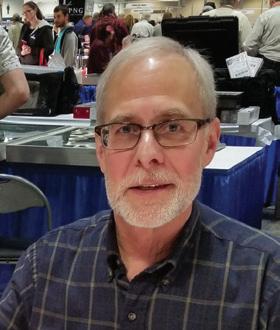
MAY - JUNE 2023 53 PCGS MARKET REPORT
MARKET MATTERS – UNDERSTANDING LONG-TERM COIN MARKET TRENDS
I Did It My Way
By Sanjay Gandhi
I read to my father a few nights a week as his eyesight is not what it used to be due to macular degeneration. In the last year, we’ve read books about Michelle Obama, Jim Thorpe, Charlton Heston, Marlon Brando, and the Conquistadors, to name a few. One book we recently started reading is titled Einstein , written by Walter Isaacson. In the first chapter, “The Light-Beam Rider,” Isaacson writes, “His quest began in 1895, when as a 16 year old he imagined what it would be like to ride alongside a light beam. A decade later came his miracle year, described in the letter above, which laid the foundations for great advances of twentieth century physics: relativity and quantum theory.” Albert Einstein had immersed himself in mathematics at an early age, his theories revolutionized science and technology.

Global positioning satellites, or GPS, is a technology that is possible nowadays because of “general relativity,” a concept conceived in the early 20th century by Einstein. His “stimulated emission” theory, proposed back in 1916, led to the development of light amplification by stimulated emission
of radiation, or LASER technology. In the last decade, The U.S. Mint, Royal Mint of Great Britain, and the Polish Mint have incorporated the use of lasers to etch die work.
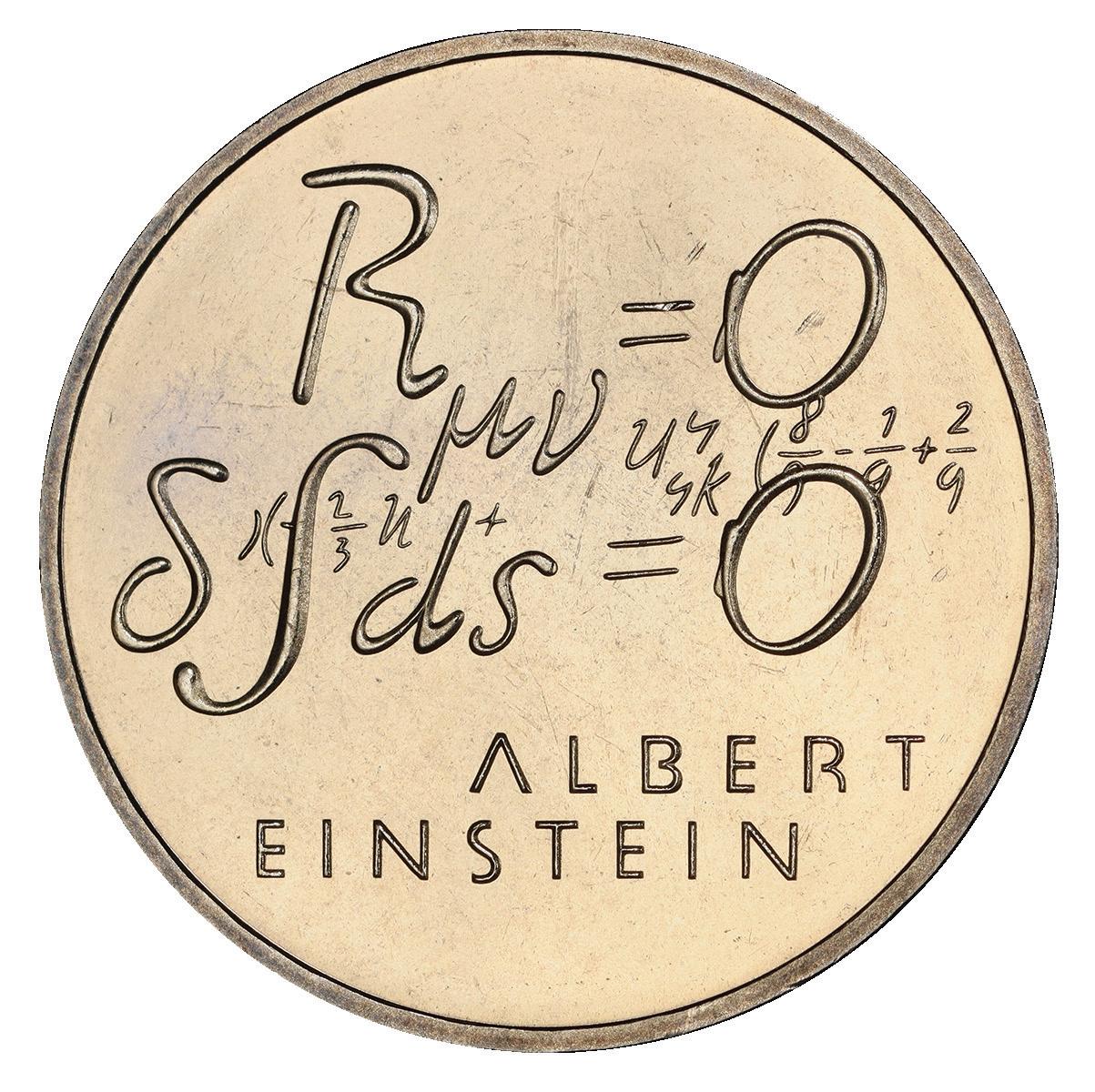



The influence of Einstein’s imagination has continued to grow exponentially.
One of Einstein’s many famous quotes is, “Imagination is more important than knowledge. Knowledge is limited.
54 MAY - JUNE 2023 PCGS MARKET REPORT
PCGS MS69 2017 Ukraine 5 Hryvnia First Earth Satellite. Courtesy of PCGS ValueView.
PCGS MS67 1979 Switzerland 5 Franc Einstein Formula. Courtesy of PCGS TrueView.
Imagination encircles the world." Actor Charlie Chaplin was one of those imaginative geniuses of the silent-film era who expressed human emotions without words. His ability to express himself as “The Tramp,” or his signature character with a mustache and hat, was created during his relentless pursuits of the arts. Chaplin’s upbringing was extremely difficult to say the least. Both of his parents were artists, who endured extreme poverty in Victoria, London, England, and unfortunately they could not raise their children on their own. Charlie and his brother were sent to a school for orphans at early ages.
Once Chaplin became a world-renowned artist, his encounters with other famous people became more frequent. Einstein was invited to the premiere of Chaplin’s film City


The two shared some interesting conversations. One such conversation unfolded as follows:


MAY - JUNE 2023 55 PCGS MARKET REPORT
PCGS PR69DCAM 1994 France 100 Franc Charlie Chaplin. Celebrating 100 Years of Cinema. Courtesy of PCGS ValueView.
Lights on February 2, 1931, in Los Angeles as shown in the image below.
Albert Einstein and Charlie Chaplin attending the premiere screening of the movie City Lights. Public domain image retrieved from Wikipedia.com.
I DID IT MY WAY
PCGS MS67 2022 Great Britain £2 Britannia. Laser etched obverse wave pattern to prevent counterfeiting. Courtesy of PCGS TrueView.
Einstein: “What I most admire about your art is your universality. You don’t say a word, yet the world understands you!”
Chaplin: “True. But your glory is even greater! The whole world admires you, even though they don’t understand a word of what you say.”
On September 21, 1931, Chaplin sent a telegram to meet with Mohandas Gandhi in the East End of London. Gandhi had never seen his films but his circle of confidants knew of Chaplin and they welcomed him. On September 22, 1931, a meeting took place at a friend's home. Both men shared a common view that machinery should not replace man. ChatGPT, which is an artificial intelligence chatbot, has spurred a similar debate worldwide in the past few months. Chaplin was quoted as saying, “Gandhi was the most entertaining man I had ever met.” Chaplin would go on to make the movie titled Modern Times, which was inspired by his meeting with Gandhi.


A little over a month later, in October 1931, Einstein had written a letter to Gandhi. It mainly reads, “You have shown through your works that it is possible to succeed without violence even with those who have not discarded the method of violence.

We hope that your example will spread beyond the borders of your country, and will help to establish an international authority, respected by all, that will take decisions and replace war conflicts. I hope that I will be able to meet you face to face some day.” Unfortunately, a meeting between these two individuals never transpired. However, they had great admiration for each other throughout their lives.
The imagination may be expressed in limitless forms such as physics, mathematics, comedy, film, law, humanitarian efforts, and the minting of coins, to name a few. Artists may choose to express themselves freely to the world. There is no wrong way. Filtered or not, artists have their own style, and may attempt a multitude of approaches. Which may lead them on directionless paths of creativity. Free to imagine what their hearts desire. During their lifetimes, these three individuals could have never envisioned how their contributions would impact and shape humanity throughout generations of lifetimes.
56 MAY - JUNE 2023 PCGS MARKET REPORT
Charlie Chaplin and Mohandas Gandhi meeting at a friend’s home in the East End of London. Public domain image retrieved from Wikipedia.com.
PCGS PR70DCAM 2022 Mongolia 1000 Togrog Mahatma Gandhi. Courtesy of PCGS ValueView.
PCGS MS68 1979 Switzerland 5 Franc Albert Einstein Portrait. Courtesy of PCGS TrueView.
I DID IT MY WAY
The times I spend with my dad reading about others' experiences is awesome. Books about others continue to expand both of our imaginations and experiencing life through the lens of another individual will be a different journey for everyone. The journey of coin collecting will be a different experience for each individual as well. History and numismatics are intertwined like a strand of deoxyribonucleic acid, or DNA. It twists and turns and is fairly uniform most of the time. But, sometimes, deviating outside boundaries can open up our thought process beyond whatever we thought possible. Possibly, like the individuals noted above… Or Frank Sinatra.

Sanjay Gandhi is a senior content manager at PCGS. His knowledge base consists of a wide variety of world coinage, and he has a great appreciation for toned coins that display vibrant colors. In addition to contributing content to PCGS Market Report, he also assists collectors with the PCGS Set Registry.
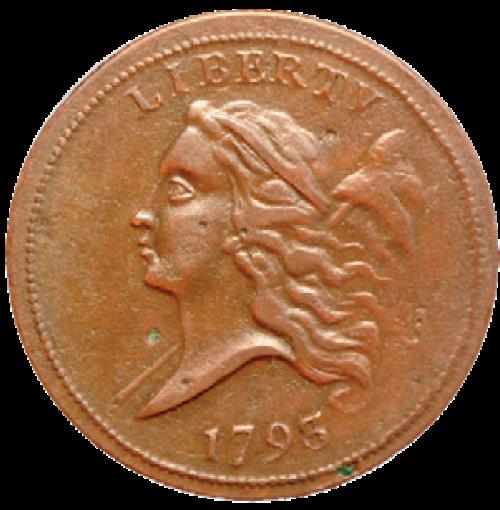


“I love what I do and I take the covenant I make with my clients seriously. As opposed to just doing transactions, I am interested in forming an ongoing collecting relationship with my new clients. Please feel invited to contact me.”
 — Chris Victor McCawley
— Chris Victor McCawley
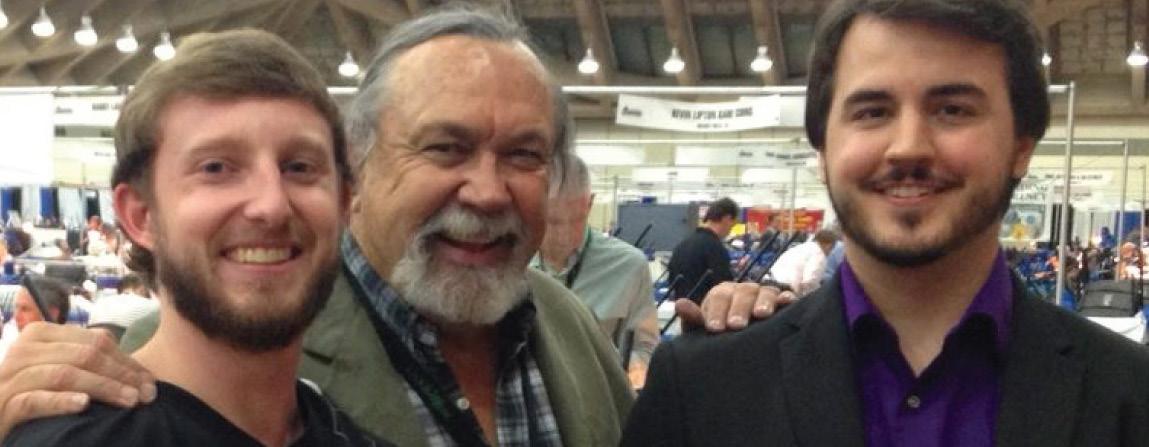
MAY - JUNE 2023 57 PCGS MARKET REPORT
PCGS MS67 1999 Hungary 2000 Forint Thinking Man. Courtesy of PCGS ValueView.
I DID IT MY WAY
CHRIS VICTOR MCCAWLEY EARLYCENTS.com stores.ebay.com/friscomint P.O. Box 6400 • Austin, TX 78762 405-226-5072 • cmccawley@aol.com ebay - friscomint@live.com earlycents.com Early American Coppers Specializing in Half Cent & Large Cents
Chris McCawley with Lucas Baldridge and Travis Hollon

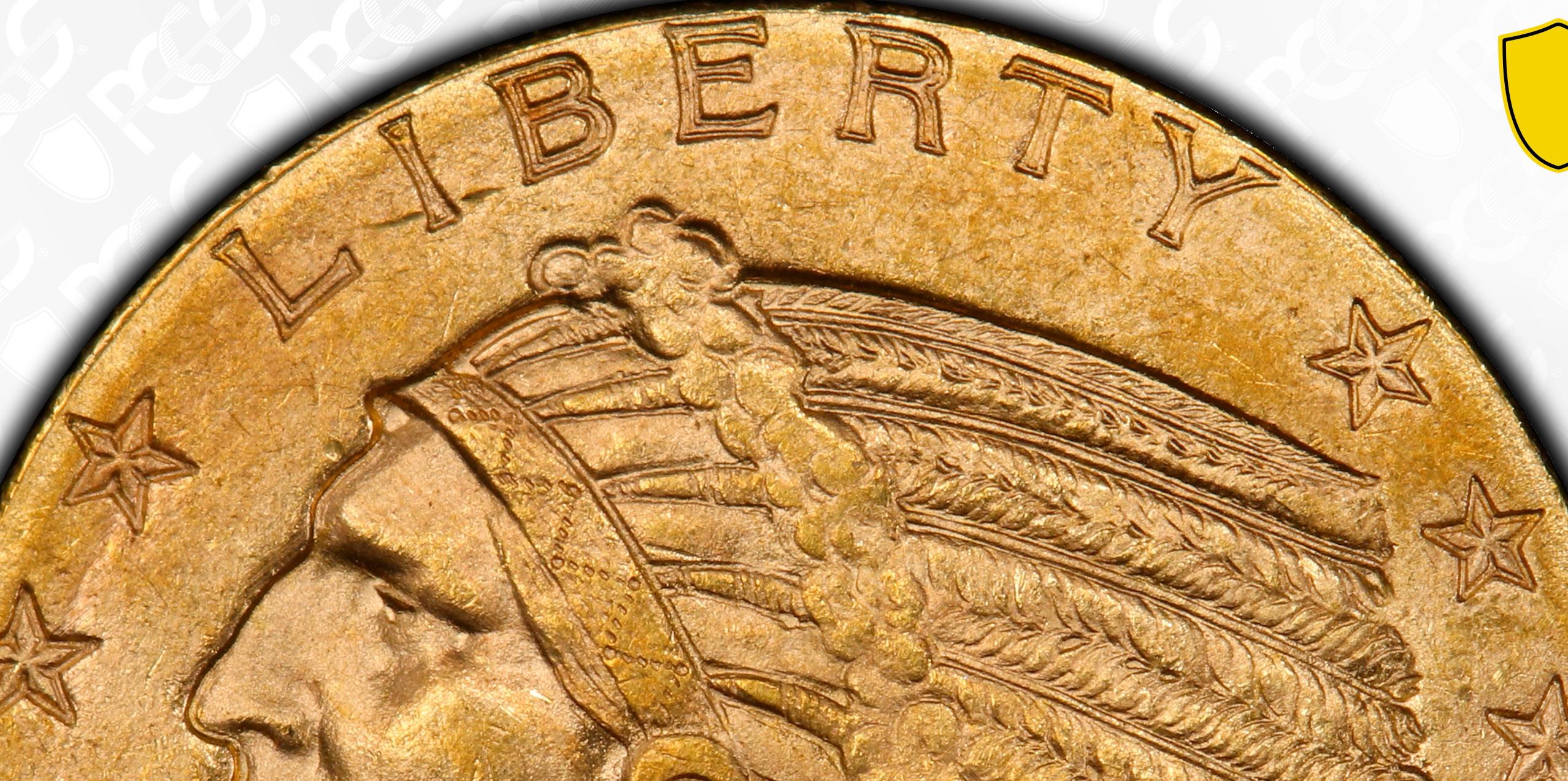

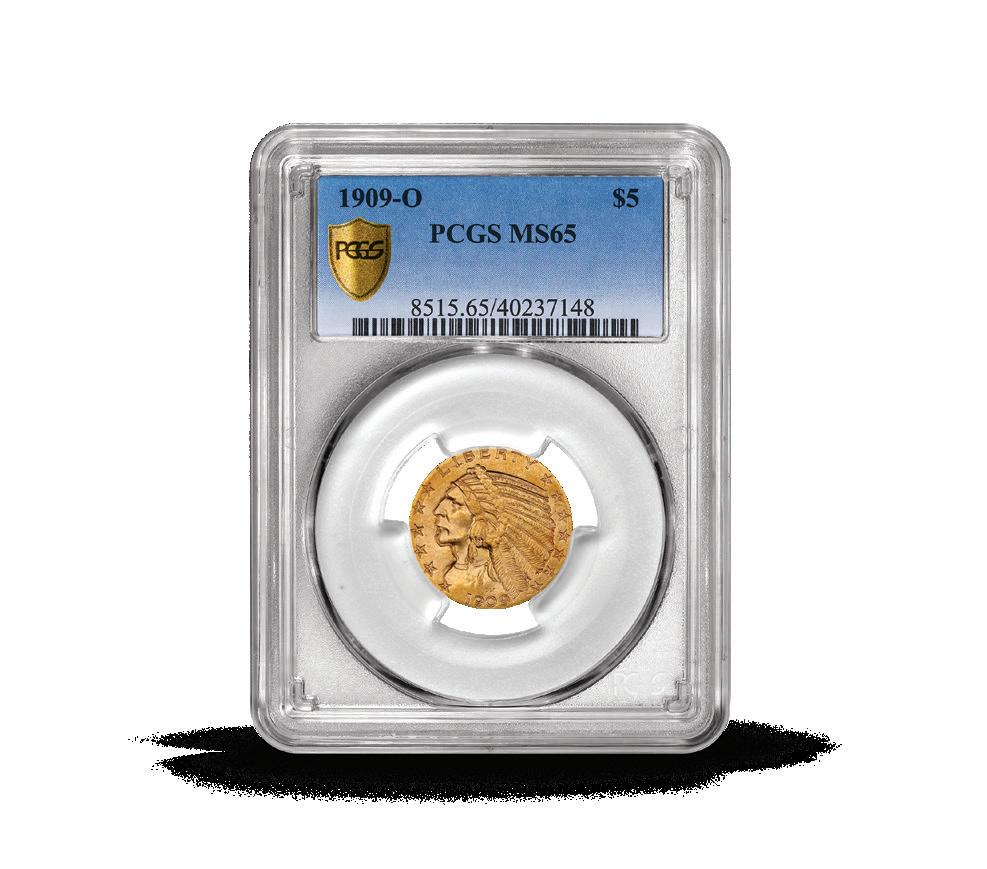
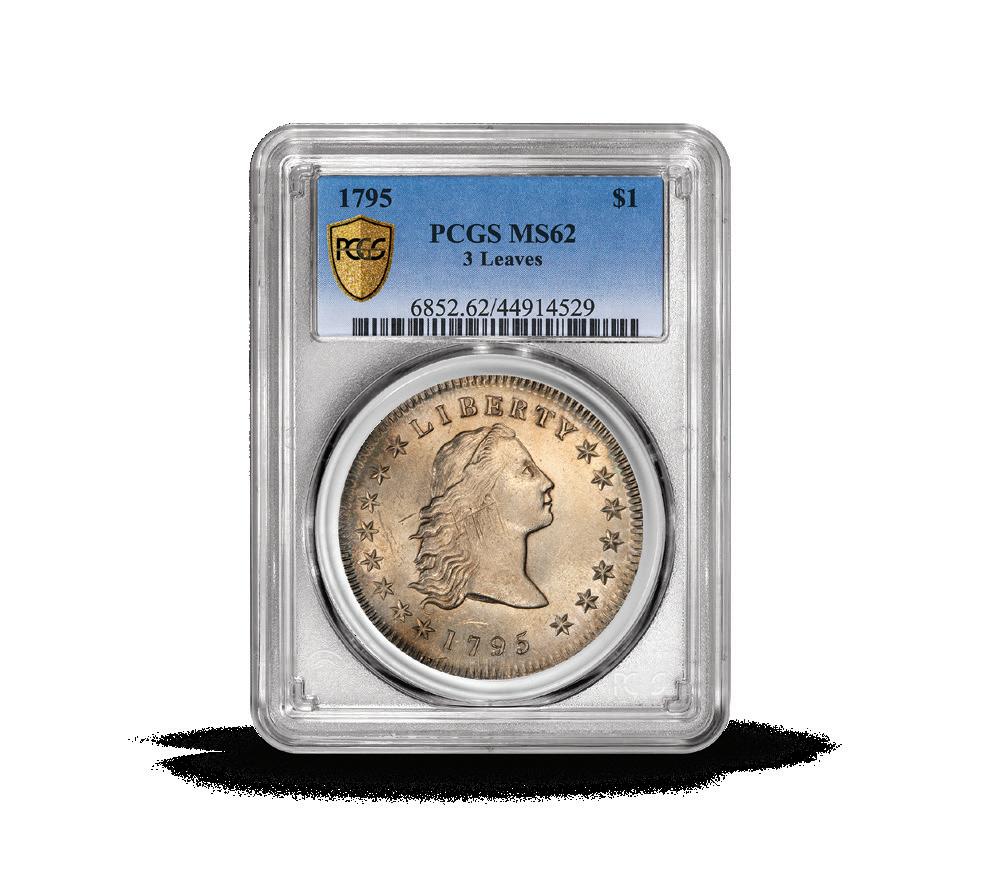
 1909-O $5 PCGS MS65 $715,000
1795 $1 3 Leaves MS62 PCGS $137,500
1867 $2.50 J-595 PCGS PR65RD $18,500
1862 $2 PCGS Banknote AU 50 FR.41 $4,450
1909-O $5 PCGS MS65 $715,000
1795 $1 3 Leaves MS62 PCGS $137,500
1867 $2.50 J-595 PCGS PR65RD $18,500
1862 $2 PCGS Banknote AU 50 FR.41 $4,450
One of the biggest gainers in recent months is the 1969-S Doubled Die Lincoln Cent in PCGS MS66RD, a coin that recently sold at auction for huge money. Courtesy of PCGS TrueView..

At PCGS, we often highlight some of the modern coin market’s top performers based on the PCGS Price Guide changes. In this installment, we highlighted 10 of the top movers and shakers in the coin market from the past three months.
As we’re moving through the second quarter of the year, the modern coin market continues thriving. Many coins keep realizing healthy prices at auction or are selling privately for strong sums of money. Take, for example, the 1969S Doubled Die Lincoln Cent in PCGS MS66RD that sold for an astonishing $601,875 at a GreatCollections Auction on January 22, 2023. The specimen previously belonged to the late Stewart Blay, and his coins brought record prices –sometimes shattering previous price records – proving that the modern coin market is still very strong.

The first coin on the list is a 2007 Missing Edge Lettering Madison Presidential Dollar in PCGS SP68. The PCGS Price Guide value for this coin increased from $125 to $500 in SP68. There haven’t been any recent auction sales for this coin. Yet, after comparing the coin to other similar issues in the series and factoring in its relatively low population of 25 coins in PCGS SP68 (with none graded higher), we determined that the coin was extremely undervalued compared to other coins in the series. This is especially so due to its scarcity and because it is a prominent variety. So we took a conservative approach

MAY - JUNE 2023 59 PCGS MARKET REPORT
DESCRIPTION DESIGN GRADE TODAY'S PRICE PRICE 3 MONTHS AGO GAIN % CHANGE (2007) Missing Edge Lettering Madison Dollar SP 68 $500 $125 $375 300% 1977 Washington Quarter MS 68 $10,000 $2,750 $7,250 263% 1969-S Doubled Die Obverse Lincoln Cent RD MS 66RD $605,000 $200,000 $405,000 202% 2008-P Kennedy Half Dollar Satin Finish SP 69 $250 $100 $150 150% 2007-P Jefferson Nickel Satin Finish, FS SP FS 69 $500 $210 $290 138% (2008) Missing Edge Lettering Van Buren Dollar SP 68 $400 $200 $200 100% 1966 Washington Quarter SMS SP 68 $75 $40 $35 87% 1963-D Lincoln Cent DDO FS-101 (025.8), RB MS 65RB $100 $55 $45 81% 1964 Kennedy Half Dollar Accented Hair, DCAM PR 69DC $45,000 $25,000 $20,000 80% 2013-D Jefferson Nickel FS MS 67FS $150 $85 $65 76%
and increased the price to $500, but the coin may possibly end up bringing more at auction or in the marketplace when and if an example does become available in the near future.
The second coin in the recent gainers list is a 1977 Washington Quarter graded PCGS MS68. Currently, PCGS has graded only one example in MS68, with none grading higher. Therefore, it is no surprise that this coin has not appeared at auction before. This is one of the reasons why it’s difficult to price a coin when there's only one in MS68 – and with no previous auction records available. However, there is a comparative coin, which is the 1982-P Washington Quarter that was also a pop 1 (with none higher) at the time of sale. The coin was sold by Heritage Auctions for $10,200. So, based on a very comparable coin, we adjusted the price of the 1977 Washington Quarter in PCGS MS68, so it is more in line with the price of a similar coin that has sold at auction.

The third entry in this list is a coin that we already touched on earlier in this article – the 1969-S Doubled Die Lincoln Cent graded PCGS MS66RD. This coin also has a PCGS population of one, with none graded higher. The coin was recently sold by GreatCollections for $601,875. Therefore, we
updated the PCGS Price Guide to more accurately reflect this coin’s value in the grade of PCGS MS66RD, bumping the price up from $200,000 to $605,000.
These are just a few of the modern coins that have performed really well in the market over the past three months or so. To view the entire list of all U.S. coins that have performed well, please visit the PCG Price Guide and check out the Price Changes category to see the Top Gainers and Losers.
Jaime Hernandez is an editor for the PCGS
Price Guide and has been a proud member of the PCGS team since 2005. By the time he reached his early 20s, Jaime was successfully buying and selling coins with some of the most prominent dealers and collectors in the country. Email: jhernandez@collectors.com

60 MAY - JUNE 2023 PCGS MARKET REPORT MARKET MOVERS & SHAKERS
• Do business with 650+ pre-qualified dealers from the comfort of your home

• Network with members daily through our easy to use broadcast and messaging system
• Browse the over 3,500 active bid and ask prices at any time
• See 24/7 live spot pricing for trading and investing

• Access the Collectors Corner marketplace free with your CCE membership



Coin Exchange is the largest and most comprehensive dealer-to-dealer numismatic network on the internet.
Certified
NEW QUALIFIED MEMBERS receive their first month FREE! If you are ready to see what our premier dealer-to-dealer network can do for you, contact: Taryn Warrecker Sales Director (949) 435-2102 TWarrecker@collectors.com www.certifiedcoinexchange.com
Remaining Curious
By Vic Bozarth
Numismatics is a hobby that appeals to kids of all ages. Sure the little kids might not “get it” yet, but the older kids have already figured out we’re talking about money here! Regardless of whether you’re a 10-year-old or 70-year-old kid, aren’t we all fascinated by coins?
Generationally, though, we look at things differently. The 70-year-old numismatist most often started their collection with change from paper routes or mowing yards. A Lincoln Cent folder was the first set for so many of these “old” kids, just like me.



Today, kids rarely use change, nor throw papers… And it seems fewer than in my day even mow yards!
There is certainly a disconnect between the ability of the younger kids to develop a love for actually handling coins. How do we bridge that gap? This is a serious concern for me because I love numismatics. How do I as an old “kid” tell the young kids how cool coins are? Will they want to listen? Are they curious?
As a price guide specialist with PCGS, I both review the newest APR data and update U.S. prices as my fundamental responsibilities. Yes, some of it is quite tedious, but as a numismatist I’m blessed to encounter dozens of coins, on a
daily basis, that spark my curiosity. Rabbit holes, anyone?

OK, let’s get serious… What do many of the great collections coming on the market today have in common? Traders and graders.
Fundamentally, I’ve observed some pretty interesting things over my 1,000-plus rare-coin shows. Let me give you the two extremes.
Many of my colleagues in the general marketplace and collector friends have never actually learned to grade, nor understand the specifics of any of the coins they bought and sold. Their primary purpose is buying for less and selling for more. These are traders.
The reality is that traders make our markets possible. Without trades, we would be without prices with which to gauge values. In moving markets, traders are abundant. In stagnant markets, traders often disappear.
On the opposite extreme are the specialists. Not only do they want to learn all the history a particular coin might carry, but they also want to know the difference between a Good and an MS63. Although many specialists are stronger on coin knowledge than grading, I call these graders.
Graders want to know the historic pricing and the nuances
62 MAY - JUNE 2023 PCGS MARKET REPORT
COIN MARKET FUNDAMENTALS
How do we spark numismatic curiosity in young people? Years ago, Lincoln Cents helped bring many into the coin fold. What series does this today? Courtesy of PCGS TrueView.
that determine grade. Graders want to know more than “how much or what can I get?”

Obviously, the majority of numismatists fall squarely in the middle of the trader / grader spectrum. Practicality generally rules the decision for most. I realized early on that knowledge, especially remaining curious, was money in the bank, so to speak. Trading, on the other hand, cuts both ways. Sure, it was fun when you made money, but losing money isn’t so much fun.

You know something else I’ve noticed? Traders come and go. Graders are lifers! Sure, sometimes life gets in the way and we have to put coins on the shelf for a period of time, but while traders often find something they can make more money trading, graders are addicts to their own predilections – numismatics! Graders almost always come back because they’ve always remained curious.
Like with many aspects of life, finding a balance between extremes usually works best. While I love learning specifics about a particular coin, especially surface, strike, and grading nuances, I often get bored past a certain point. I, too, have sought varieties over the decades, but many times that search is little better than diving down a rabbit hole.
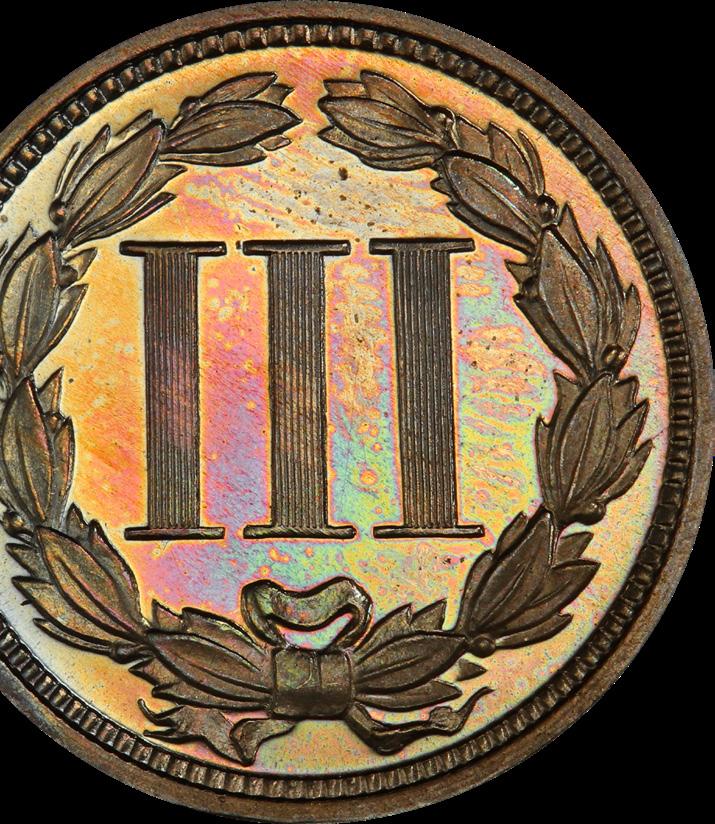
Often the flip side of finding a rare variety was also the
difficulty of finding someone else who cared. Especially in my younger years, I would often read about a coin that held great value if and only if you could find one. The 1913 Liberty Nickel, right?



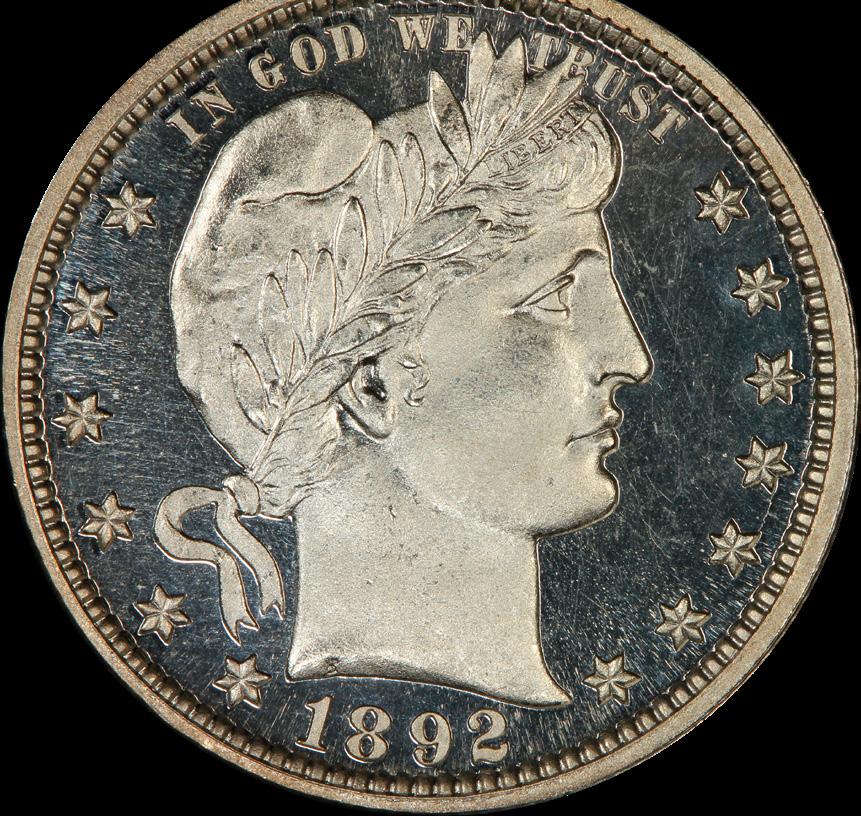
Regardless, experience truly is the best teacher, if you’re willing to listen. We are seeing fabulous collections come to the market bringing record prices because many of those collectors were graders. They built noteworthy collections and learned about the coins they collected. They remained curious.
Fundamentally, don’t we learn more when we’re curious? Great collectors always remain curious!
Vic Bozarth is a familiar face on the bourse floor to many who have attended coin shows over the last five decades. He’s a self-described “coin weenie” who has attended more than 1,000 shows and vast experience both buying and selling many of the finest PCGS coins. His numismatic knowledge as a dealer and collector provides a unique perspective on our industry.

MAY - JUNE 2023 63 PCGS MARKET REPORT COIN
MARKET FUNDAMENTALS — REMAINING CURIOUS
BUYING * SELLING ALL U.S. COINS 702-767-9841 Colton@MerrillCoins.com Instagram: MerrillCoins Visit MerrillCoins.com Colton Merrill - Owner
ADVERTISING INDEX
PCGS SHOW SCHEDULE

MAY 2023
May 24 - 27
PCGS Member Only Show
Onsite Grading Harrah's New Orleans New Orleans, Louisiana
JUNE 2023
June 8 - 10
Whitman Expo Baltimore Summer Expo
Submissions Only
Baltimore Convention Center
Baltimore, Maryland
June 21 - 24
Long Beach Expo: The Collectibles Show
Onsite Grading
Long Beach Convention Center
Long Beach, California
JULY 2023
July 13 - 15
Summer Florida United Numismatists Show Submissions Only Orange County Convention Center Orlando, Florida
AUGUST 2023
August 8 - 12
American Numismatic Association

World's Fair of Money
Onsite Grading
David L. Lawrence Convention Center
Pittsburgh, Pennsylvania
SEPTEMBER 2023
September 7 - 9
Long Beach Expo: The Collectibles Show
Onsite Grading
Long Beach Convention Center
Long Beach, California
64 MAY - JUNE 2023 PCGS MARKET REPORT APMEX 16 Blanchard and Company 24 Bullion Shark, LLC 41 Certified Coin Exchange (CCE) 61 Chris V. McCawley, EarlyCents.com 57 Collateral Finance Corporation 43 Collectors Corner 58 Douglas Winter Numismatics 35 Drake Sterling Numismatics 43 Gray & Sons 19 GreatCollections 3, Onsert Heritage Auctions 6 Larry Shapiro Rare Coins 64 Legend Rare Coin Auctions Inside Front Cover, 1 Long Beach Expo Inside Back Cover, 20 MerrillCoins 63 Paradime Coins Cover, 51 PCGS 23, 48, 49 Rinkor Rare Coins, LLC 60 Stack's Bowers Galleries 4, 41 Sullivan Numismatics, Inc. 39 U.S. Coins 32, Back Cover VegasCoinDealer.com /VCD Auctions 37 Witter Coin 30
PCGS.com/Shows
Sell Your Coins AND BANKNOTES for the Highest Bid at GreatCollections

• Since 2011, Collections has sold over 900,000 certified coins and banknotes
• Fast, safe and the lowest fees of all major coin auction companies
• 0% Seller’s Fee for coins/ currency over $1,000
• Free appraisals and estimates
• U.S. & World Coins, Classics & Moderns, Currency
• The fastest turnaround and payment
• Join tens of thousands of active bidders and sellers
1951-S Franklin Half Dollar PCGS

for0%Seller’sFee overCoins/Currency $1,000!
MS66FBL Sold $3,912 PCGS Price Guide $650
Consign in Two Easy Steps
1. Use the consignment form at the right and fill out your information.
2. Mail the completed form with your consignment to:
GreatCollections
17500 Red Hill Avenue, Suite 160 Irvine, CA 92614
We will contact you the day your package arrives and update you when your items are posted on our website.
Any questions? Please call us at 1-800-442-6467 or e-mail info@GreatCollections.com
Free Coin Appraisals


If you are unsure of the current market value of your collection or holdings, please contact us and we will give you our assessment at no charge.

Not Ready to Sell? Join
Visit www.GreatCollections.com to view our current auctions, create a saved search/wantlist, track our extensive prices realized and much more. It’s free to register and takes only a few minutes.
GreatCollections as a Bidder!
VISIT www.GREATCOLLECTIONS.com 1.800.442.6467
Ian Russell #785
PCGS
1954-D Lincoln Cent PCGS MS66BN CAC Sold $5,062
Price Guide $10
PCGS
1906 Barber Quarter PCGS MS66 CAC Sold $5,343
Price Guide $1,300


ConsignmentInformation
Certified Coins: GreatCollections welcomes coins graded by PCGS, NGC (NCS) and ANACS. Please remove all labels/stickers adhered to holders.

Raw Coins: If your coins are not graded, please use our Raw Coin Consignment Form. GreatCollections extends our discounted rates for coin grading directly to members.
Insurance: From the moment your coins arrive at GreatCollections, they are covered by our extensive insurance policy with Lloyd’s of London... another benefit provided to all consignors at no cost.
Values: If you are unsure of coin values, please leave this field blank. We review all coins that are consigned and will assign values and minimum bids accordingly.
Listing Fees: Our listing fees are based on the following schedule and are charged the first time the coin is listed at GreatCollections.
Minimum Bid Listing Fee
$1-$99 $3
$100-$999 $5
$1,000 and up $10
Up to Five Listings for One Fee: For one listing fee, GreatCollections will relist any coin that doesn’t sell, up to a maximum of five times without any additional listing fees. If you do not want your coins relisted, please let us know under “Special Instructions” on the reverse of this form.
Cash Advances: We offer generous cash advances for all consignments at a competitive interest rate. Checks can be sent via overnight Fedex or Express Mail within 24 hours of your coins arriving at GreatCollections. Please check the box on the reverse of this form (below the signature line) and we will contact you as soon as we have reviewed your coins.
Timing and Scheduling: Coins are generally listed on our website within 7-21 days of arriving at GreatCollections. If you consign duplicates of the same year, denomination, grade and grading service, we will typically split the coins over multiple days of auctions. Once coins are entered in our system, you can view
ConsignorTerms & Conditions
1. Consignor agrees that the Auction shall be conducted online by GreatCollections according to the Terms and Conditions published at www.greatcollections.com/terms. This agreement is subject to Arbitration.
2. Consignor warrants that: (1) Consignor is the legal owner of and has full title and interest in the coins/items consigned to GreatCollections; (2) all coins/items consigned to GreatCollections are free and clear of any liens, encumbrances, security interests or contract rights restricting the unconditional right to sell all rights, title and interest in and to such coin/item; and (3) all consigned coins/items are authentic and in respect to certified coins, holders have not been tampered with or resealed.
3. Consignor agrees to pay GreatCollections a Listing Fee for each coins/items offered by Auction and for coins/items sold, a Seller’s Fee. All fees are detailed on the reverse of the Consignment Agreement.
4. In the event that your coins do not sell in their first Auction, GreatCollections agrees to relist coins/items up to four additional times. There will be no Listing Fees charged for these four additional relistings. Should you prefer your coins not to be relisted, please note this in the “Special Instructions” box on the Consignment Form.
5. Consignor acknowledges that the Hammer Price is the final bid price accepted by the Auctioneer. The Hammer Price does not include the Buyer’s Fee, which GreatCollections retains in full.
6. GreatCollections has the right in its sole discretion to reject any Consignment, to cancel any Auction, to postpone or change the date/time of Auction and/or to rescind any sale. GreatCollections also reserves the right in its sole discretion to cancel or reject any bidder from bidding, when we believe it is not in the Consignor’s and/or GreatCollections’ best interest.
7. A Consignor is able to list a Minimum Bid on every coin/item consigned, according to the three options listed on the Consignment Form. It is up to the Consignor to verify that the correct Minimum Bids are entered as soon as their coins/items are uploaded to the GreatCollections website. Any corrections should be reported as early as possible before the end of the Auction. This Minimum Bid amount is disclosed on all items/coins listed at GreatCollections. Consignor may not withdraw any coin/item for any reason.
8. If the successful bidder or buyer is in default and GreatCollections is not satisfied that the amount due for any particular Consignor’s lot[s] will be paid in full, GreatCollections reserves the right to take one or more of the following actions: (1) declare the sale null and void and return the coins/items to the Consignor; (2) declare the sale null
your coins by logging into MyGC and clicking on “Items Pending” or “Currently Selling”.
Currency/Paper Money: GreatCollections also auctions certified currency and paper money graded by PCGS and PMG, together with our exclusive Grade & Auction program offering discounted grading rates. Please use our currency consignment forms.
CAC: CAC is a third-party grade verifier founded by John Albanese that reviews PCGS and NGC-graded coins (excluding moderns). GreatCollections is an authorized submitter and can arrange CAC to review your coins prior to auctioning. The process takes about 10 days. Cost is $15 for coins valued up to $10,000, $30 for coins valued up to $25,000 and $50 for coins valued at over $25,000.
Minimum Bids: We offer three convenient ways to set Minimum Bids at GreatCollections.
1. You may select GreatCollections to establish a Minimum Bid based on our knowledge of the coin market. We usually set opening bids at 70% of what we believe the coins are worth in today’s market. This is our recommended option that we have found to generate the most bidding activity while protecting you with a Minimum Bid.
2. You may select a percentage of the Values you have listed on the reverse of this form to use as Minimum Bids. Please check either the 50%, 65% or 80% option.
3. You may select that all coins start at a Minimum Bid of $1. This is recommended for liquid/popular coins and is used regularly by dealers, investors and representatives of estates.
Regretfully, we cannot accept consignments where the Minimum Bids are higher than 80% of their listed value. If you have any questions regarding setting Minimum Bids, please call us at 1.800.44.COINS (+1.949.679.4180) or e-mail info@GreatCollections.com.
Seller’s Fees: Our Seller’s fees are a low 5% for coins up to $1000, and 0% for coins over $1,000.
Consignment Proceeds: Checks are mailed within 30 days of your coin(s) selling. To confirm the payment date, please login to your account at GreatCollections, click on MyGC and “View Consignor Statements”.
and void and reoffer the coins/items in another Auction; and/or (3) proceed against buyer on behalf of Consignor. In addition, GreatCollections offers a return privilege to Buyers. Should your coin/item be returned, we will cancel the sale and relist your item. In the event that GreatCollections cancels the sale of your coins/items or your coins/ items are returned, all Listing Fees and Seller’s Fees will be refunded to Consignor.
9. If you consign raw coins/items to GreatCollections, we will send your coins/items to a major third party grading service such as PCGS, NGC and/or ANACS. For more information, please refer to the Raw Coin Consignment Form, which can be downloaded at www.greatcollections.com/forms.
10. GreatCollections shall remit to Consignor, within 30 days after the close of the Auction, the net proceeds, which equals the Hammer Price less Seller’s Fees, Listing Fees, Interest for Cash Advances, other monies owed to GreatCollections by Consignor and Cash Advances Principal (in order). In the event the Consignor’s sales do not exceed fees or monies owed to GreatCollections, the Consignor agrees to pay GreatCollections all monies owed within seven days of invoice date. In certain instances, an introductory commission may be paid by GreatCollections to an agent of Consignor for referring the Consignment to GreatCollections.
11. GreatCollections will provide insurance for loss or damage for consigned coins while in the possession of GreatCollections and while any are being shipped back to the Consignor, subject to certain terms and exclusions (such as Earthquake coverage). In the event of an insurance claim, our insurance carrier will pay you the Fair Market Value, less the Seller’s Fees and Buyer’s Fees, based on the total insurance proceeds. This payment to you by the insurance carrier shall completely satisfy our obligations regarding the Consignments under this Agreement.
12. Arbitration. Any claim or dispute arising out of the sale of coins/items by GreatCollections shall be settled by arbitration between the parties in accordance with the rules of the Professional Numismatists Guild (PNG) or if the PNG cannot or will not hear the matter, by the American Arbitration Association (AAA). Any claim must be commenced within three months of the Auction date or Buy Now confirmation or the claim is waived.
13. This contract is the entire Agreement between the parties and supersedes all prior Agreements. The warranties and representations contained in this Agreement survive the date of execution by each party herein and the performance of all terms and conditions contained in this agreement. This Agreement shall be governed by the laws of the State of California.
Ian Russell President/ Owner
 Raeleen Endo Customer Service Director/Owner
Raeleen Endo Customer Service Director/Owner

Contact Us: GreatCollections Coin Auctions 17500 Red Hill Ave. Suite 160 | Irvine, CA 92614 Phone: 1.800.44.COINS | 1.949.679.4180 Email: info@greatcollections.com | www.GreatCollections.com
0523



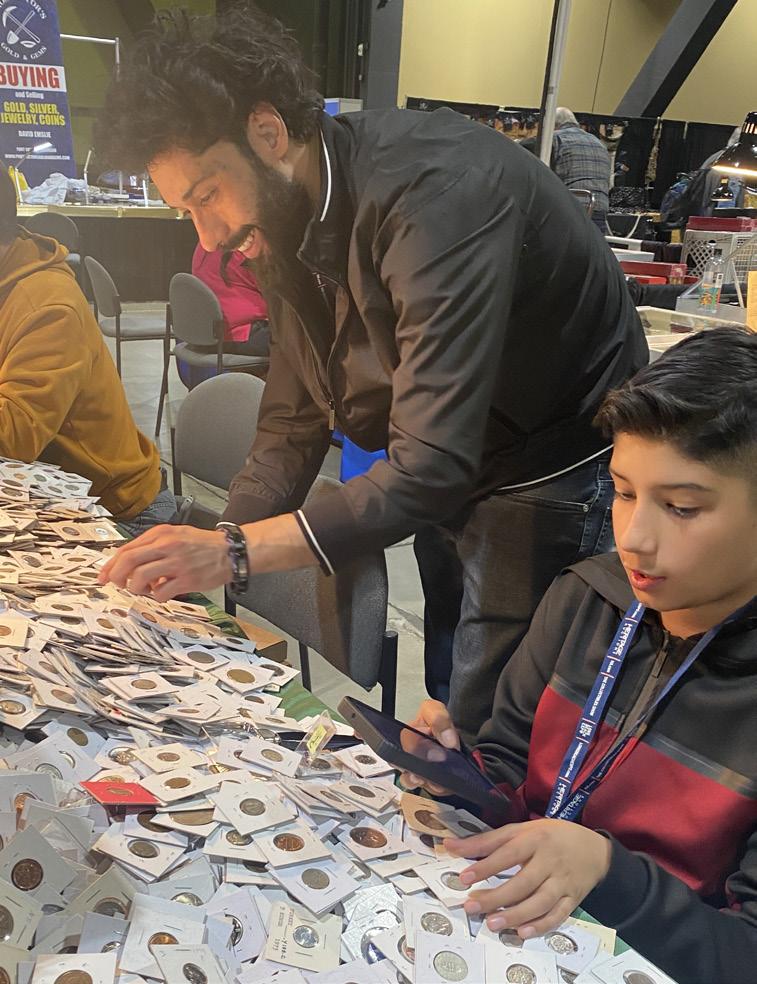

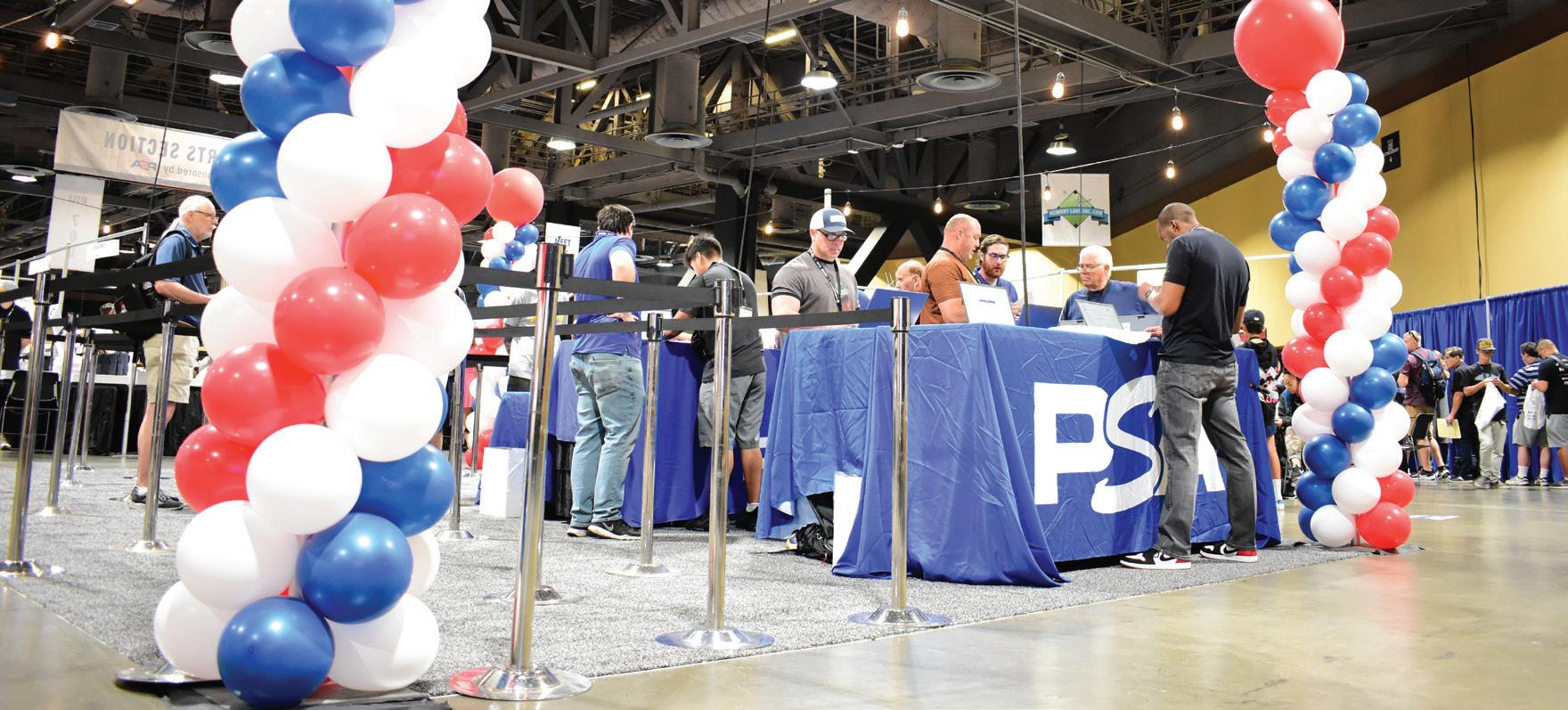
Find friendly Customer Service Reps at the Submission Lounge Kids Treasure Hunt on Saturday - Answer trivia questions at each stop and earn prizes along the way Thousands of U.S., World, and ancient coins to discover Onsite Grading from PCGS! Coin, Banknote, and Sports Meet the Expert Sessions Onsite Grading from PSA! June 22 - 24, 2023 LongBeachExpo.com Calling all collectors! There's something for everyone at the Long Beach Expo. Get Tickets!
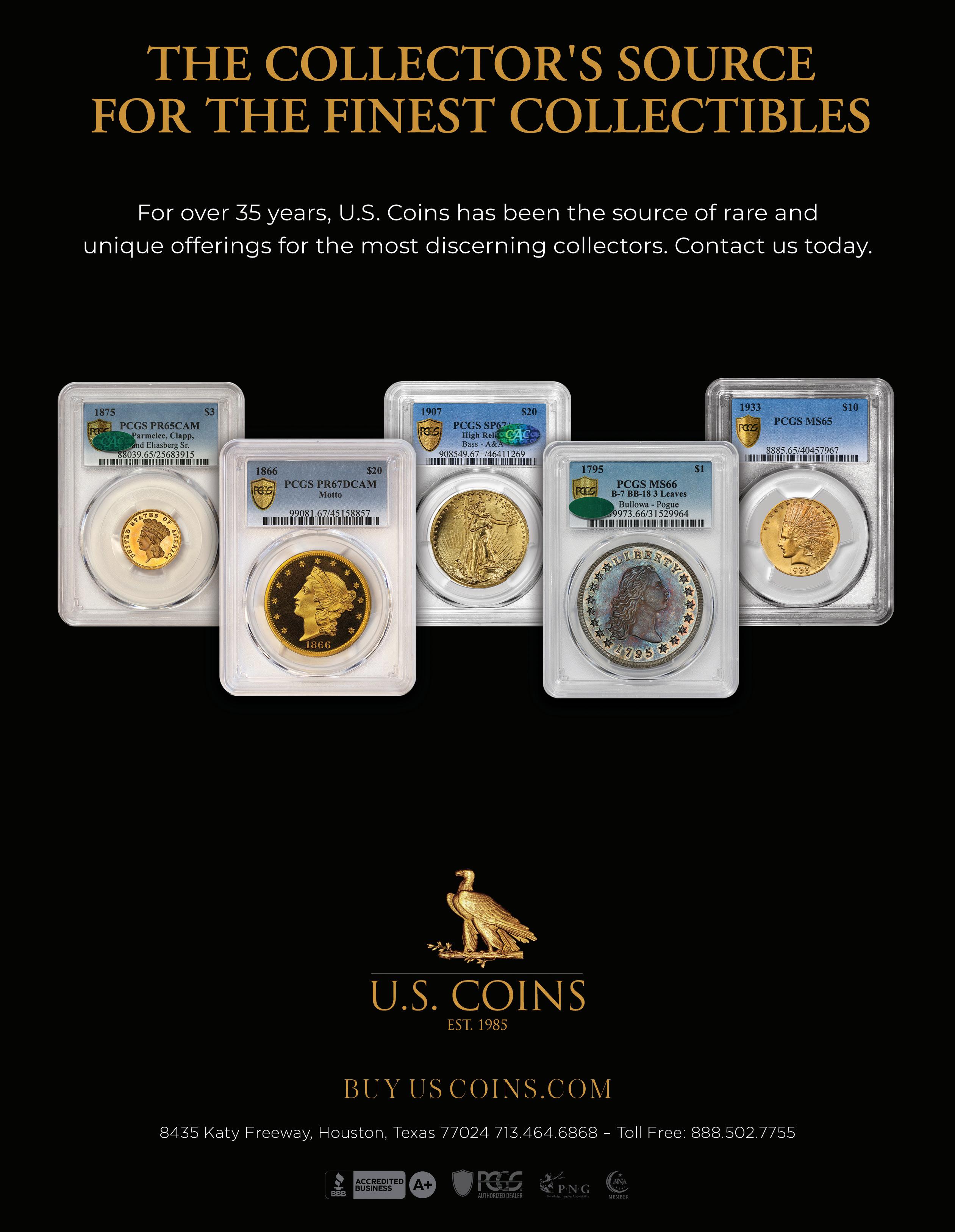

































 By Joshua McMorrow-Hernandez
By Joshua McMorrow-Hernandez






































 By Sanjay Gandhi
By Sanjay Gandhi






 By Peter Anthony
By Peter Anthony








 By Hunter Hicks
By Hunter Hicks











 By Jaime Hernandez
By Jaime Hernandez
























 By Philip Thomas
By Philip Thomas




































































 — Chris Victor McCawley
— Chris Victor McCawley






 1909-O $5 PCGS MS65 $715,000
1795 $1 3 Leaves MS62 PCGS $137,500
1867 $2.50 J-595 PCGS PR65RD $18,500
1862 $2 PCGS Banknote AU 50 FR.41 $4,450
1909-O $5 PCGS MS65 $715,000
1795 $1 3 Leaves MS62 PCGS $137,500
1867 $2.50 J-595 PCGS PR65RD $18,500
1862 $2 PCGS Banknote AU 50 FR.41 $4,450





























 Raeleen Endo Customer Service Director/Owner
Raeleen Endo Customer Service Director/Owner























